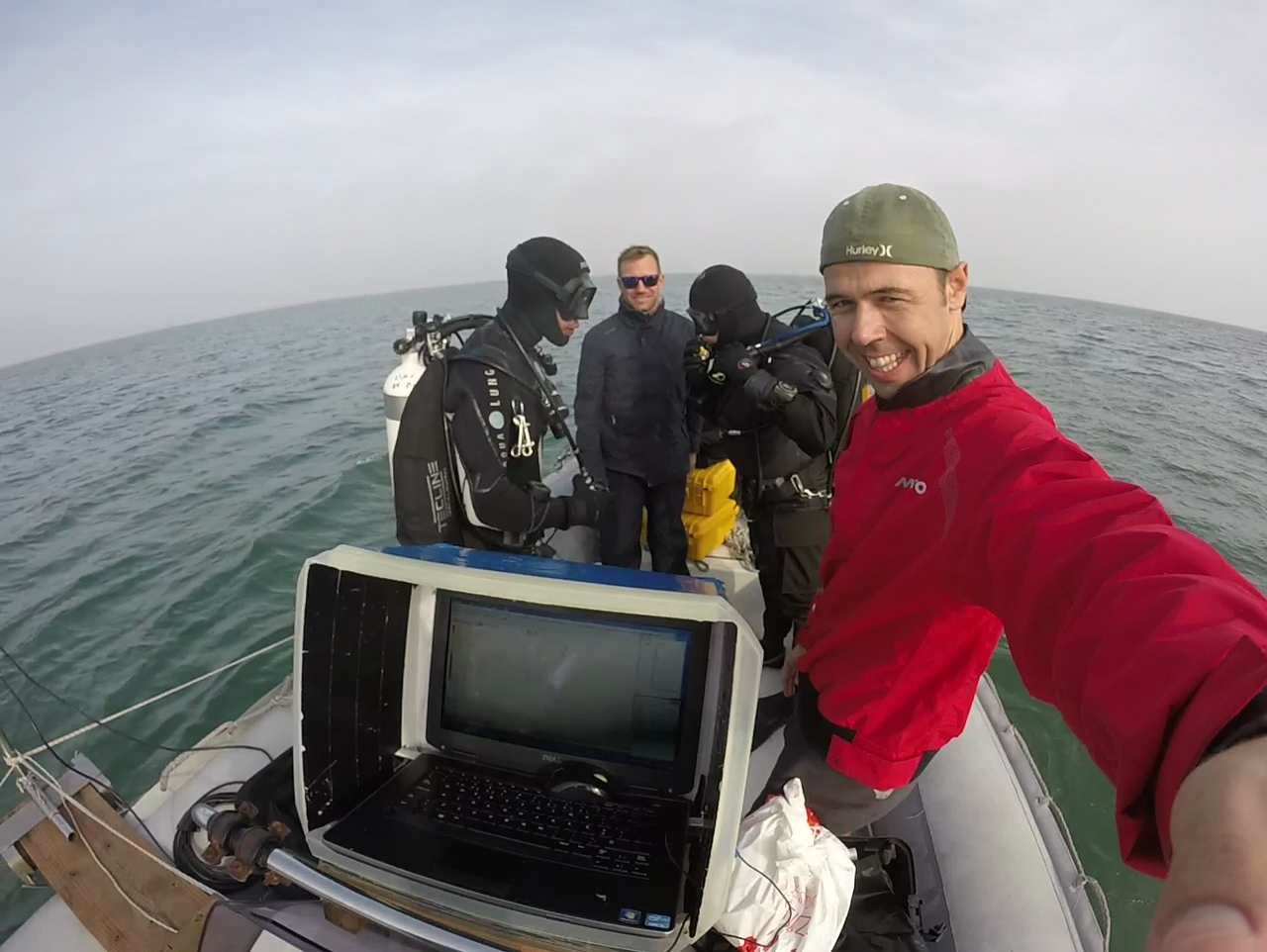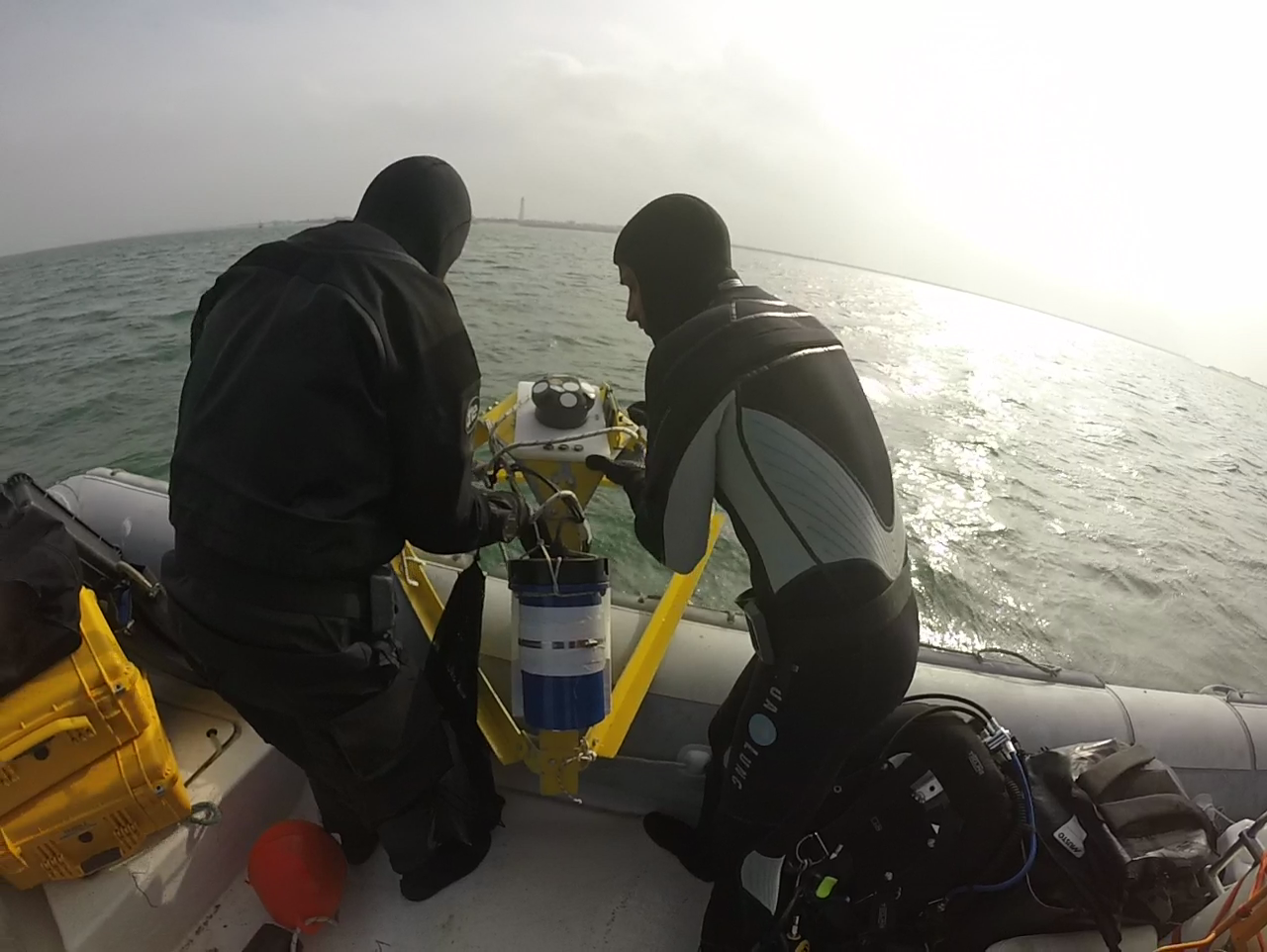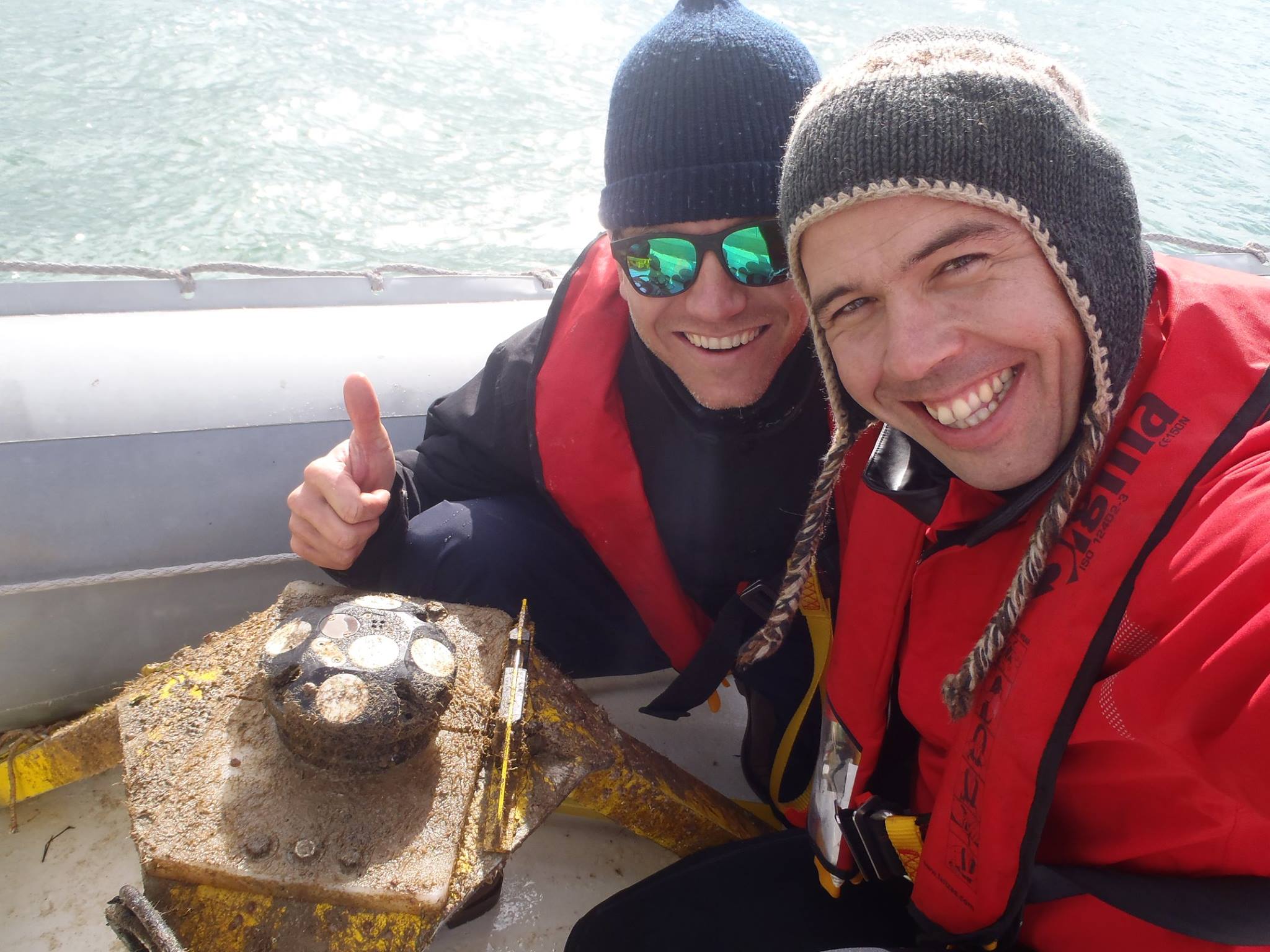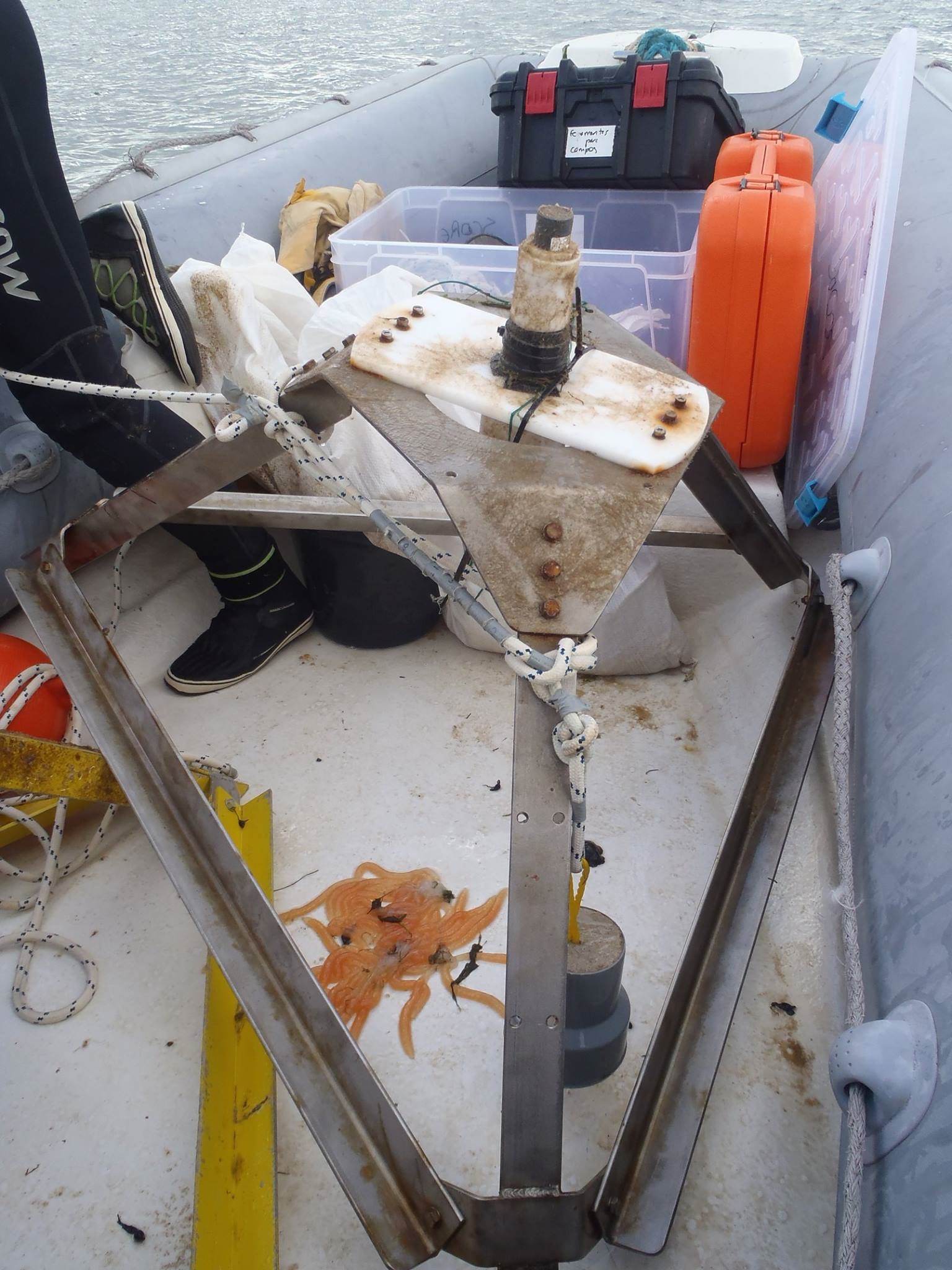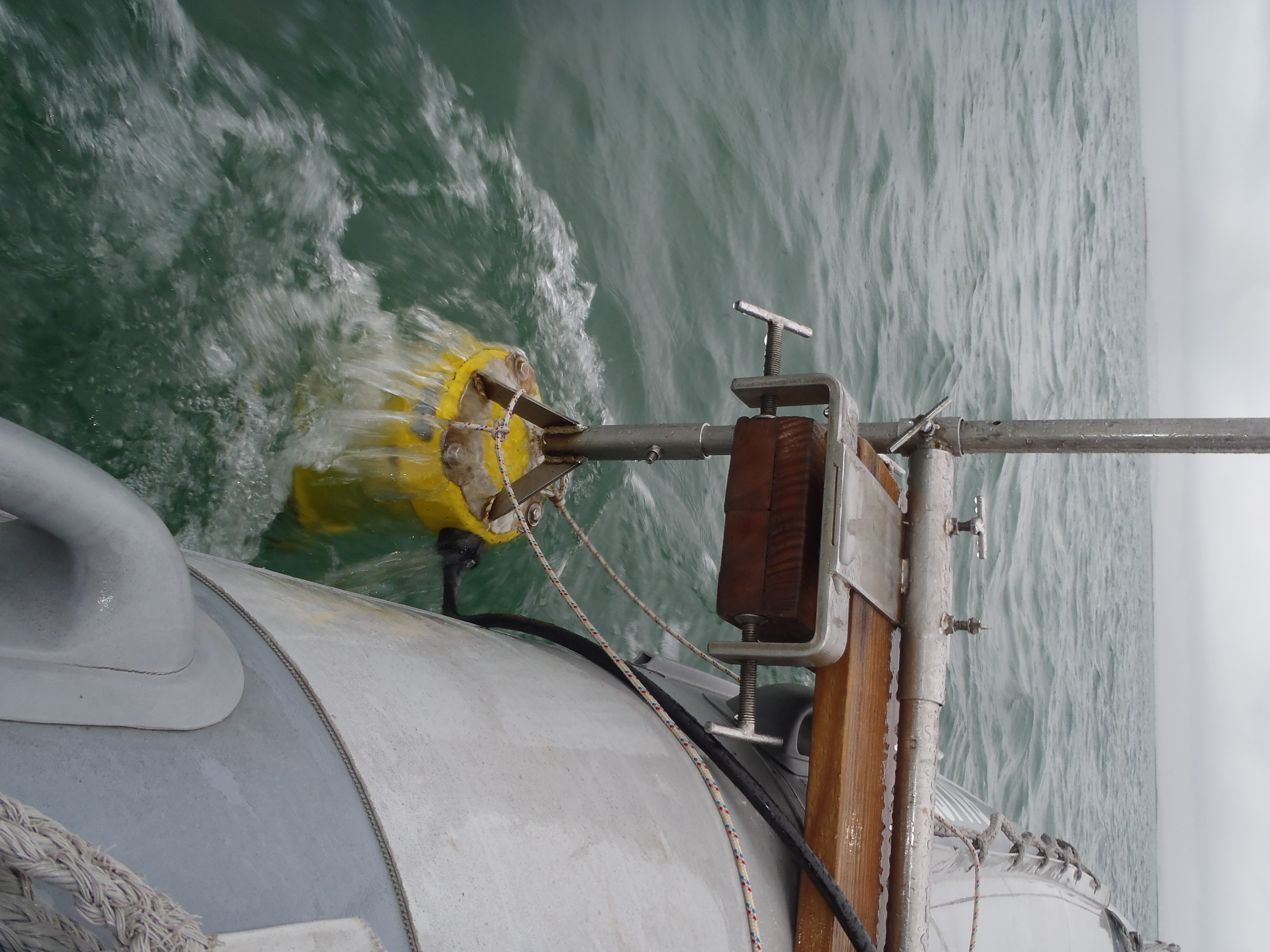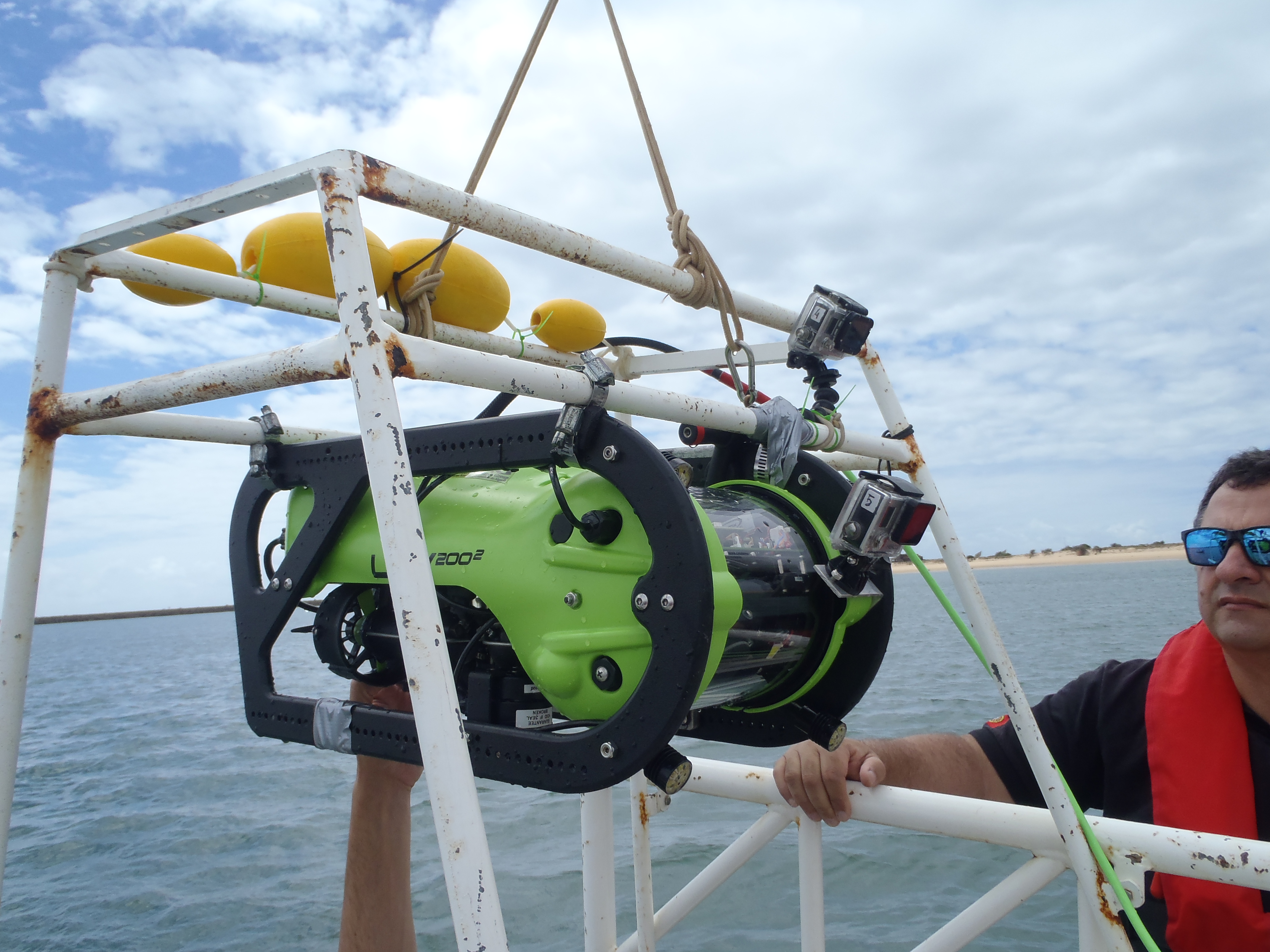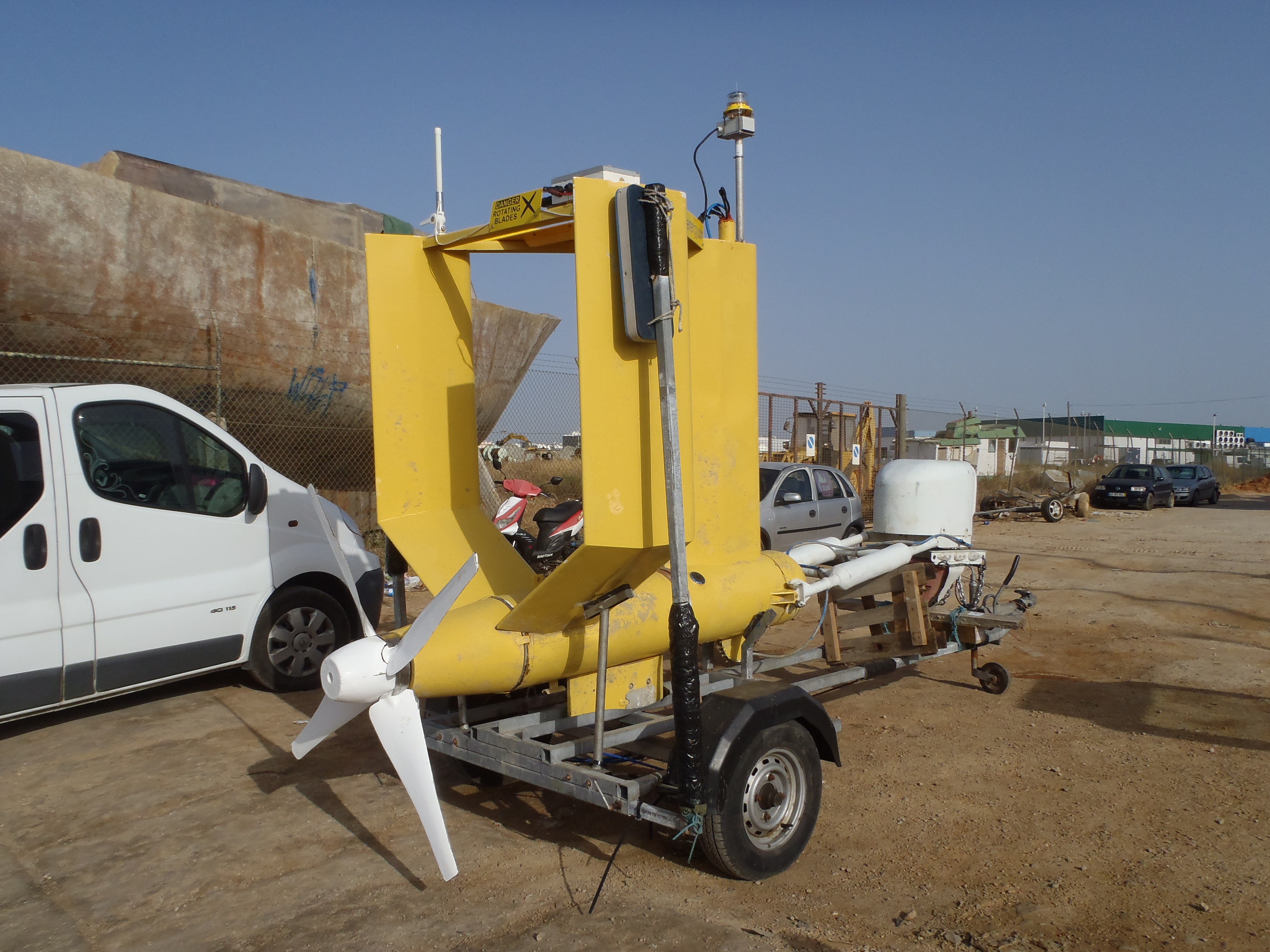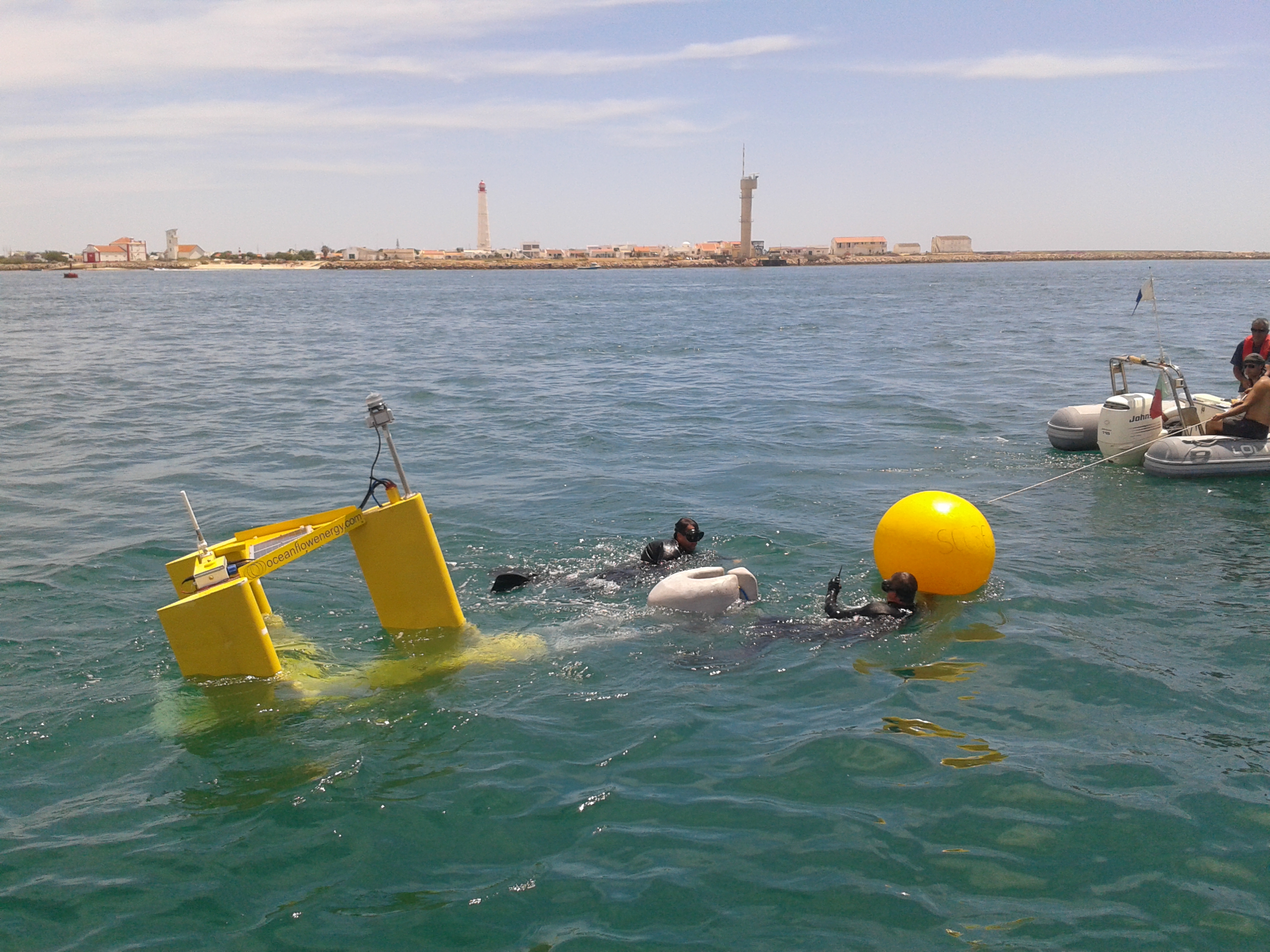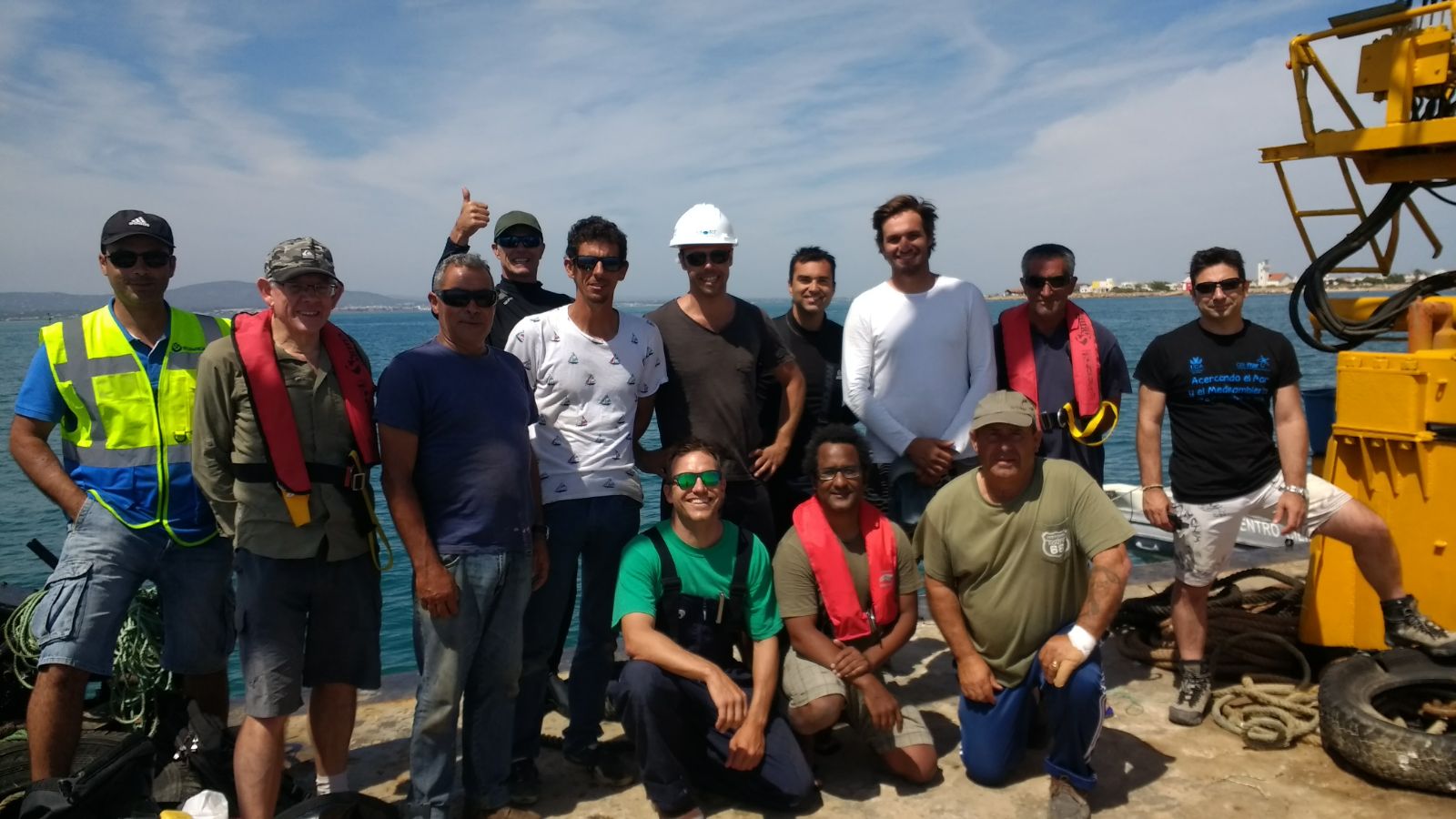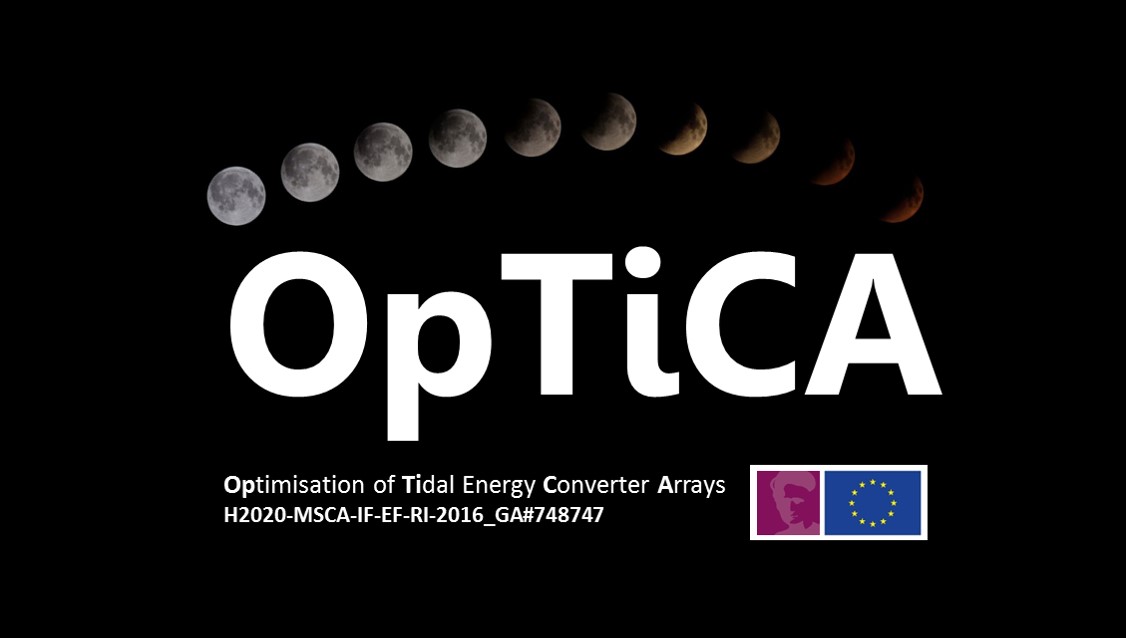

This project has received funding from the European Union’s Horizon 2020 research and innovation programme under grant agreement No 748747
It has been a great honour and experience being a Marie S. Fellow. During the last two years I had the opportunity to obtain new skills, participate in several projects, collaborate with other research intitutions and private companys. The marine renewable energy sector, specifically the tidal energy sector, is a very promising bussines that will provide lots of GWh of clean energy but there is still a long way to make a it reliable and competitive. OpTiCA project has contributed with a little grain to achieve this goal and little by little we will get there...
I want to thank the Centre of Marine and Envrinmental Research (CIMA) from the University of Algarve (UALG), where the project took place, and the researchers Dr. André Pacheco and Prof. Óscar Ferreira for their support and help to gain this fellowship as well as for their camaraderie and advises during the execution of the project. I also want to thank all the research team and technicians of CIMA and UALG that I met during this period, with who I collaborated, help me with administrative burocracy or just share some time. I will allway take you with me! Special thanks for Graeme Mackie and Prof Ian Master for having me in their research centres, where I did very valuable secondments. Finally, I will like to thank the EU Comission for supporting this grant.
During the ICCS 2019 conference, I will be presenting my research titled "Surrogate-based optimisation of tidal turbine arrays: A case study for the Faro-Olhão Inlet" on the workshop session Computational Optimization, Modelling and Simulation held in Room 1.4, from 14:20 - 16:00 on June 14th.
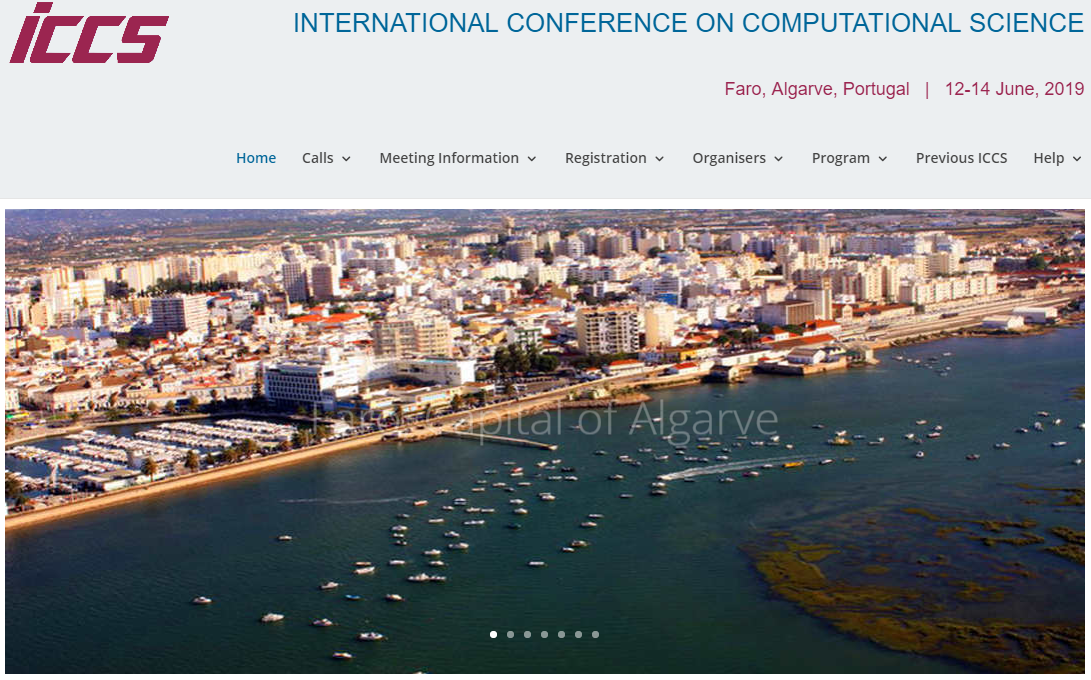
The objective of this outreach activity consists in promote knowledge of marine renewable energies to the general public. For this purpose, in collaboration with the Centro de Ciência Viva do Algarve (CCVAlgv), a training course for elementary school professors is offered. The training course will introduce in a general and simple manner the most common types of marine renewable energy, their degree of development, what are their advantages and disdavantages, as well as an description of the OpTiCA and SCORE projects that have been developed at the Ria Formosa.
It follows the flyer of the event:
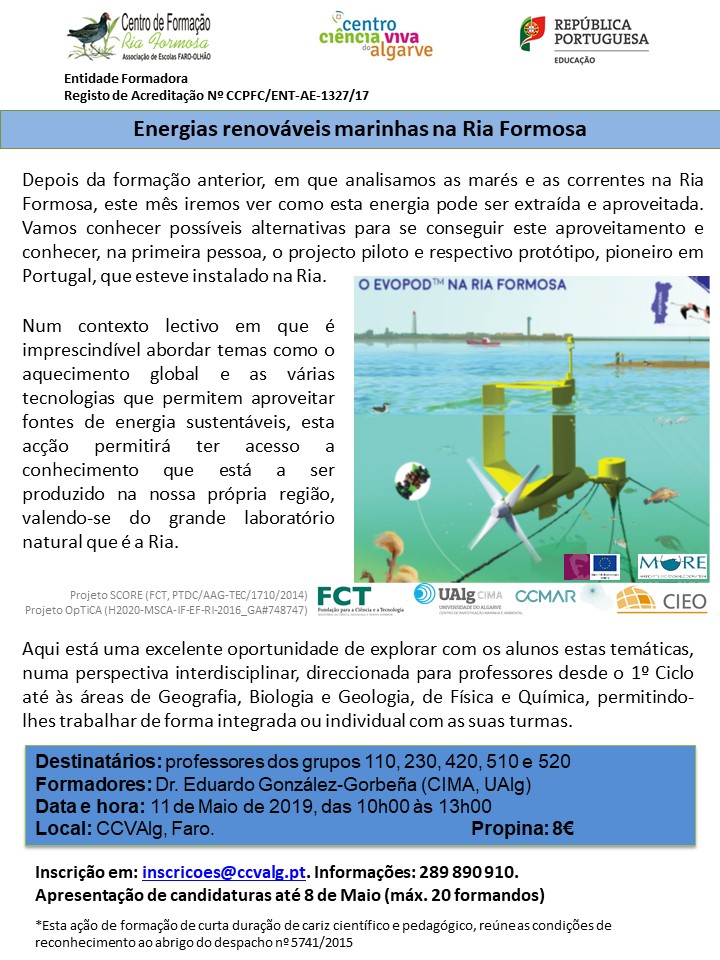
It follows some pictures of the event:
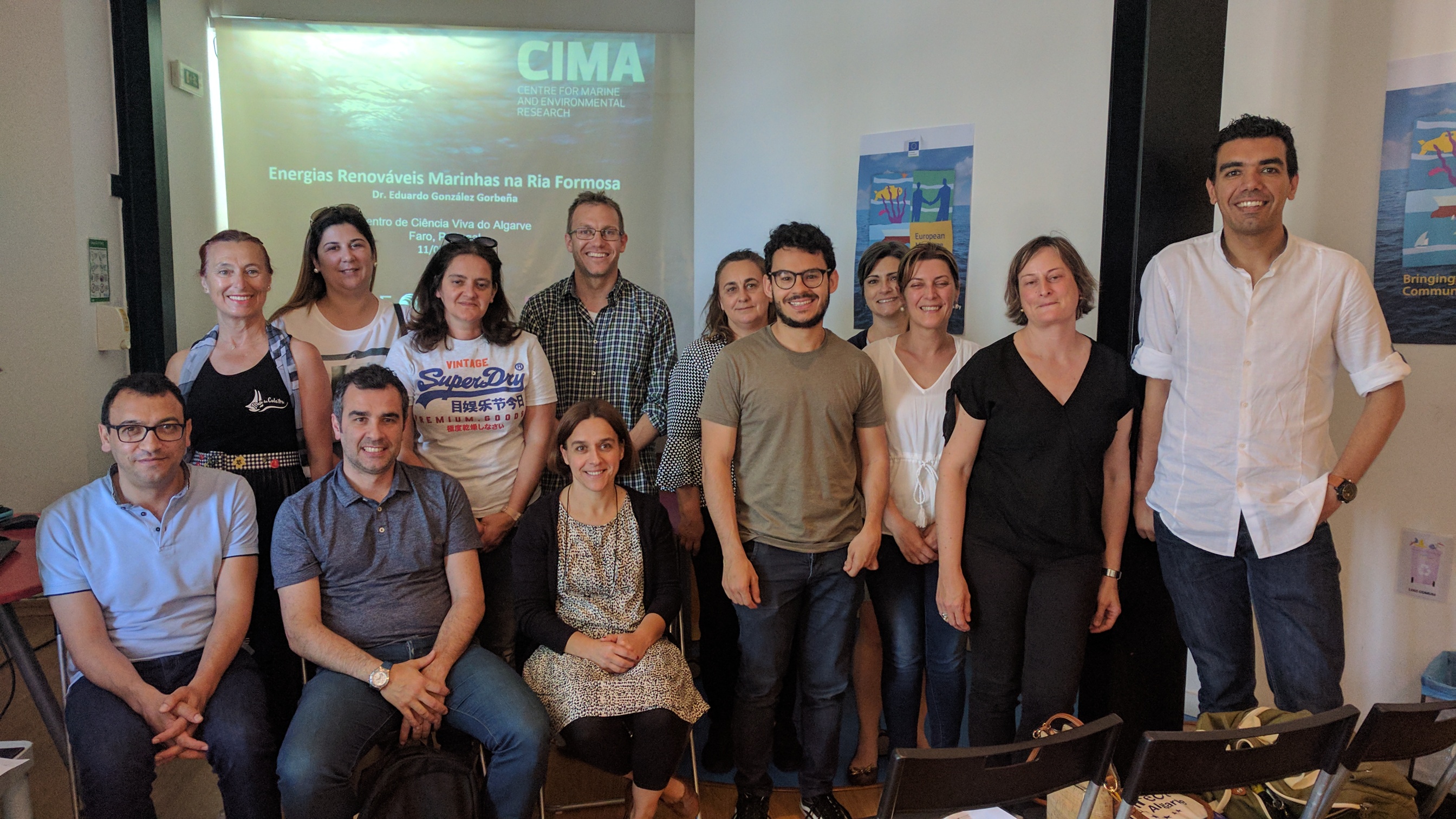
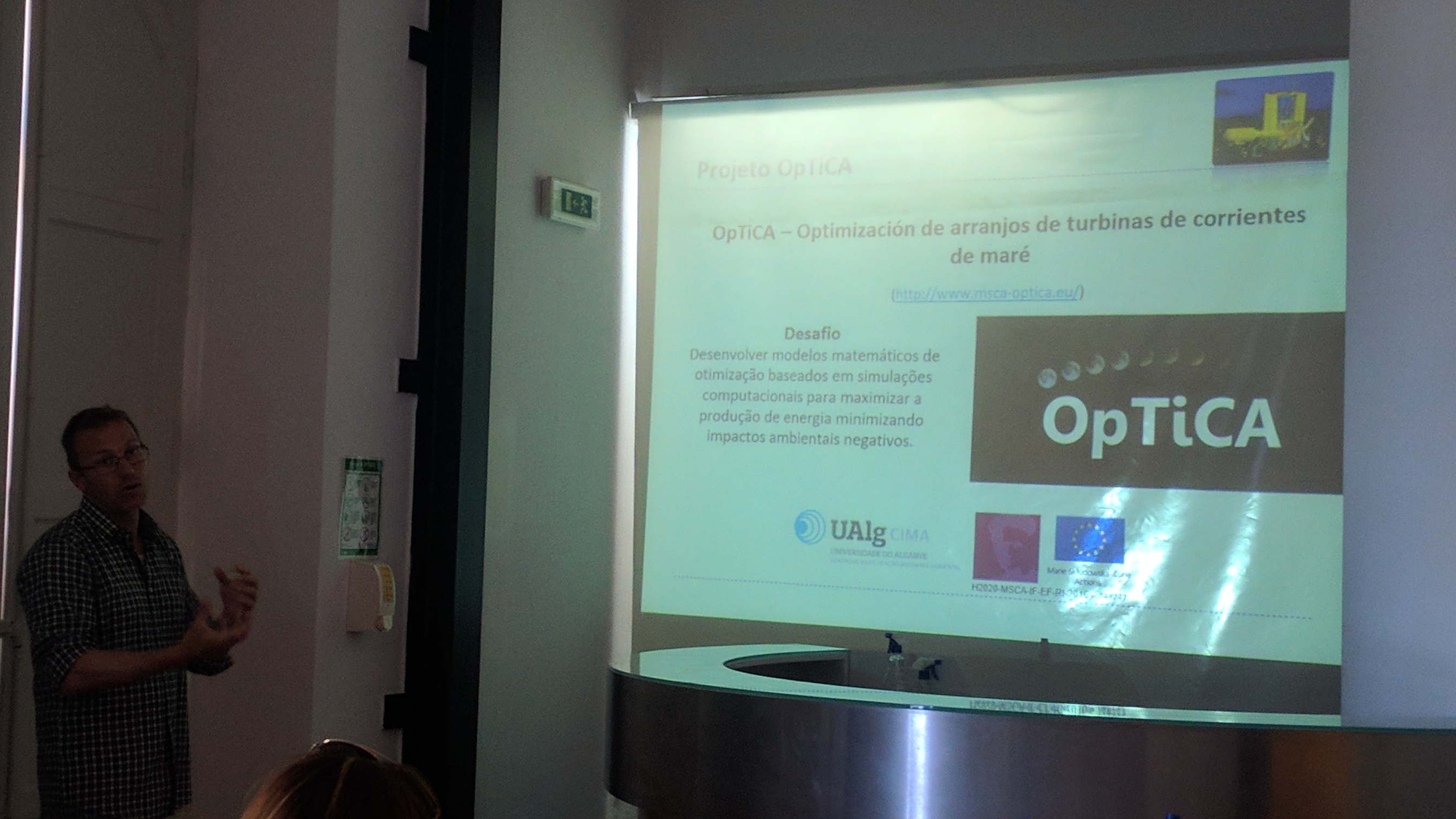
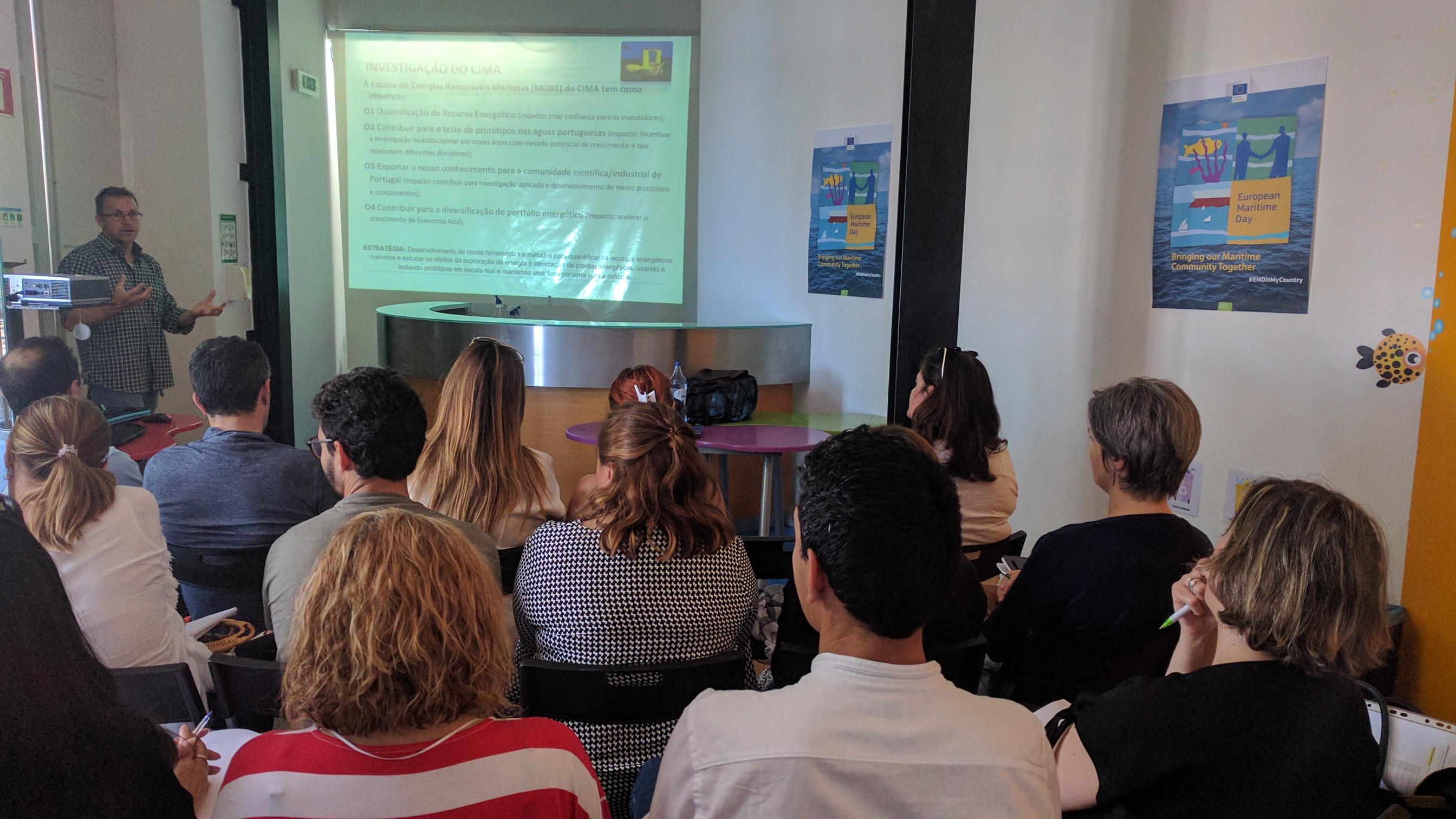
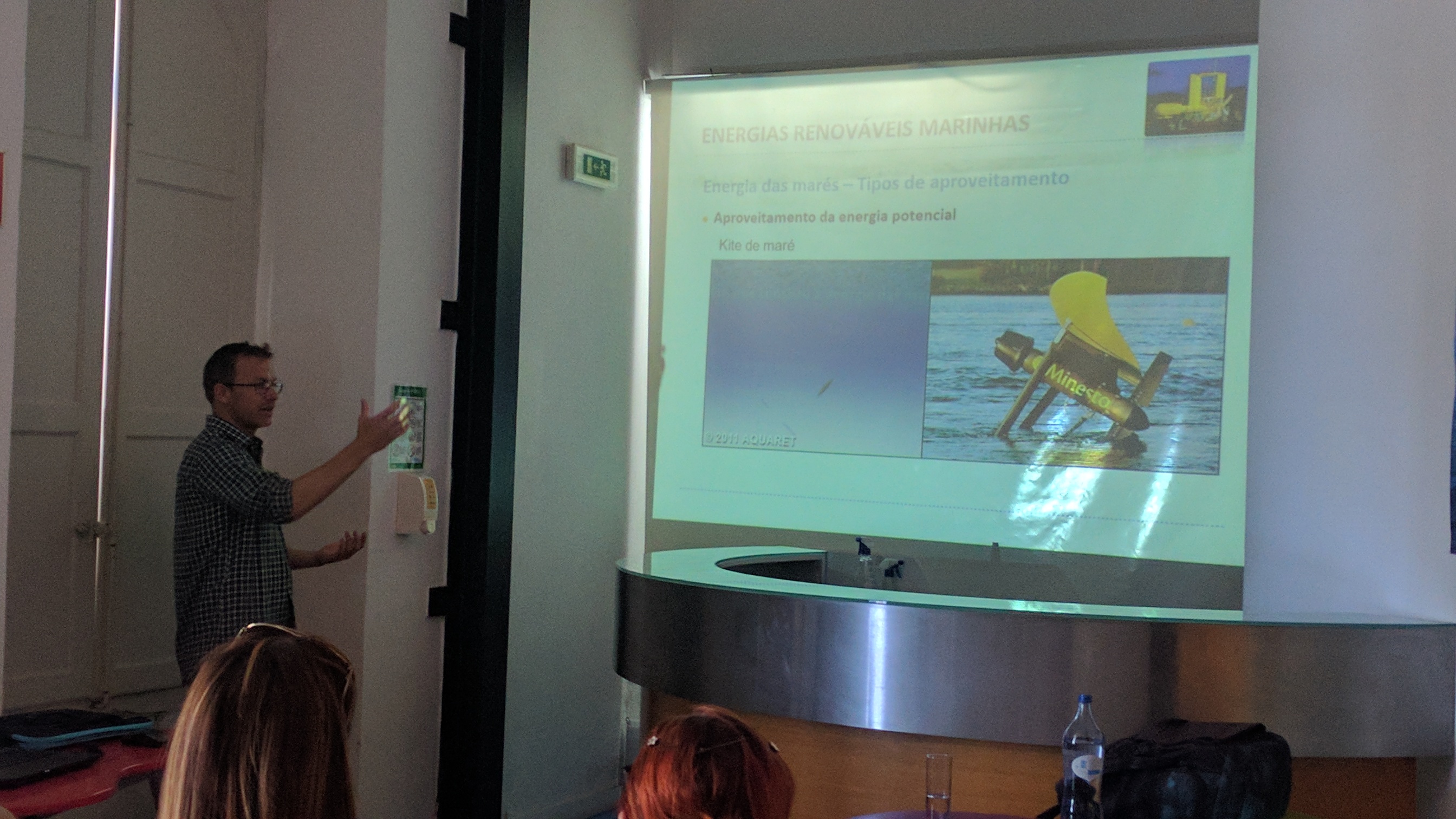
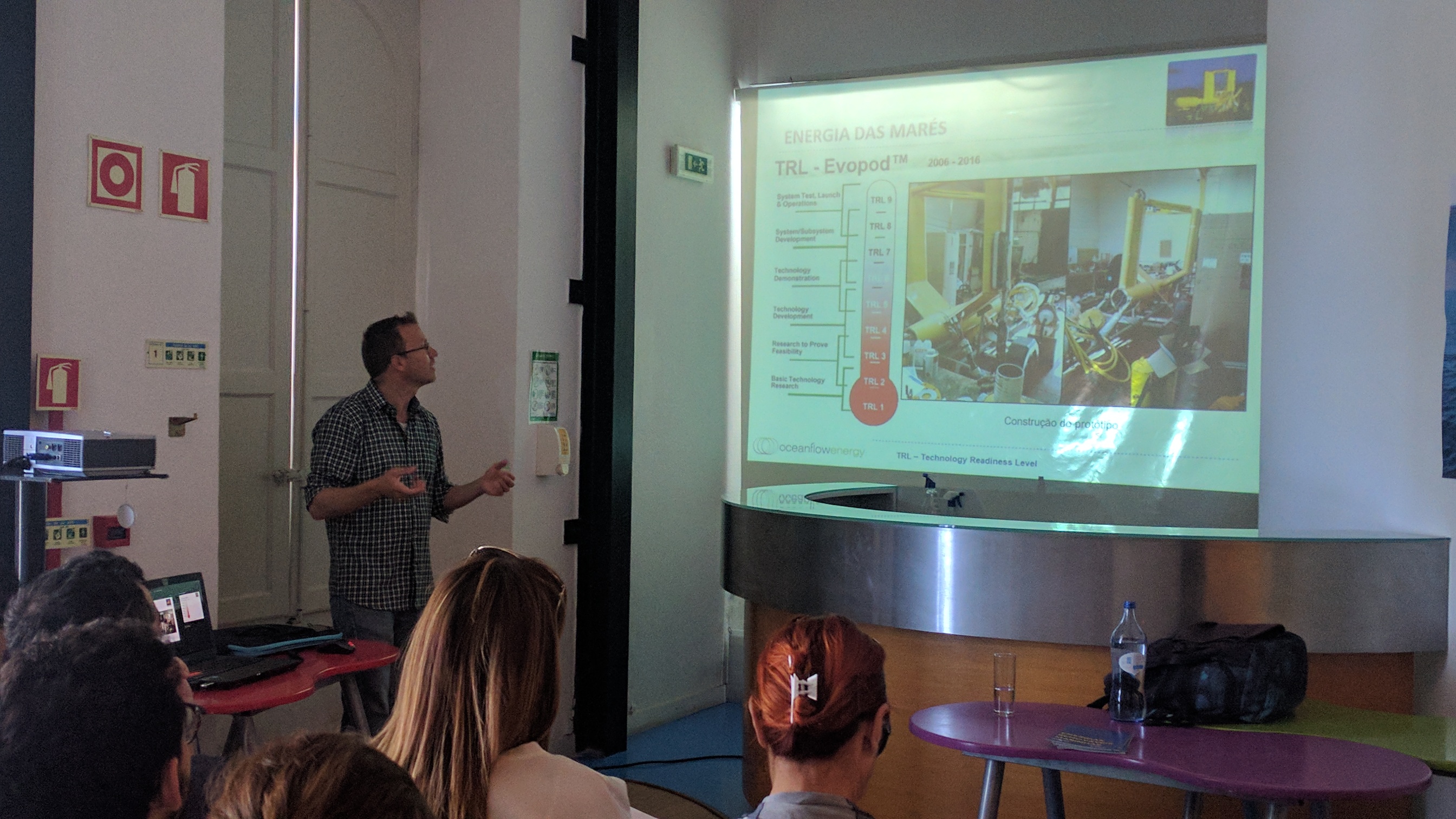
I was invited to participate in the Master of Renewable Energy and Energetic Efficiency, imparted by the University of Cádiz, where I provide a 4 hour lecture on Marine Renewable Energy. It was a great experience to be able to share my knowldge in this topic with graduate students. The lecture covered the following topics:
Further details of the Master can be found here: MEREE-UCA
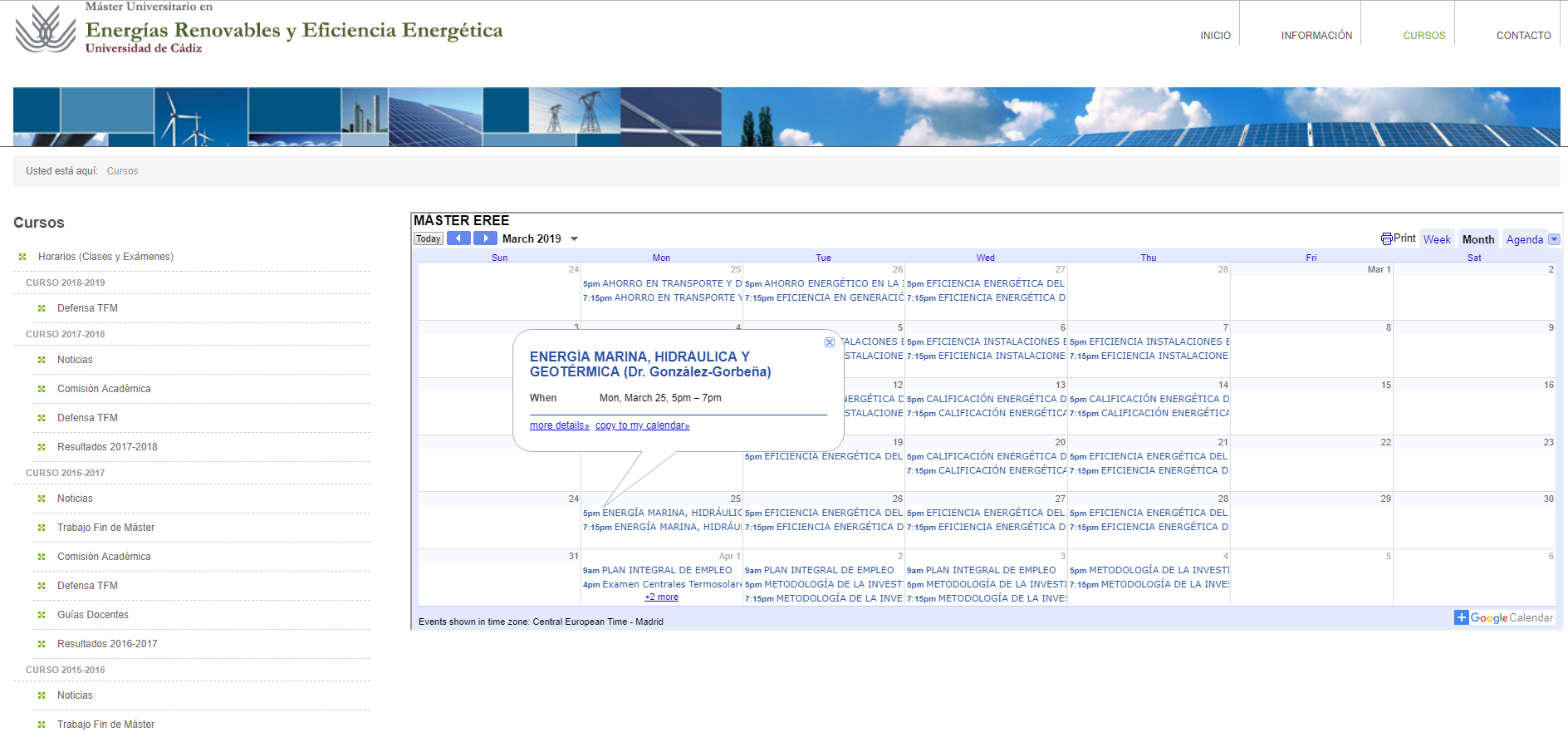
I was invited to participate in the Blue Hub Lab where I presented the research projects in which the MORE Team from CIMA-UALG is involved with. Among them, I presented the goals of project OpTiCA. The Blue Hub Lab is an innitiative, as part of the projects PROteuS and MAESTRALE, promoted by the Division of Entrepreneurship and Technology Transfer of the University of Algarve (CRIA) to boost the blue economy, specifically in the areas of Blue Energy and Blue Growth. Both PROteuS and MAESTRALE projects are funded by the Interreg MED Programme, which supports projects developing innovative concepts and practices and promoting a reasonable use of resources. While project PROteuS aims at exploiting the growth potential of the emerging Maritime Surveillance industry, project MAESTRALE aims to lay the foundations for a strategy for the deployment of maritime energy in the Mediterranean area. As part of the dissemination activities, MAESTRALE organises Blue Energy Labs events taht are created in all participating countries as networking workshops among institutional, academia, civil society and industry actors to stimulate sharing of information and knowledge transfer.
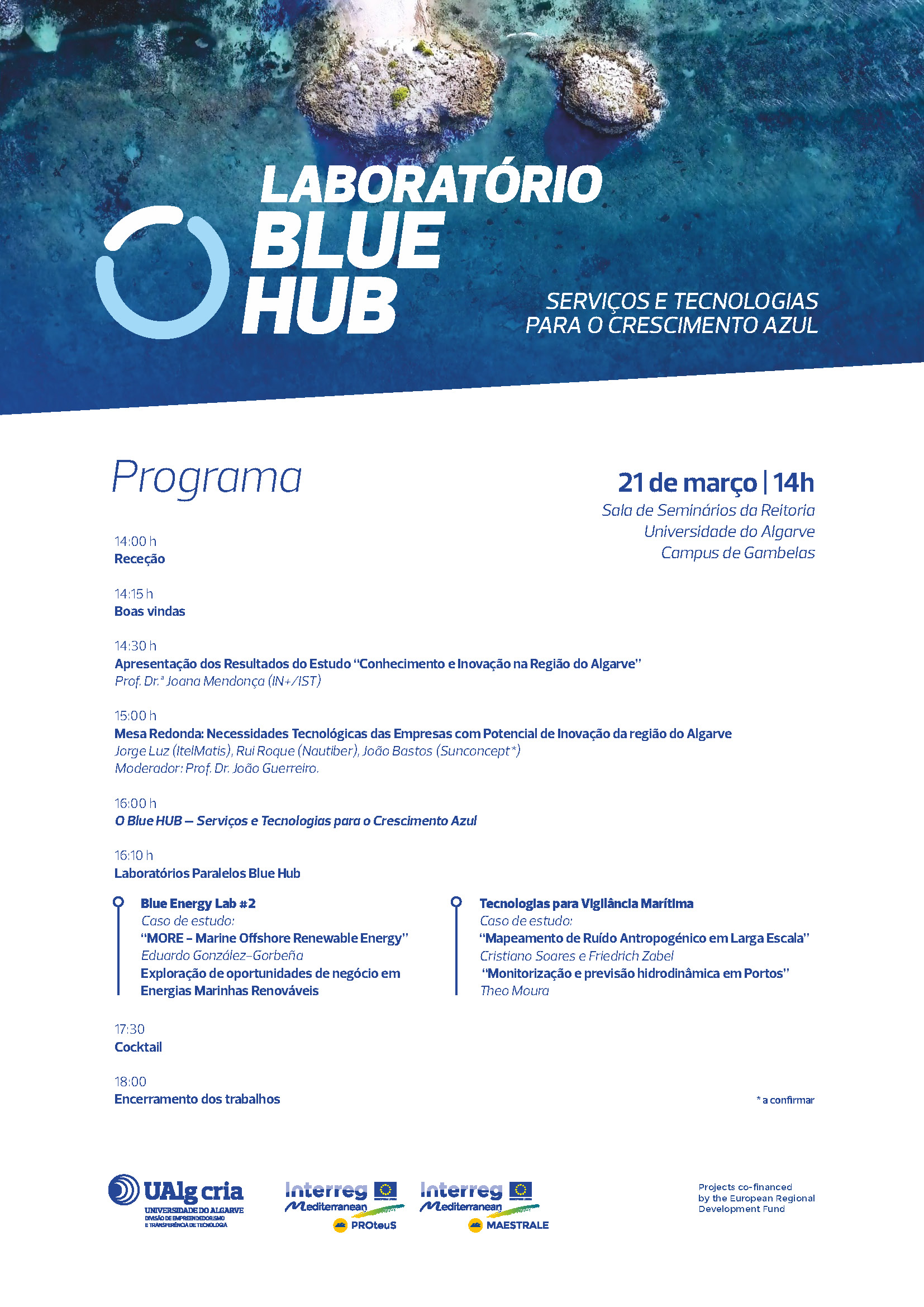
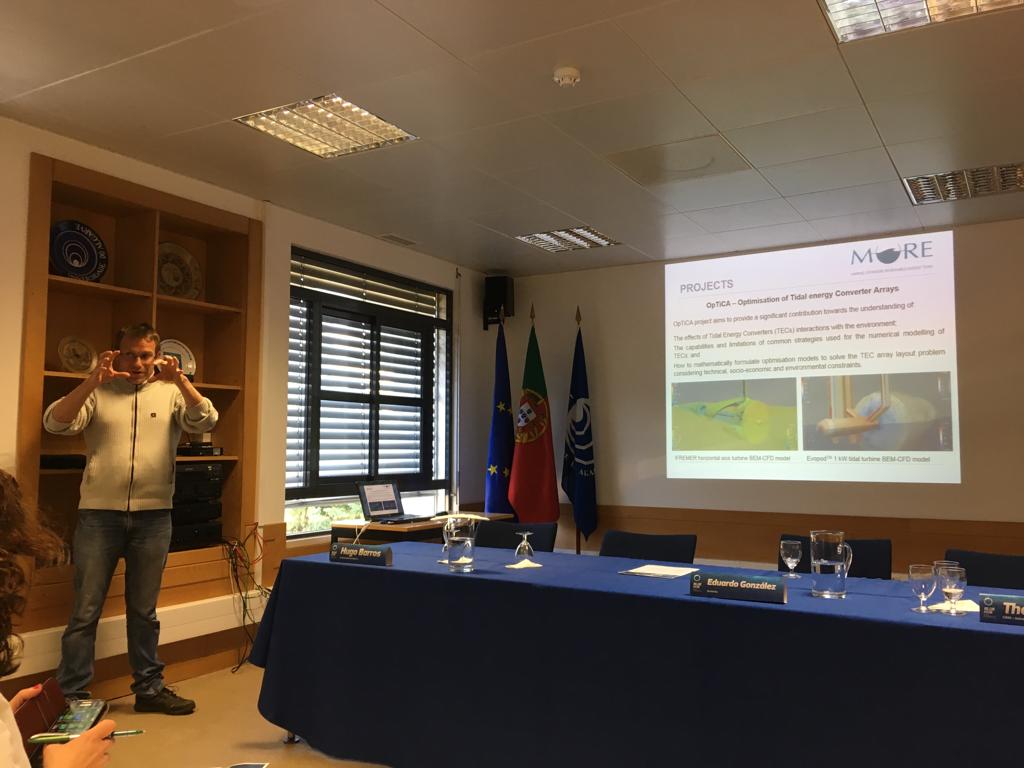
The Centre of Marine and Environmental Research (CIMA) of the University of Algarve received, under the Erasmus+ programme, the "Agrupamento de Escolas Dr.ª Laura Ayres" Group with a team of students and teachers from Finland, Czech Republic, Italy and Turkey.
The project “UNION OF SOLAR SYSTEM VIA GEOGEBRA” aims to establish links between three interdependent disciplines, such as mathematics, astronomy and communication technologies, and my researchers colleagues Susana Costas, Sónia Cristina, Aikaterini Kompiadou and myself were incharged to clarify questions about:
It follows some pictures of the event:
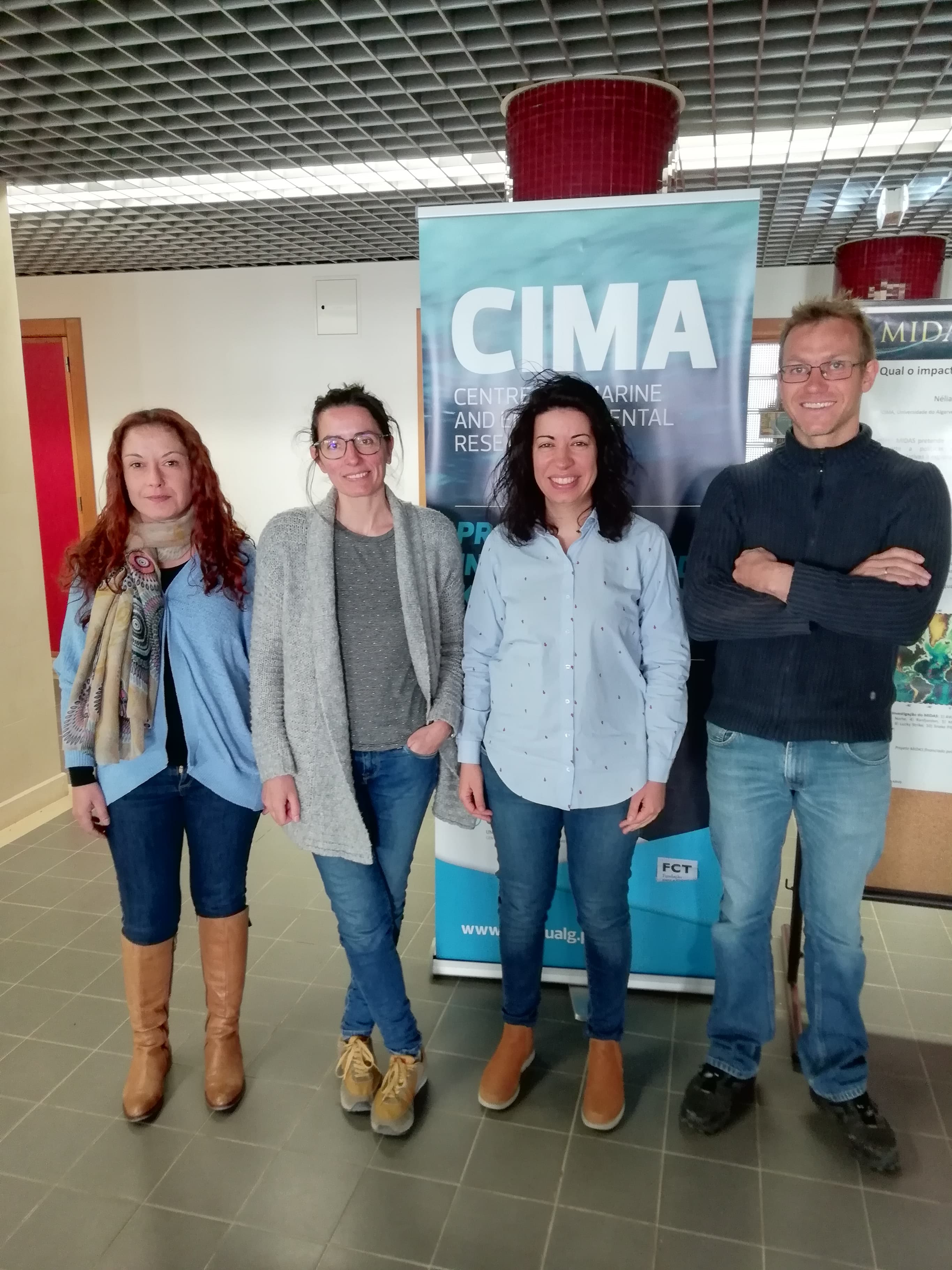
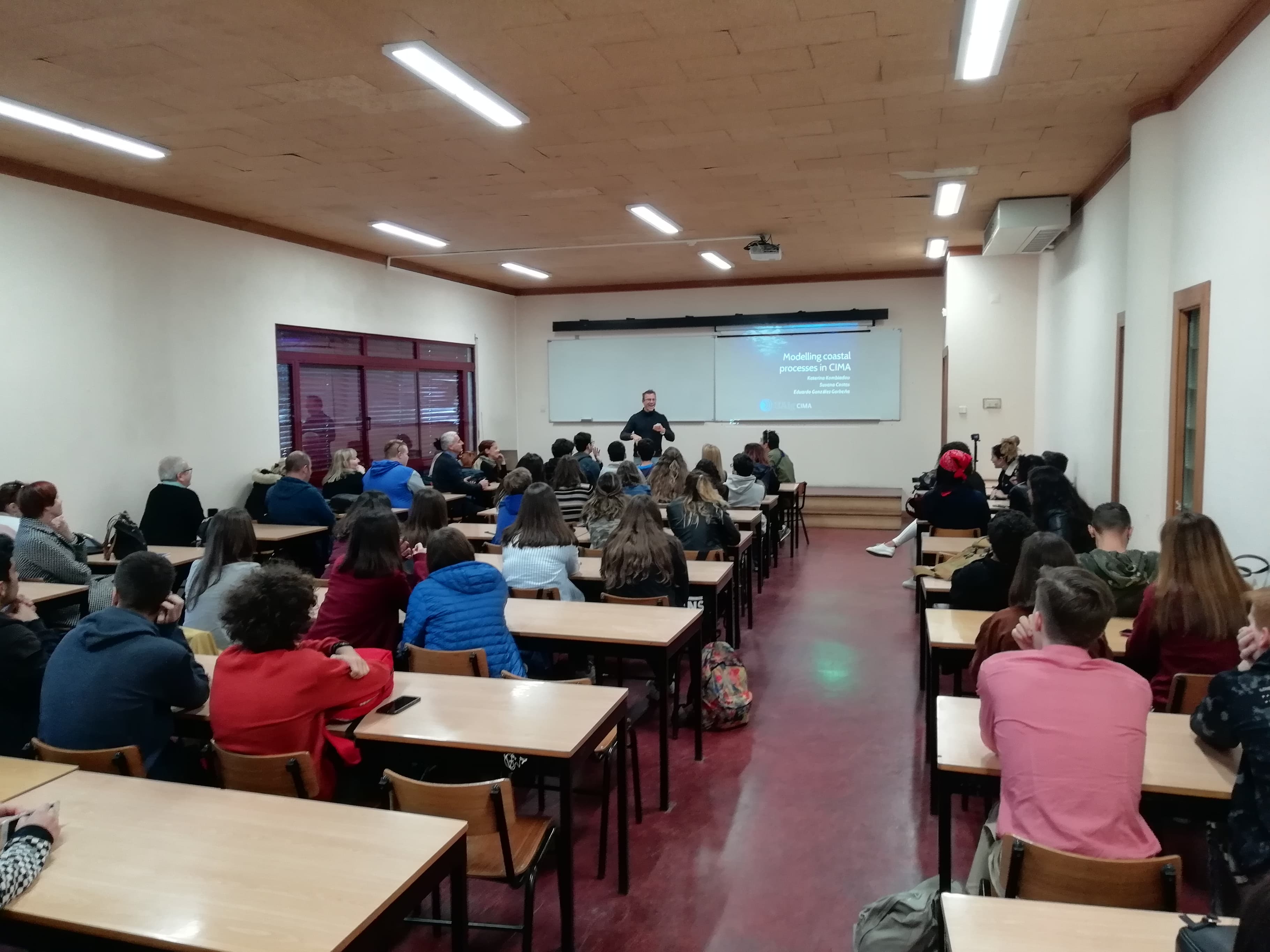
I was invited to the WAVEC Annual Seminar event to present the research projects on marine renewable energies that the MORE team of the University of Algarve are involved with giving special attention to those projects that have UK partners. Every year at WAVEC there is an invited country, this year was the turn of UK. WAVEC is the leading research institution on marine renewable energy in Portugal, therefore, it was an honour to participate in this event, which gave me the opportunity to present a little bit the objectives of OpTiCA project.
A video of my presentation as well as of the other participants can be found in the following LINK
It follows the programme and a picture of the event:
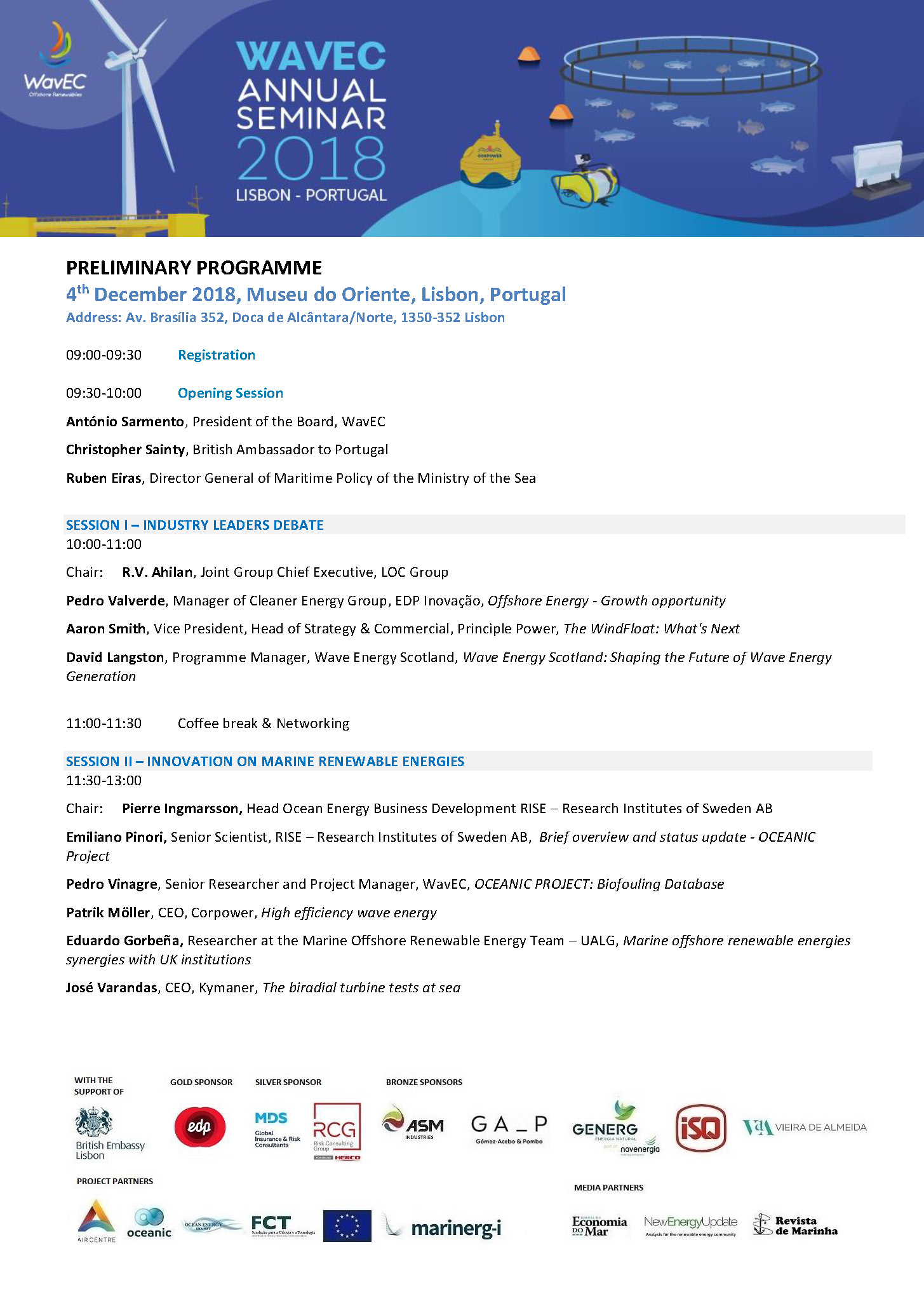
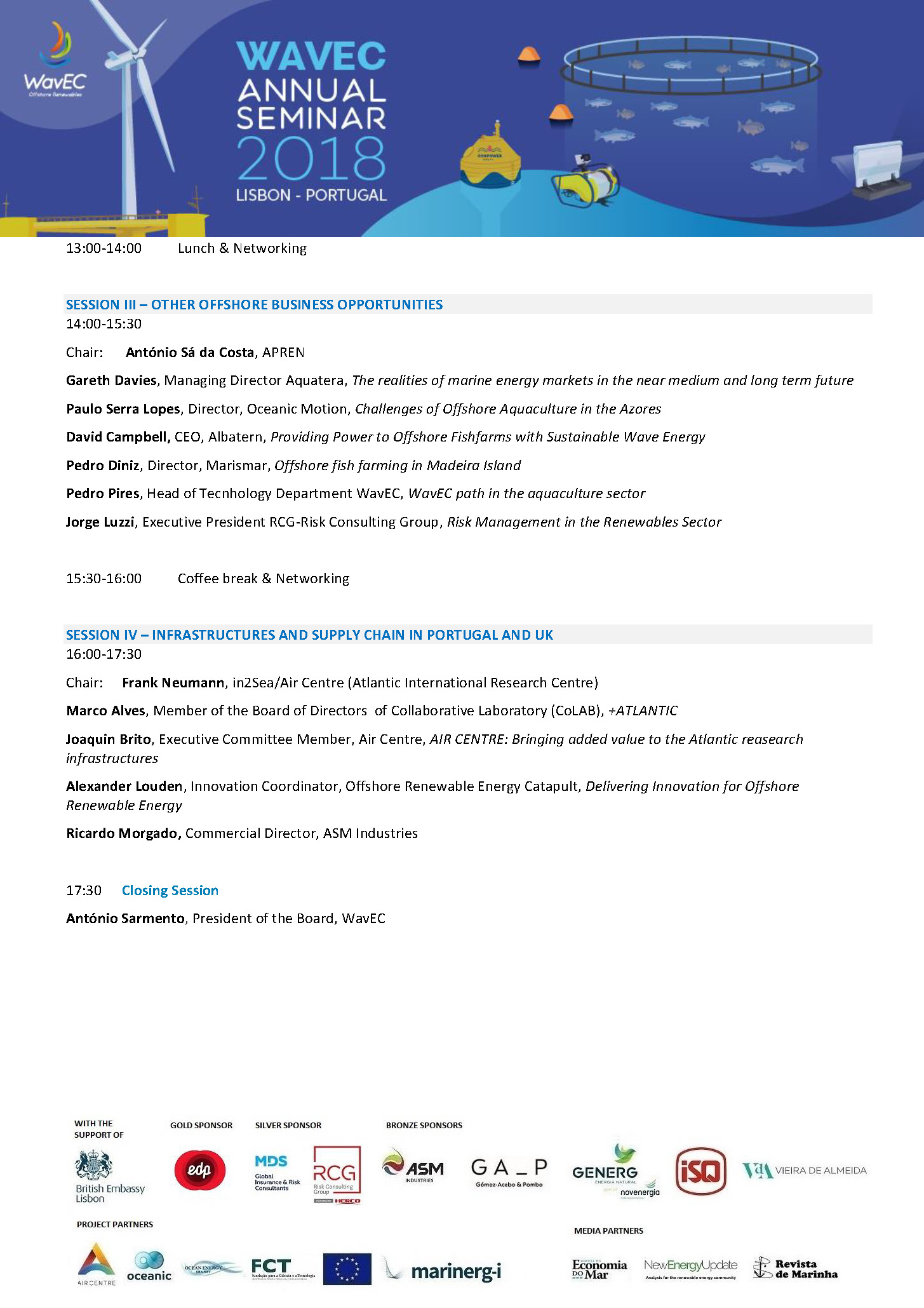
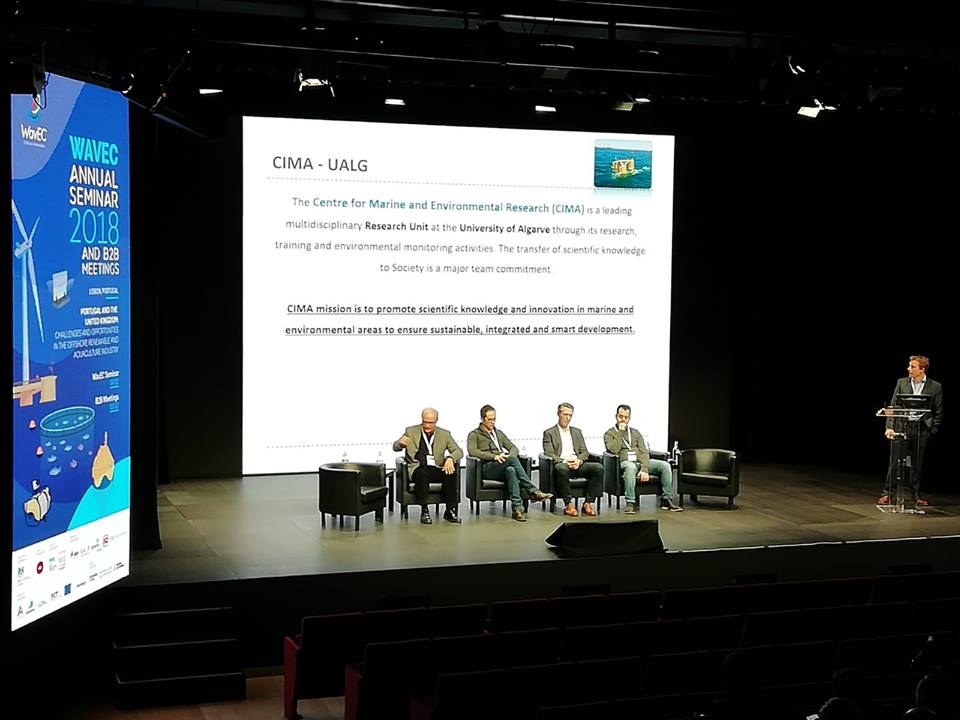
Today, I have received the notification letter that the projet proposal I led was rejected for funding. Well, there is not much to say. Sad news... There was a lot of time invested in it. We knew it was going to be difficult but at least we tried. Probably, around 6 out of 26 proposals are going to be funded... For me, it was a great experience to lead the proposal writing, I certainly learned a lot and I had the opportunity to know a little bit more on planning a project proposal and coordinating a consortium of institutions from several countries. At least we made it to the 2nd stage. Just 26 out of 94 submitted proposal made it to the 2nd phase. Not bad for being my first H2020-RIA proposal!
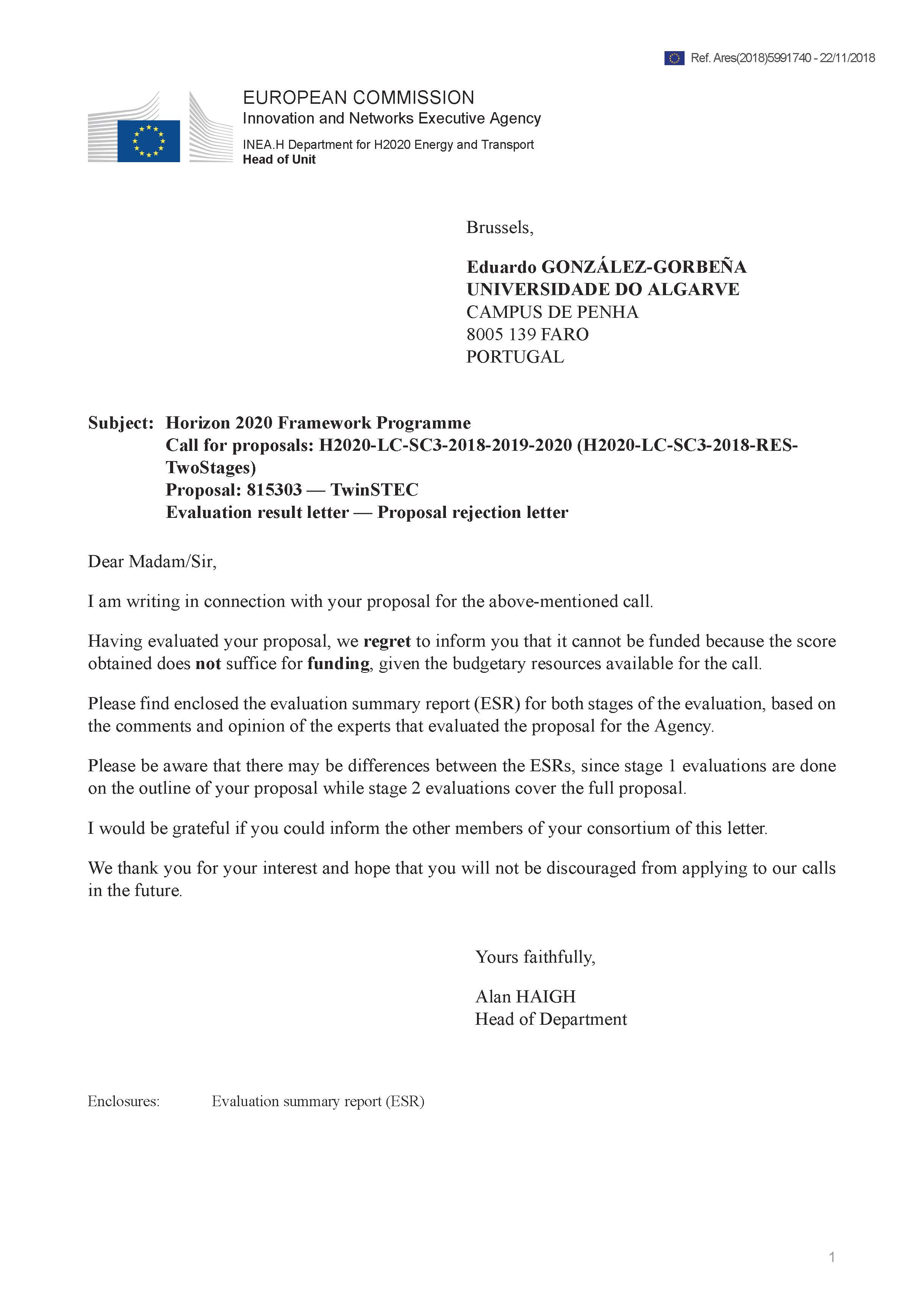
VARTDAL, J.T., QASSIM, R.Y., MOKLIEV, B., UDJUS, G., GONZÁLEZ-GORBEÑA, E., 2018. Tidal turbine farm electrical power cable optimal configuration problem identification via traveling salesman problem modeling approach. Journal of Modern Power Systems and Clean Energy, :1-8. Doi: 10.1007/s40565-018-0472-7
Abstract - Electrical power cables in tidal turbine farms contribute a significant share to capital expenditure (CAPEX). As a result, the routing of electrical power cables connecting turbines to cable collector hubs must be designed so as to obtain the least cost configuration. This is referred to as a tidal cable routing problem. This problem possesses several variants depending on the number of cable collector hubs. In this paper, these variants are modeled by employing the approach of the single depot multiple traveling salesman problem (mTSP) and the multiple depot mTSP of operational research for the single and multiple cable collector variants, respectively. The developed optimization models are computationally implemented using MATLAB. In the triple cable collector cable hub variant, an optimal solution is obtained, while good-quality suboptimal solutions are obtained in the double and single cable collector hub variants. In practice, multiple cable collector hubs are expected to be employed as the multiple hub configurations tend to be more economic than the single hub configurations. This has been confirmed by this paper for an optimal tidal turbine layout obtained with OpenTidalFarm. Suggestions are presented for future research studies comprising a number of heuristics.
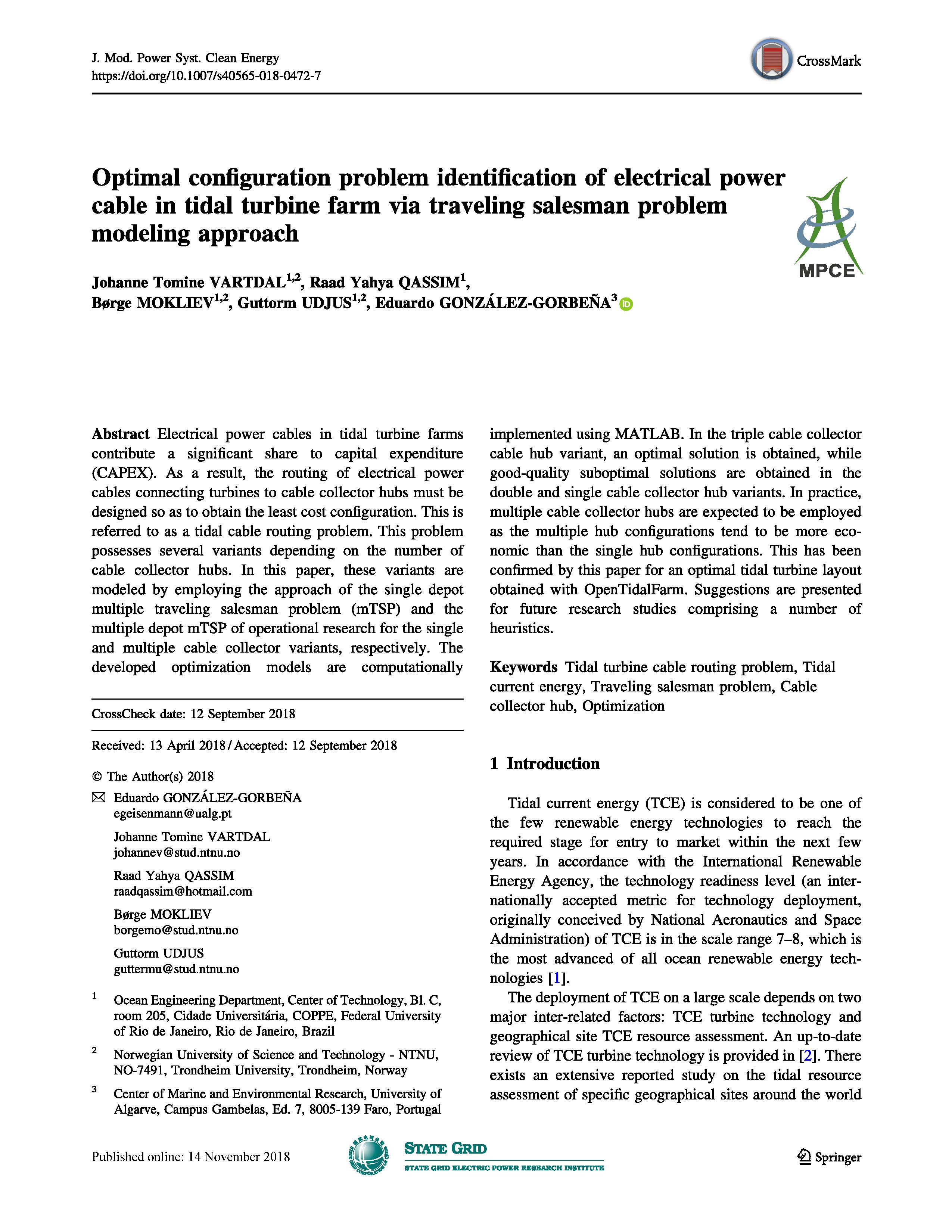
GORBEÑA E.G., PACHECO, A., PLOMARITIS, T., FERREIRA, Ó., SEQUEIRA, C., 2018. Estimating the optimum size of a tidal array at a multi-inlet system considering environmental and performance constraints. Applied Energy, 232:292-311. Doi: 10.1016/j.apenergy.2018.09.204
Abstract - This paper investigates the optimum tidal energy converter array density at a tidal inlet by applying surrogate-based optimisation. The SBO procedure comprises problem formulation, design of experiments, numerical simulations, surrogate model construction and constrained optimisation. This study presents an example for the Faro-Olhão Inlet in the Ria Formosa (Portugal), a potential site for tidal in-stream energy extraction. A 35 kW Evopod™ floating tidal energy converter from Oceanflow Energy Ltd. has been used for array size calculations considering two design variables: (1) number of array rows, and (2) number of tidal energy converter per row. Arrays up to 13 rows with 6–11 tidal energy converters each are studied to assess their impacts on array performance, inlets discharges and bathymetry changes. The analysis identified the positive/negative feedbacks between the two design variables in real case complex flow fields under variable bathymetry and channel morphology. The non-uniformity of tidal currents along the array region causes the variability of the resource in each row, as well as makes it difficult to predict the resultant array configuration interactions. Four different multi-objective optimisation models are formulated subject to a set of performance and environmental constraints. Results from the optimisation models imply that the largest array size that meets the environmental constraints is made of 5 rows with 6 tidal energy converter each and an overall capacity factor of 11.6% resulting in an energy production of 1.01 GWh year−1. On the other hand, a higher energy production (1.20 GWh year−1) is achieved by an optimum array configuration, made of 3 rows with 10 tidal energy converters per row, which maximises power output satisfying environmental and performance restrictions. This optimal configuration permits a good level of energy extraction while having a reduced effect on the hydrodynamic functioning of the multi-inlet system. These results prove the suitability and the potential wide use of the surrogate-based optimisation method to define array characteristics that enhance power production and at the same time respect the environmental surrounding conditions.
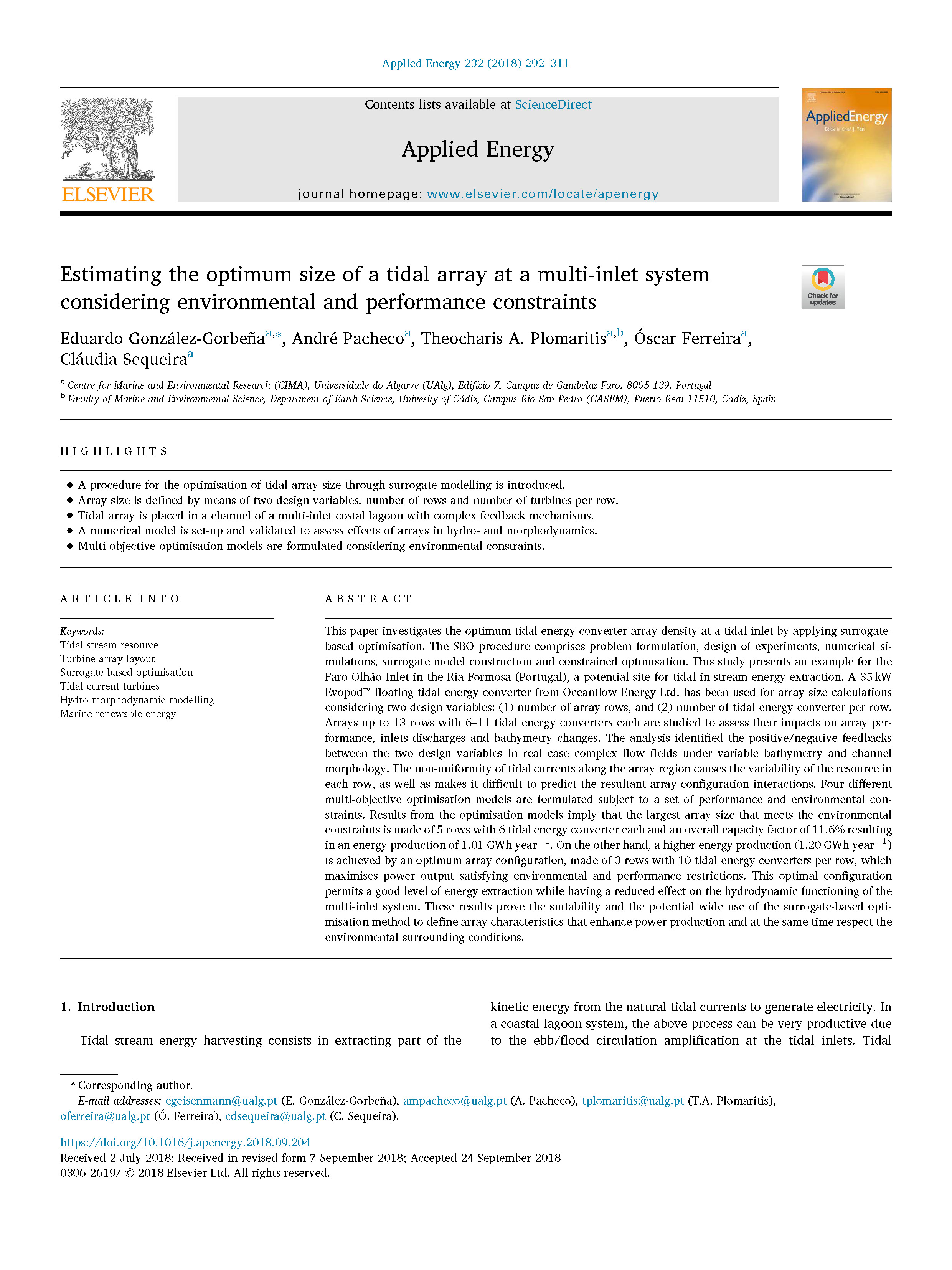
During my Secondment with the Marine Energy Research Group of Swansea University, directed by Prof. Ian Masters, I had the chance to get some skills on using a Blade Element Momentum Computational Fluid Dynamics (BEM-CFD) model developed by Dr. Matthew Edmunds. The BEM-CFD model is based in OpenFOAM toolbox. The BEM-CFD method is an enhanced actuator disk and is able to reduce the computational cost by simulating a time averaged downstream velocity field. It accurately determines tip losses, which are a function of the hydrofoil geometry, by modifying the angle of attack to conform to the constraints outlined in Prandtl's lifting line theory, i.e. the zero lift angle of attack at the hydrofoil tip.
I first started simulating an scaled Horizontal Axis Tidal Turbine (HATT) physicaly modelled at IFREMER flume tank. Then I continued simulating an array of two devices using the same scaled HATT. Finally, I managed to successfully model the Evopd E1 tidal energy converter. Results ares been processed to be compared with those measured during the deployment at the Faro-Olhão Inlet under the SCORE project Refer to Pacheco et al. (2018) for further details on the E1 deployment.
It follows some figures showing some results of the BEM-CFD simulations. Figures are generated using Paraview visualization tool:
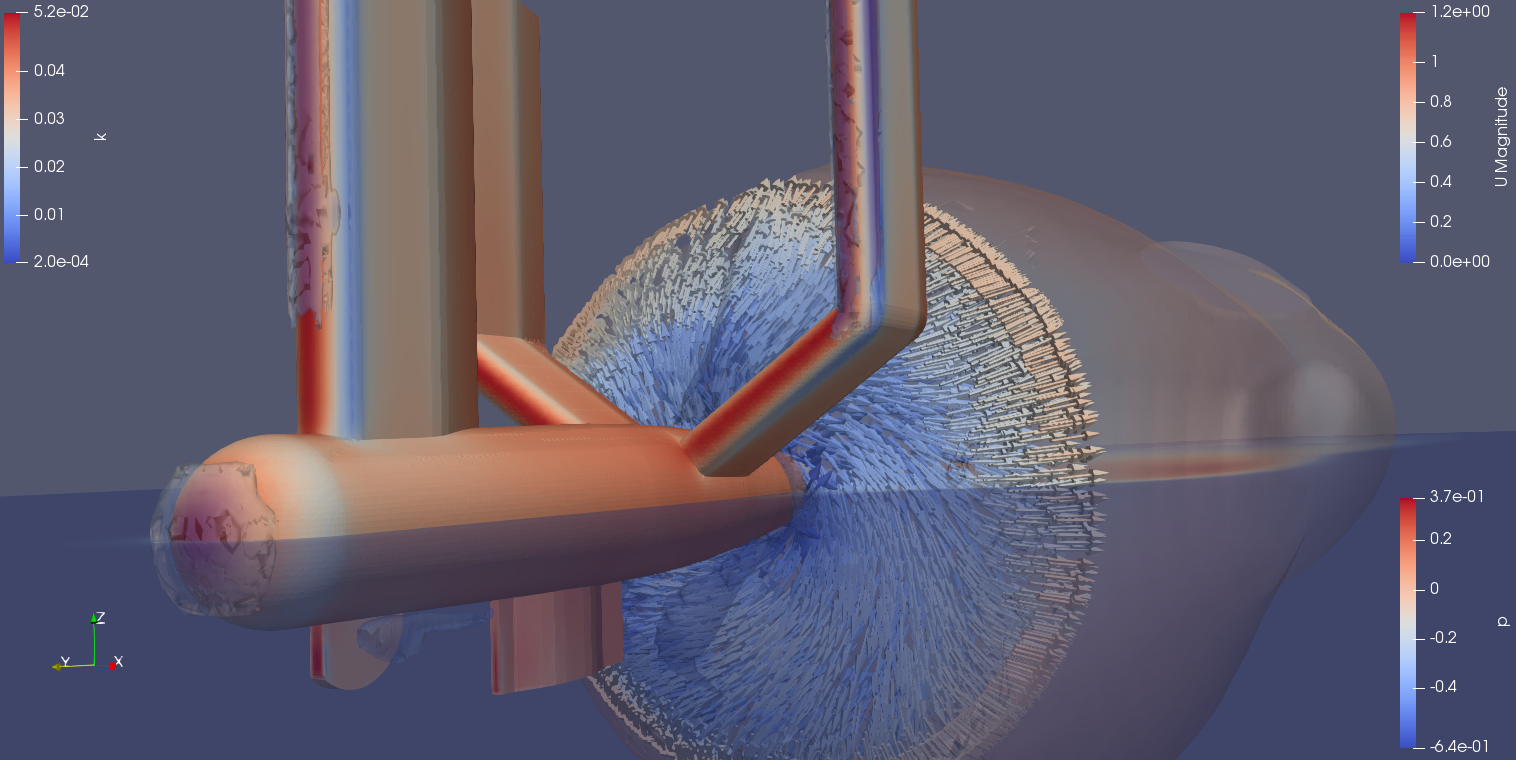
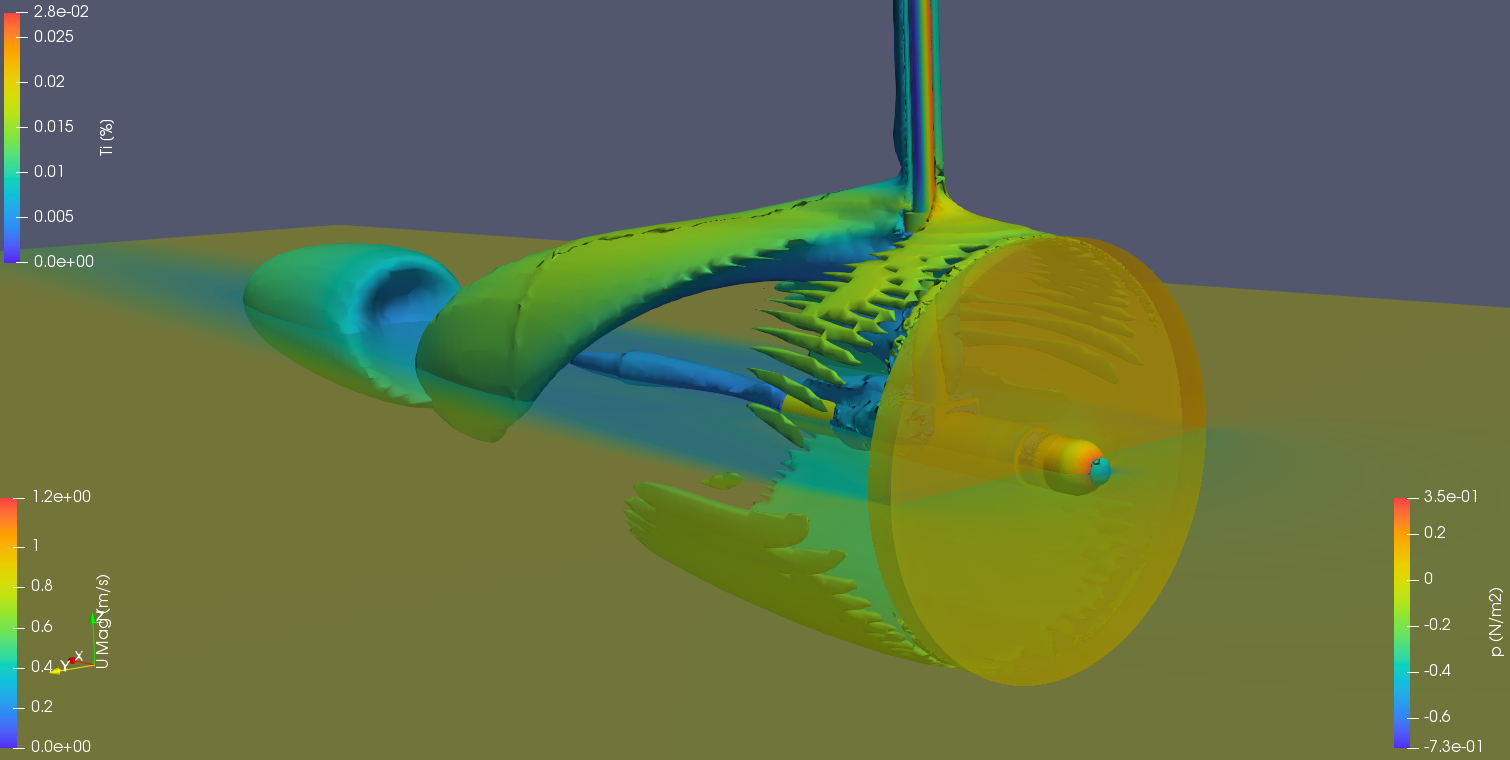
As part of WP2 (Monitoring real TEC deployments), we delivered an oral presentation at the 7th ICOE. The title of the presentation is "Lessons learned from E1 Evopod Tidal Energy Converter deployment at Ria Formosa, Portugal". The work details the experience of the deployment of a small TEC prototype, the Evopod E1 (1 kW).
Abstract - This paper presents the results of a pilot experiment with an existing tidal energy converter (TEC), Evopod 1 kW floatable prototype, in a real test case scenario (Faro Channel, Ria Formosa, Portugal). Operational results related to the description of power generation capacity, energy capture area and proportion of energy flux are presented and discussed. The data is now available to the scientific community and to TEC industry developers, enhancing the operational knowledge of TEC technology concerning efficiency, environmental effects, and interactions (i.e. device/environment).
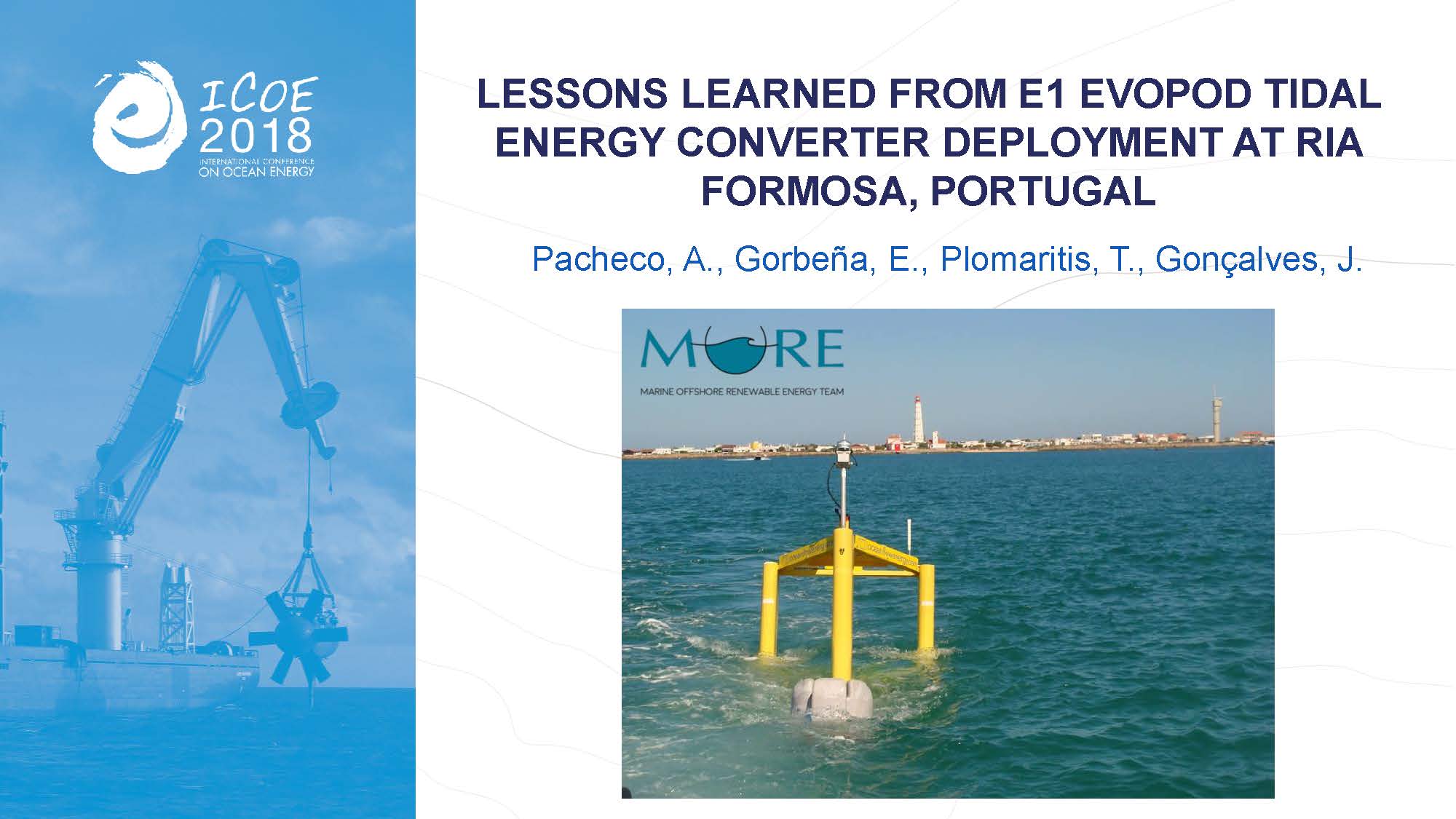
On 23rd of May, at the University of Algarve, Team MORE members, Claudia Sequeira and Eduardo González Gorbeña, presented to the PELAGOS community the marine renewable energy projects in which we are involved. Claudia Sequeira is Science Advisor of PELAGOS, a project coordinated at the University of Algarve by CRIA (Division of Entrepreneurship and Technology Transfer of the University of Algarve). For more information visit the PELAGOS project website.
It follows some pictures of the event:
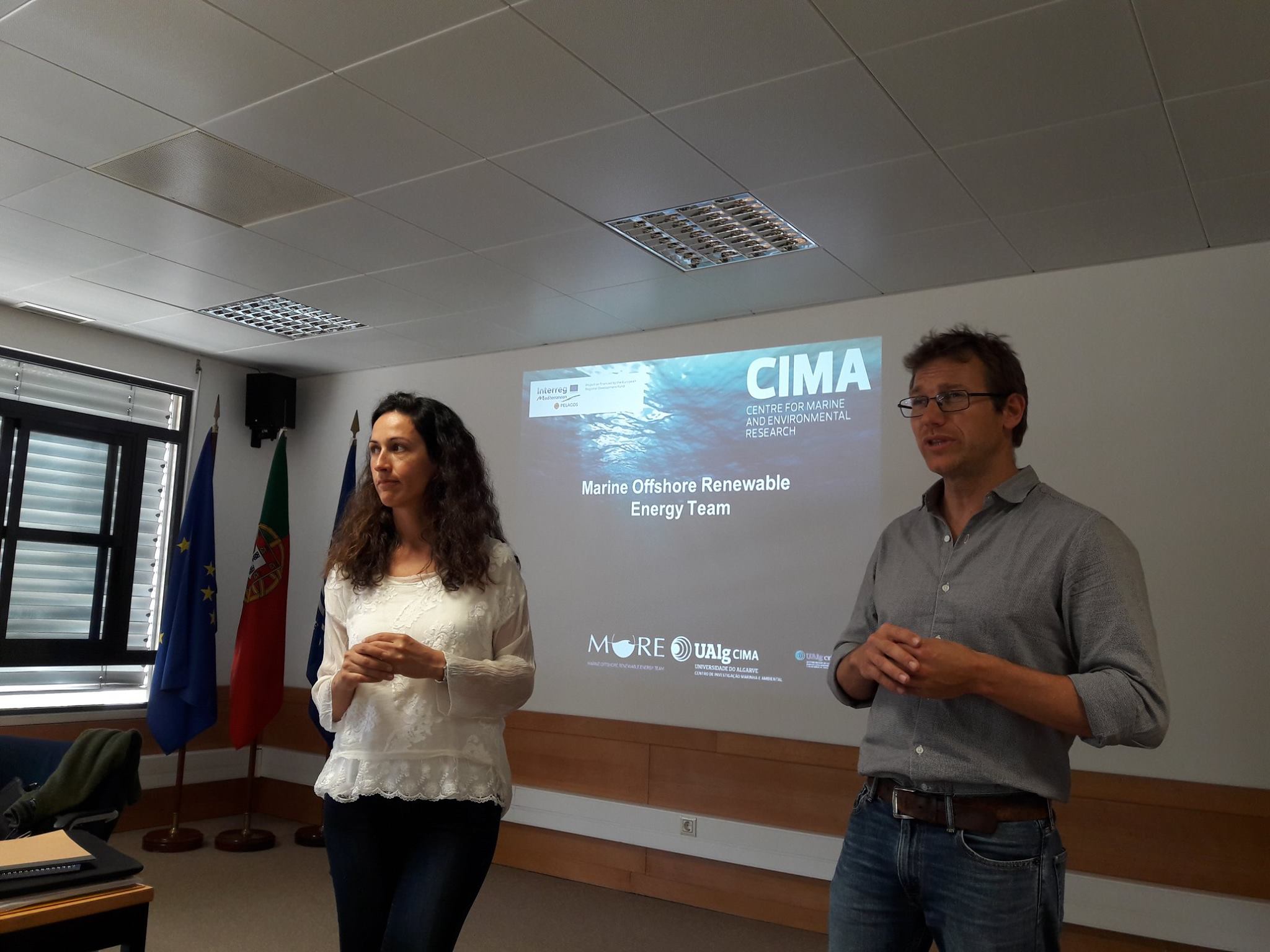
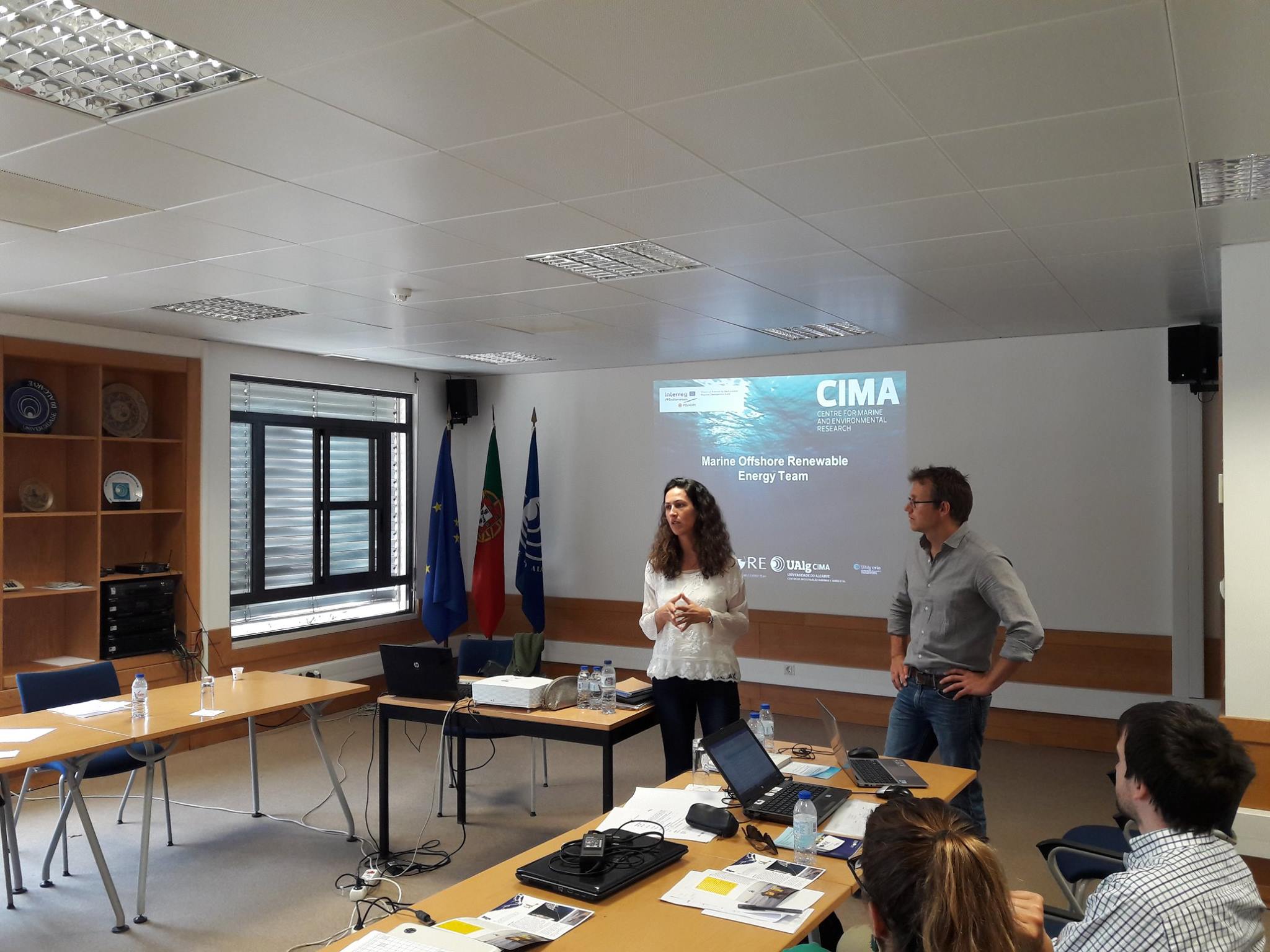
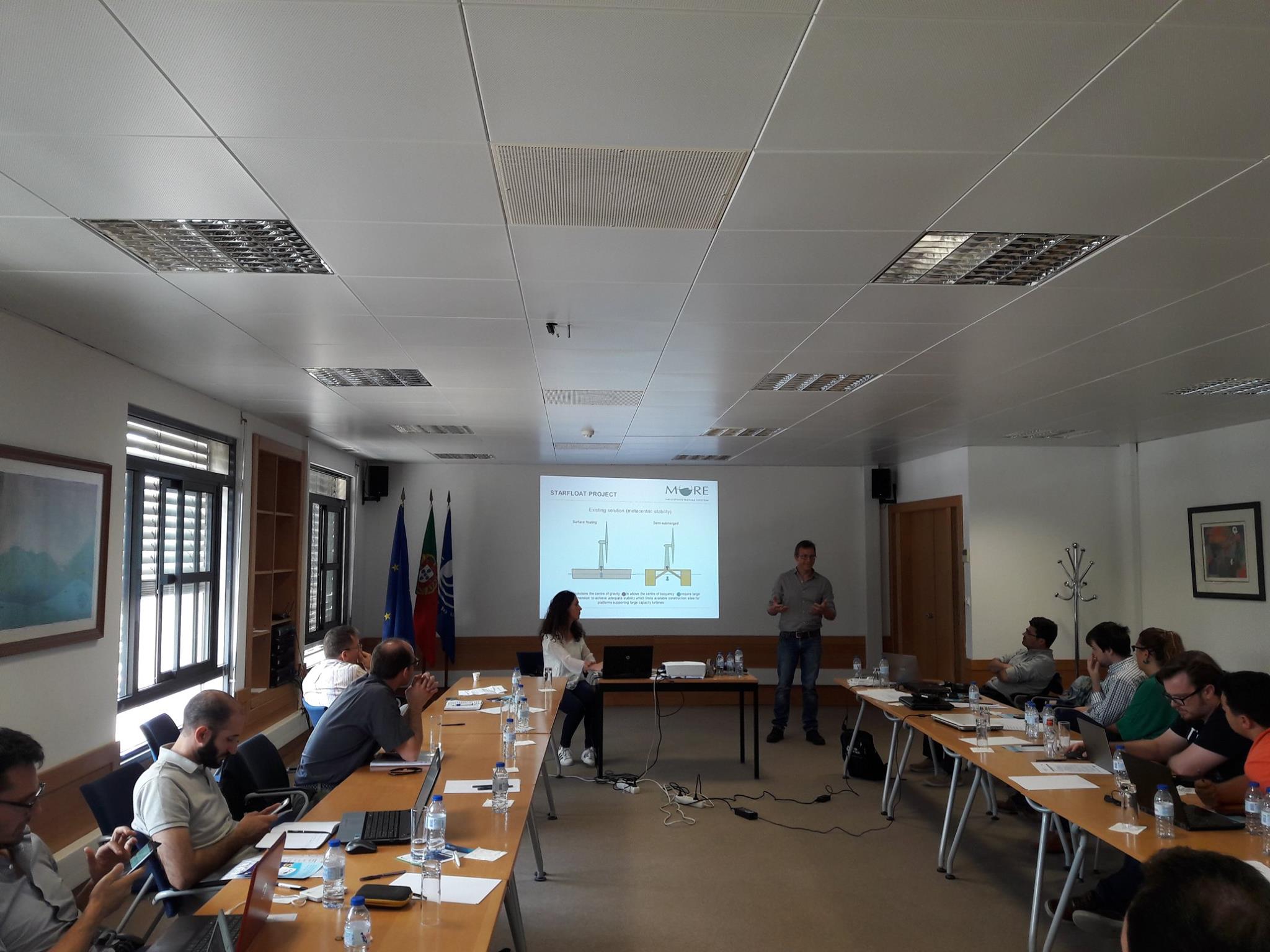
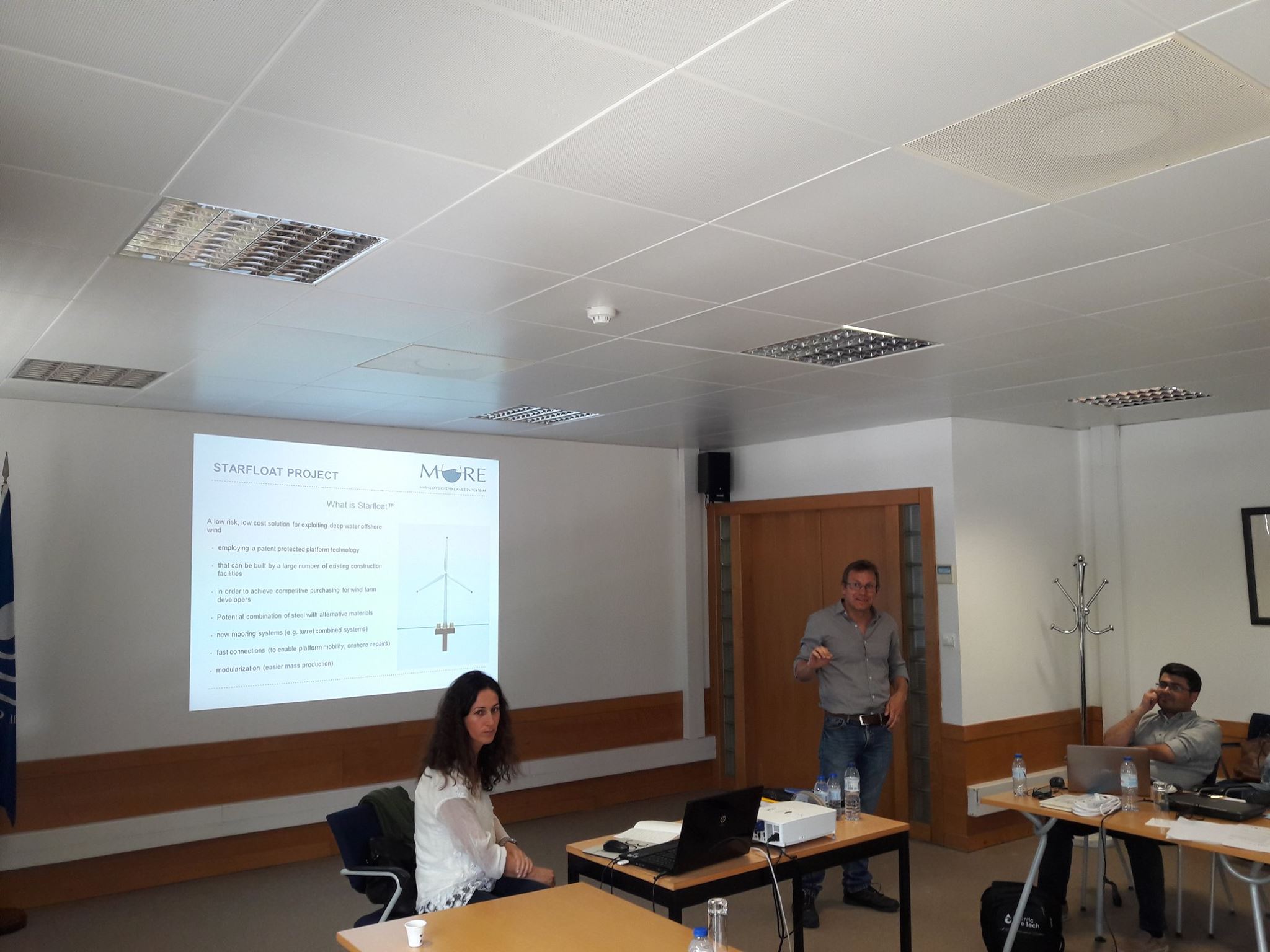
By developing my Marie S. Curie project, OpTiCA, with the Marine Offshore Renewable Energy group from the Univesity of Algarve, I had the opportunity to collaborate in several tidal energy projects. One of them is the project MONITOR (Multi-model investigation of tidal energy converter reliability, EAPA_333/2016) coordinated by the Marine Energy Research Group of Swansea University, where UALG is leader of WP7: At Sea Testing. WP7 activities include: deploy and process oceanographic data from Acoustic Doppler Current Profiler (ADCP) site surveys; processing of meteo ocean datasets; collaborate with tidal developers on planning and installing tidal energy prototypes on two high energetic sites (Fall of Warness, Orkney Islands, Scotland and Fromveur Strait, France); analyse performance data from tidal turbines (ATIR from Magallanes Renovables and D10 from Sabella), combining physical and numerical models with real data from a deployment to optimise energy production.
On May 16th-17th, we had a meeting at Sabella's workshop at BREST, where we saw D10 Device that was under maintenance operations. The D10 will be deployed at Fromveur Strair, île de Ouessant, offshore Brittany Coast on October 2018. It follows some pictures of Sabella's D10 device and of the deployment site:
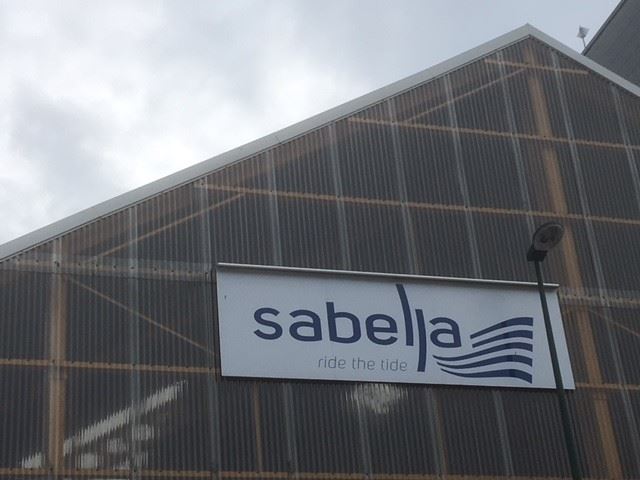
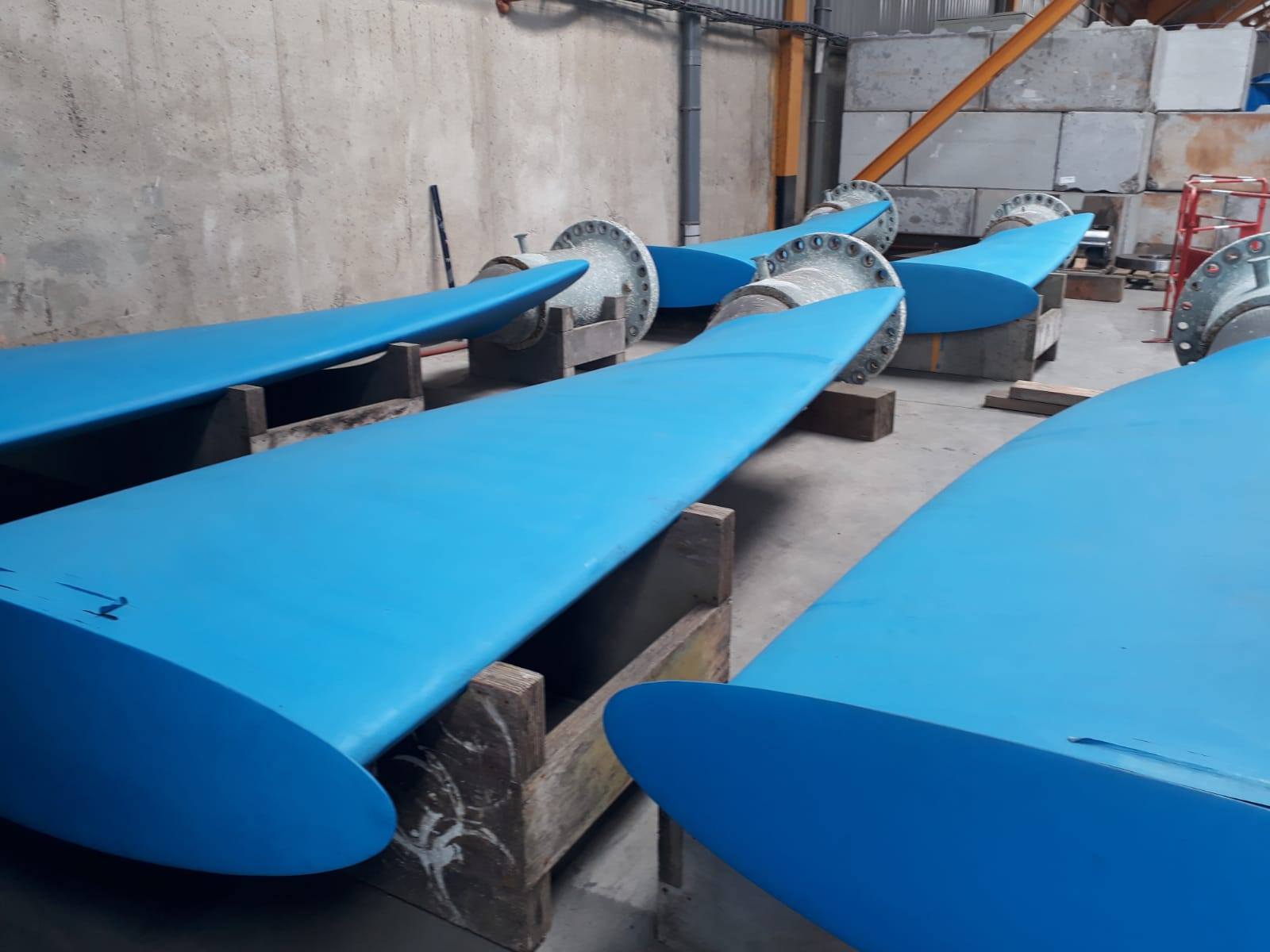
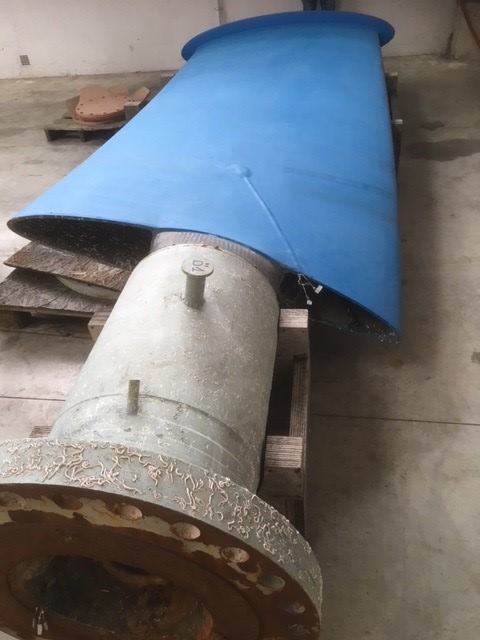
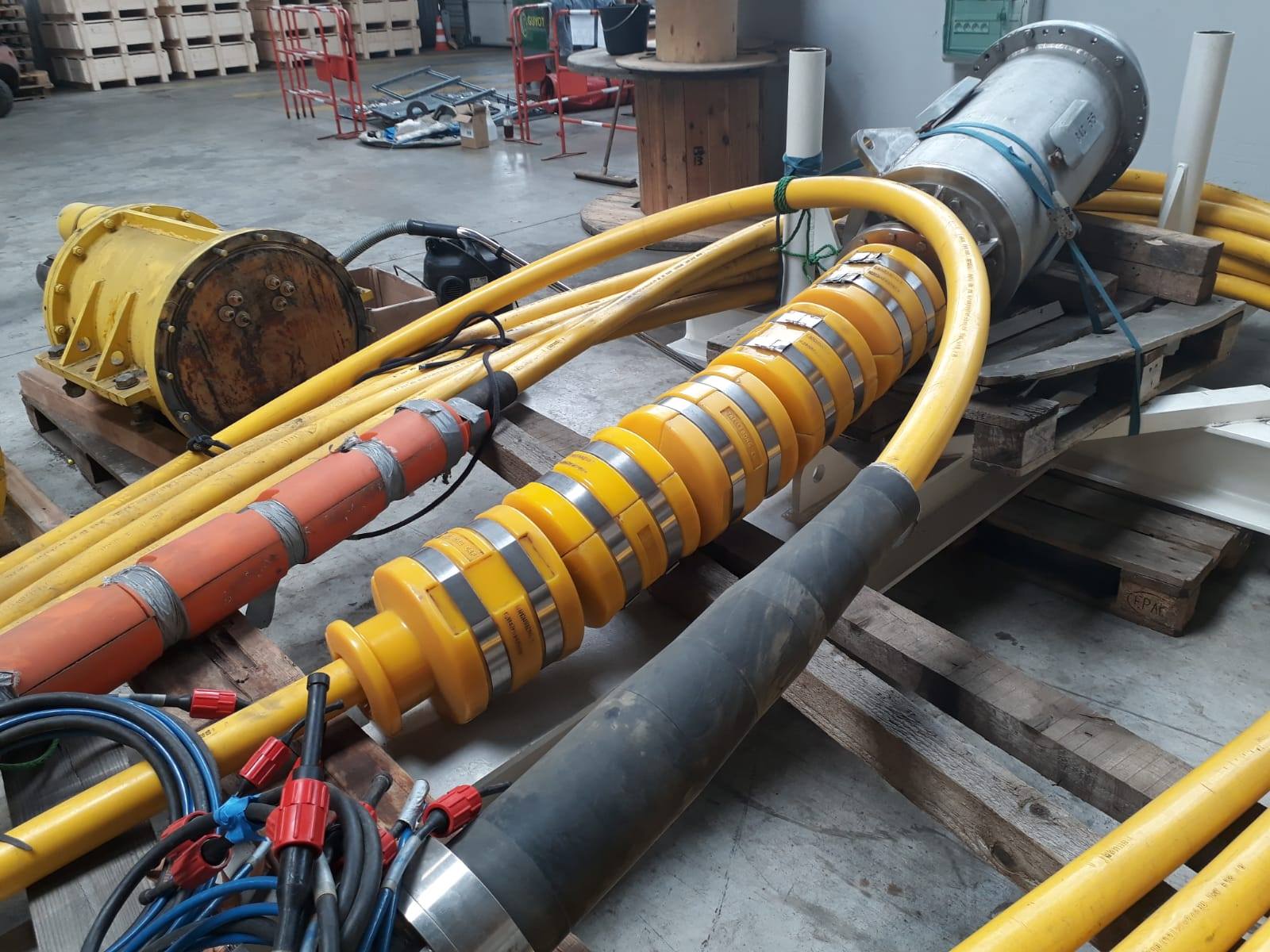
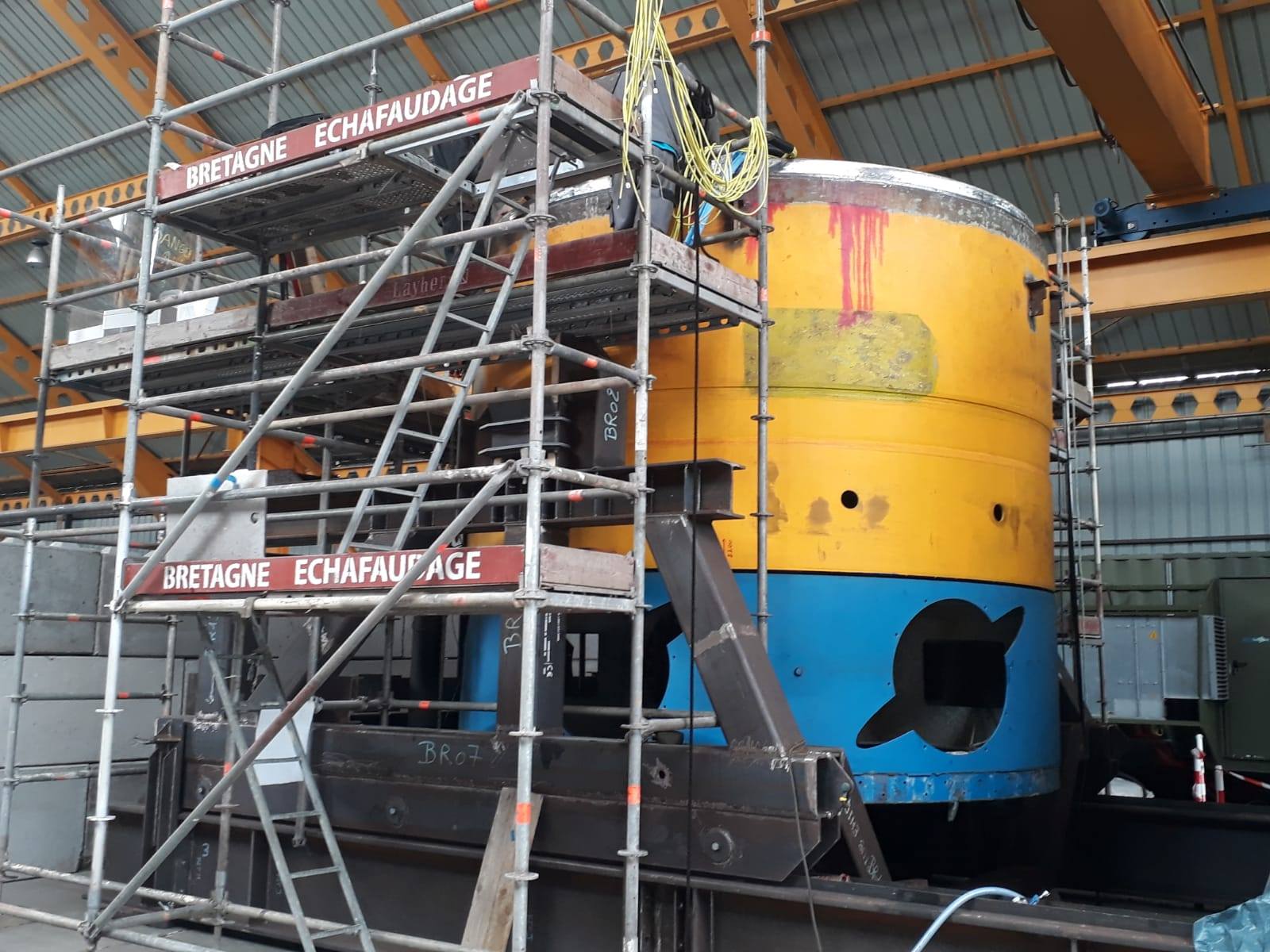
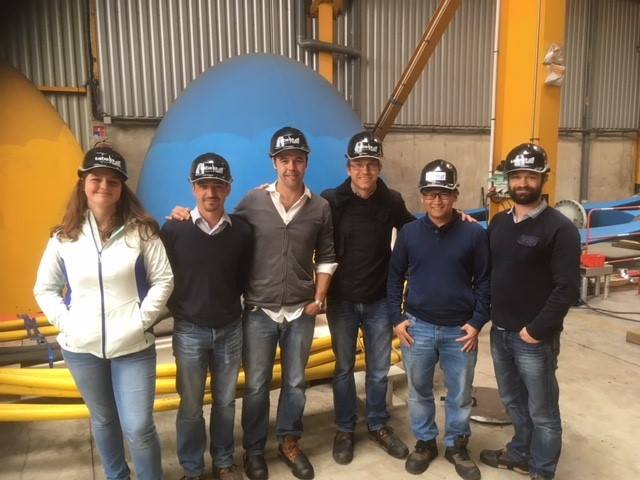
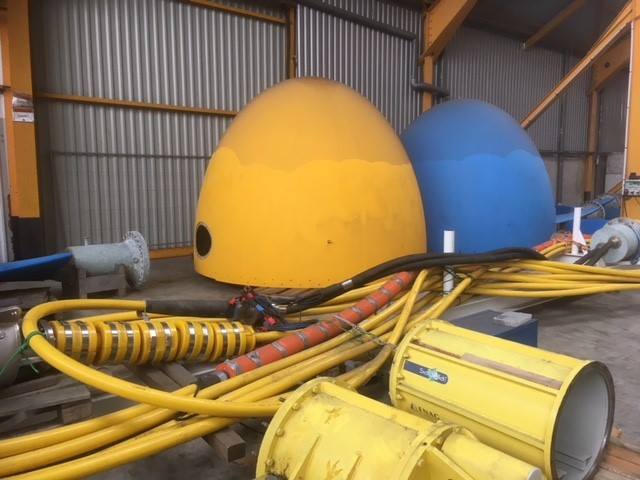
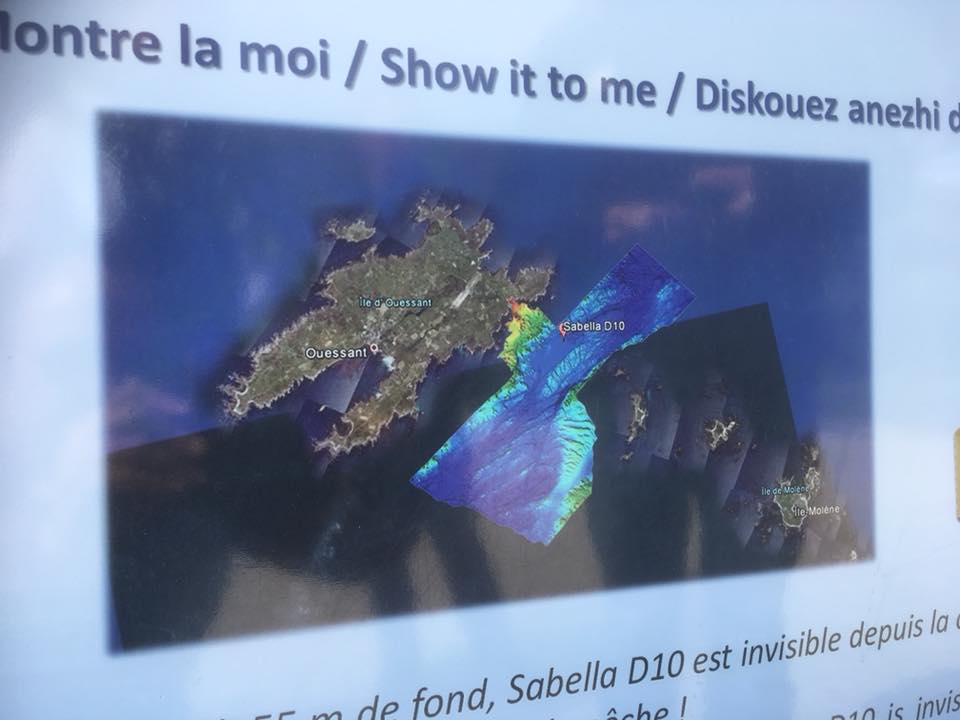
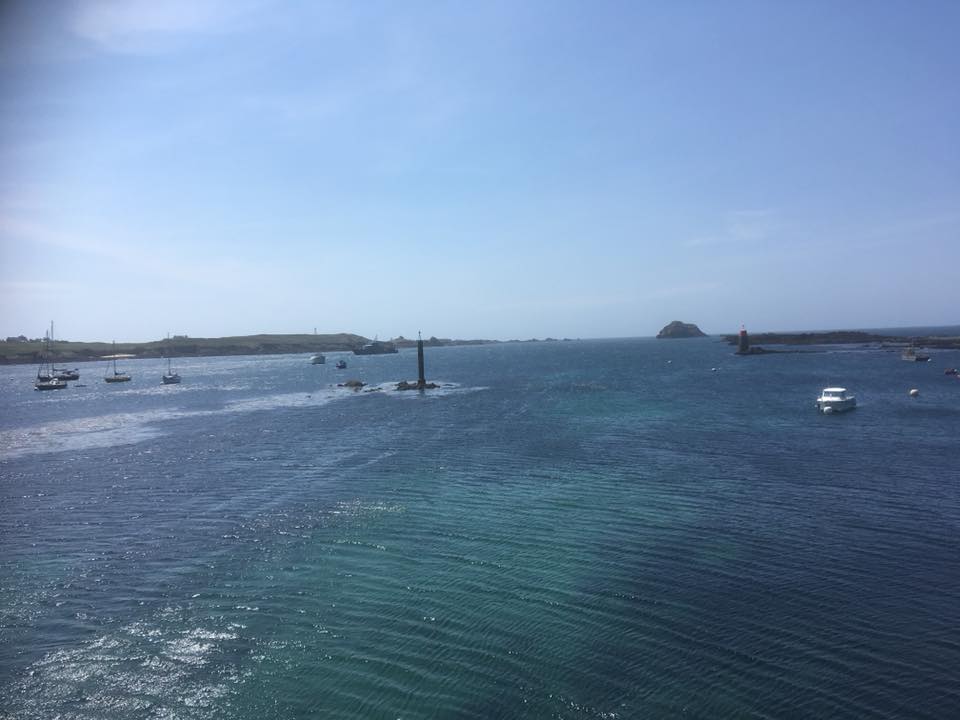
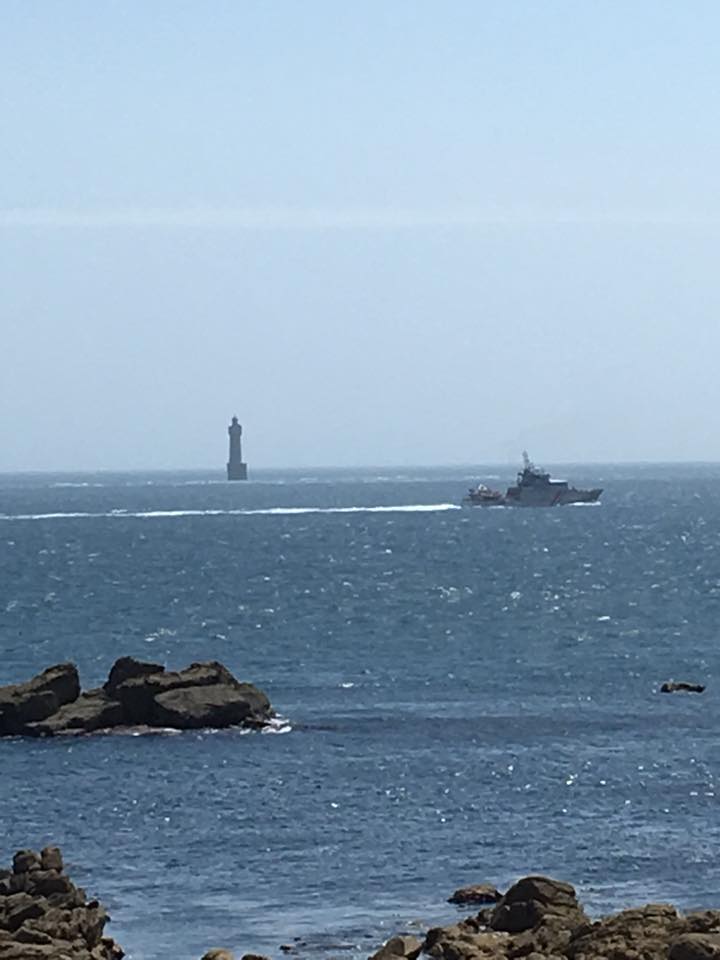
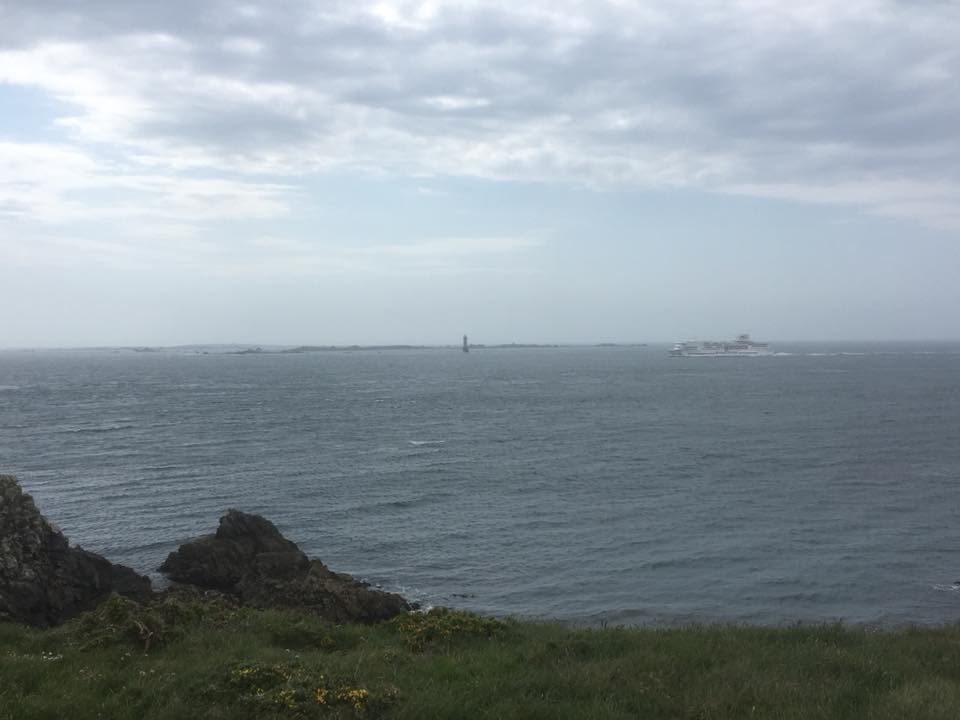
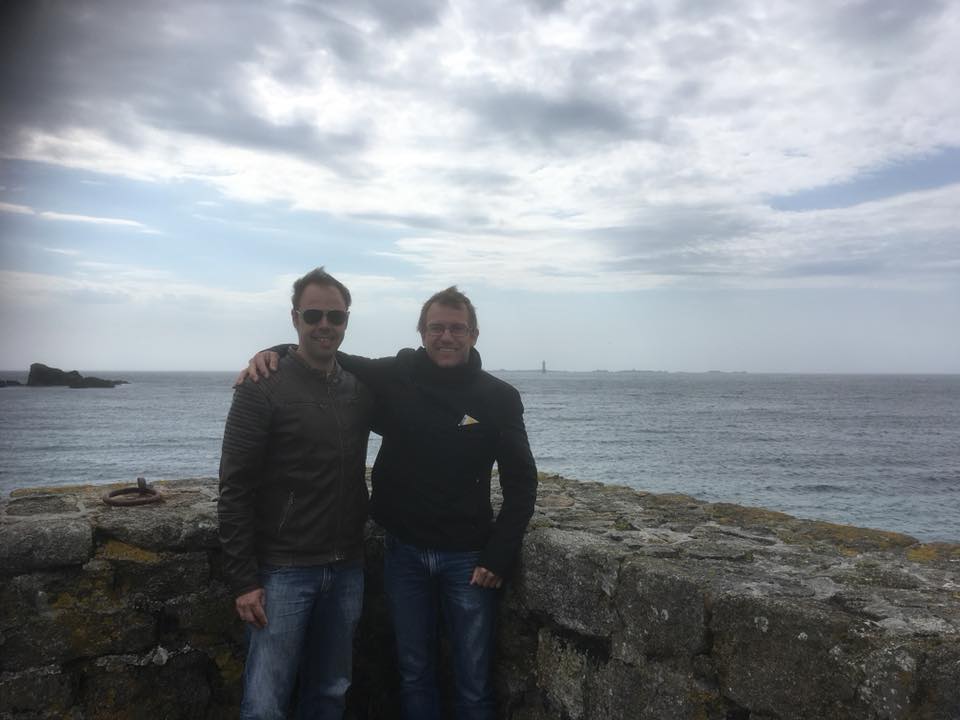
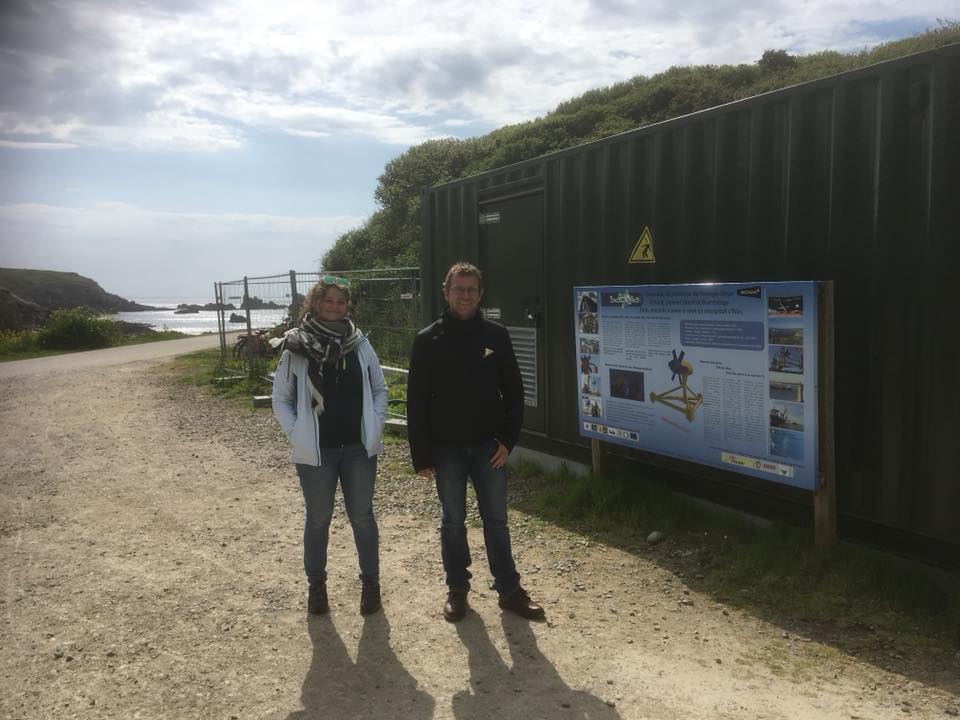
A brief description of project OpTiCA was recorded for Projetocópio radio show at Radio Universidade do Algarve, RUA FM.
In order to estimate the optimum installed capacity of an tidal energy converter array for the Faro-Olhão channel, a DELFT3D hydromorphodynamic model for the whole Ria Formosa has been set-up, calibrated and validated. The purpose of using this model is to define what is the optimum size array, i.e. number of arry rows and number of TECs in each row, that maximises array capacity factor minimiseing detrimental environmental impacts, especifacally those associated with sedimentation/erosion rates and tidal prism.
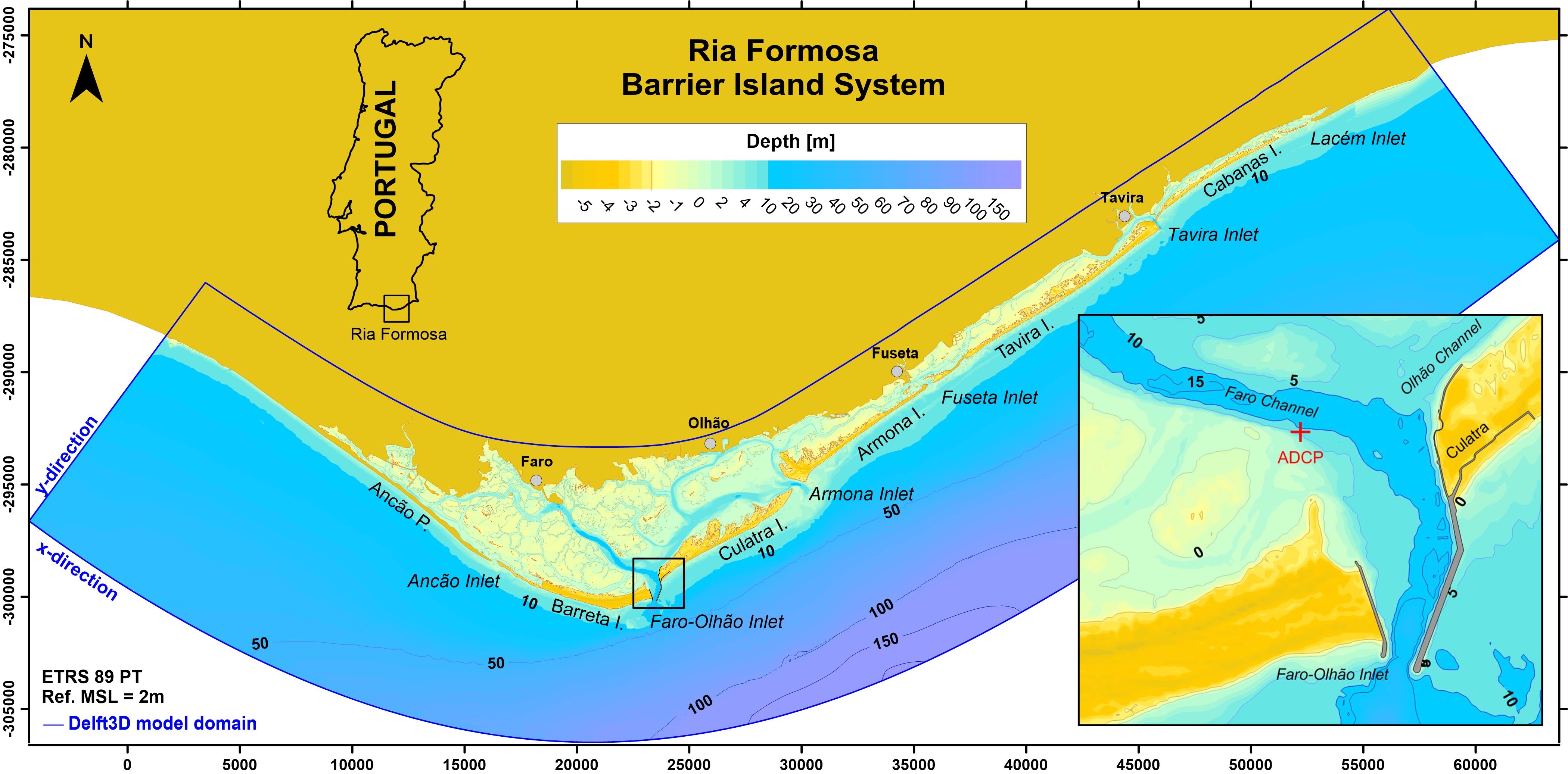
Project FLOWSPA - Floating Offshore Wind Support Platform Assembly - SME Instruments phase 1
During my secondment at Oceanflow, I had the opportunity to assist them in the design and construction process of a 1:36 scale Starfloat™ prototype, a floating offshore wind foundation solution. The tasks I was involved included numerical dynamic analysis using OrcaFlex software, CFD simulations using ANSYS Fluent and prototype assembling.
Oceanflow was successful in winning Horizon 2020 SME Instrument Phase 1 (Project FLOWSPA - Floating Offshore Wind Support Platform and Assembly Solution) support to develop Starfloat™. The Company is seeking industry and academic collaboration partners in Europe to participate in Phase 2 which will involve the build and deployment of a technology demonstrator at significant scale.
Starfloat™ incorporates Oceanflow's knowledge of low motion semi-submerged platforms and low cost steel construction methods to deliver an economic solution for the exploitation of deep water offshore wind. Starfloat™ is a very compact and low cost floating foundation offering real improvements in the levelised cost of electricity (LCOE) from deep water offshore wind farms.
Starfloat™ achieves the high stability levels needed to support large rated output horizontal axis turbines with its innovative "Multifloat-spar" platform design that combines a ballasted spar with a supporting multifloat semi-submerged buoyancy collar. This allows Starfloat™ to be deployed in water depths that are too shallow for mono-spar solutions. The compact multifloat flotation collar has a much lower overall breadth than the equivalent semi-submerged floating foundation solution thus allowing it to be fabricated at standard shipbuilding drydocks.
The simple low cost structural elements of Starfloat™ are designed for easy of fabrication and involve a patent protected (Patent application GB2538329) assembly strategy that takes cost and risk out of the build and commissioning of the complete floating wind turbine. Starfloat™ embodies Oceanflow's expertise in the development of low motion semi-submerged platform tethered by simple low cost chain catenary mooring systems.
Below are pictures of the assembly process:
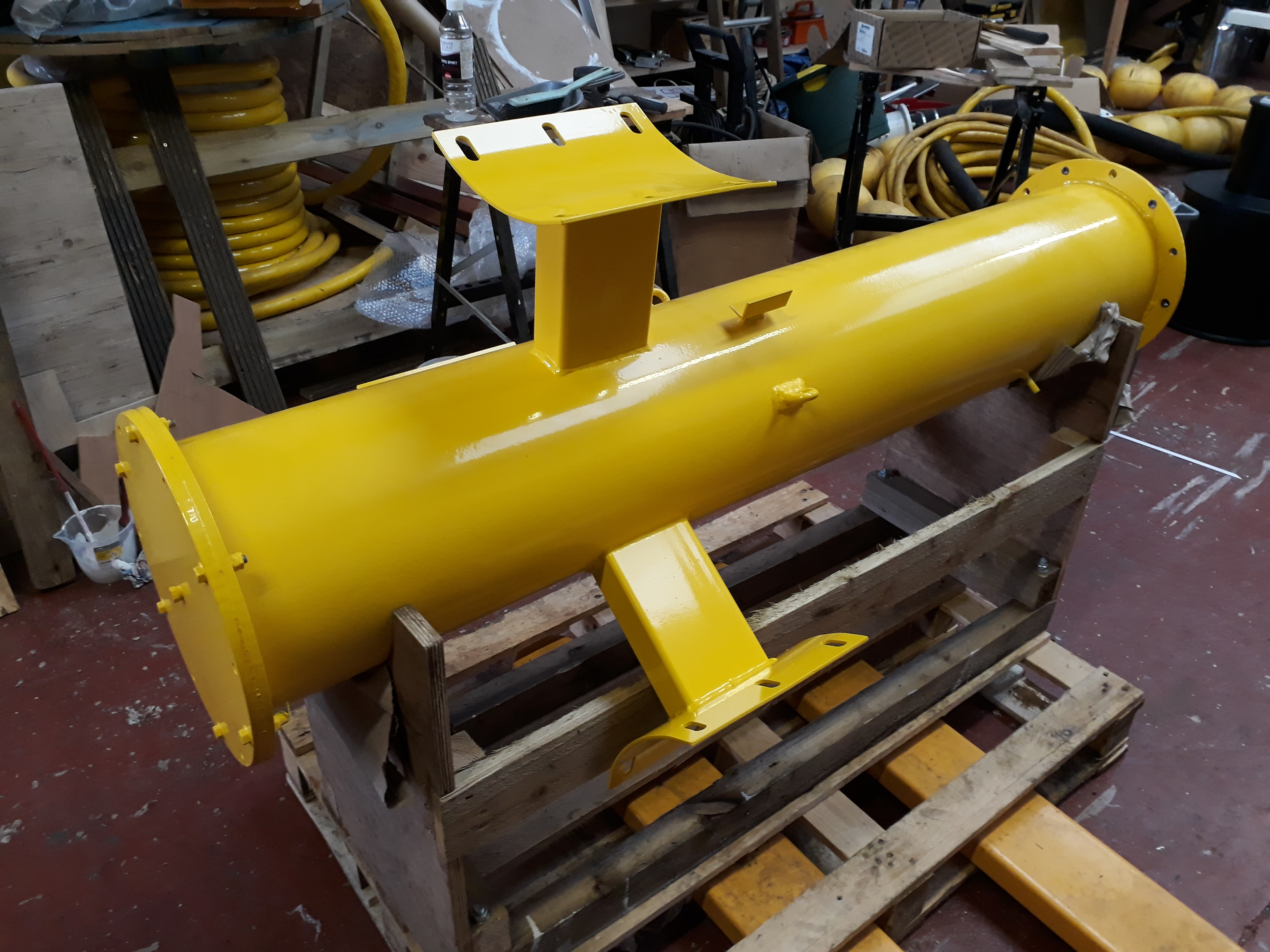
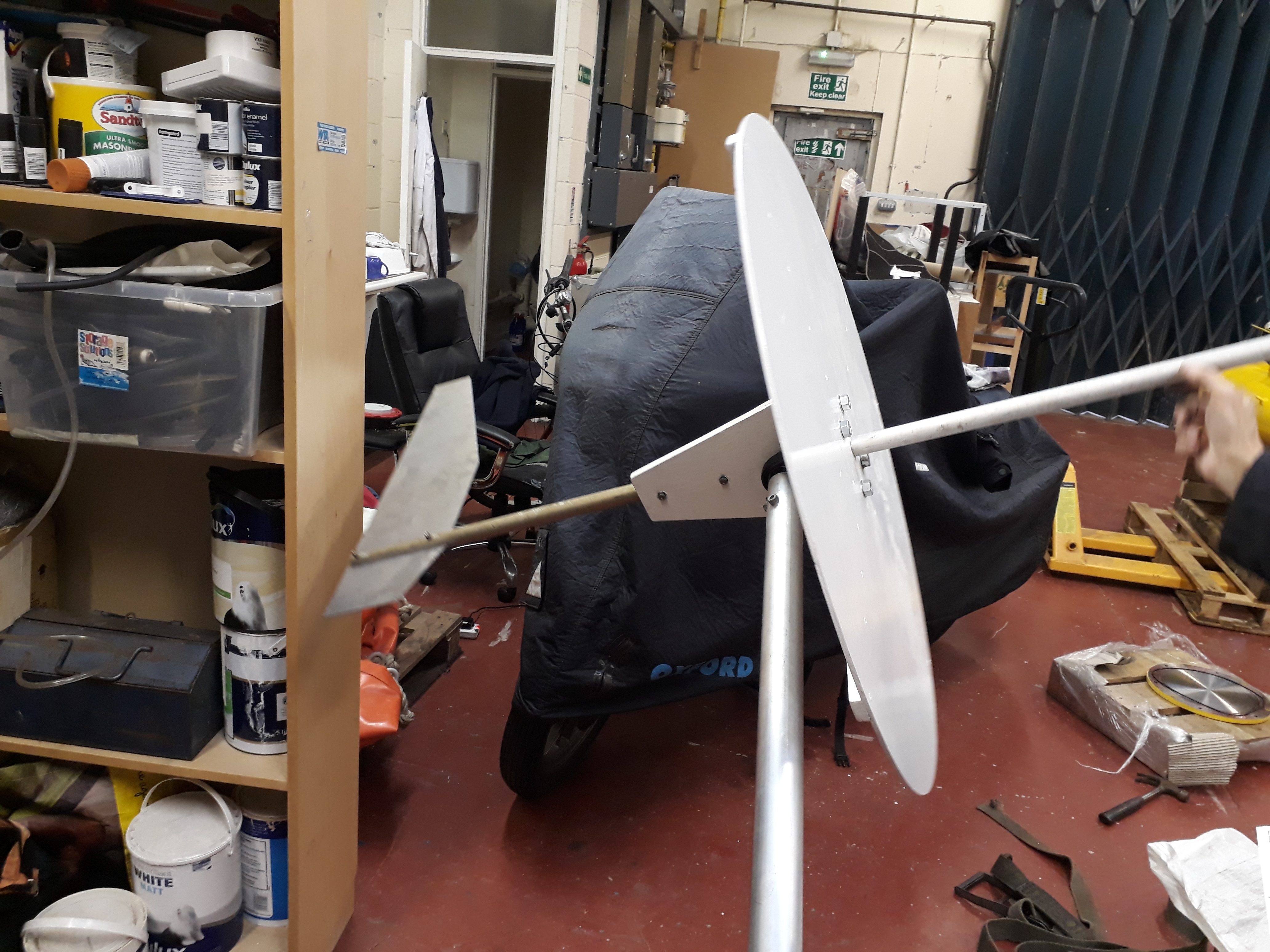
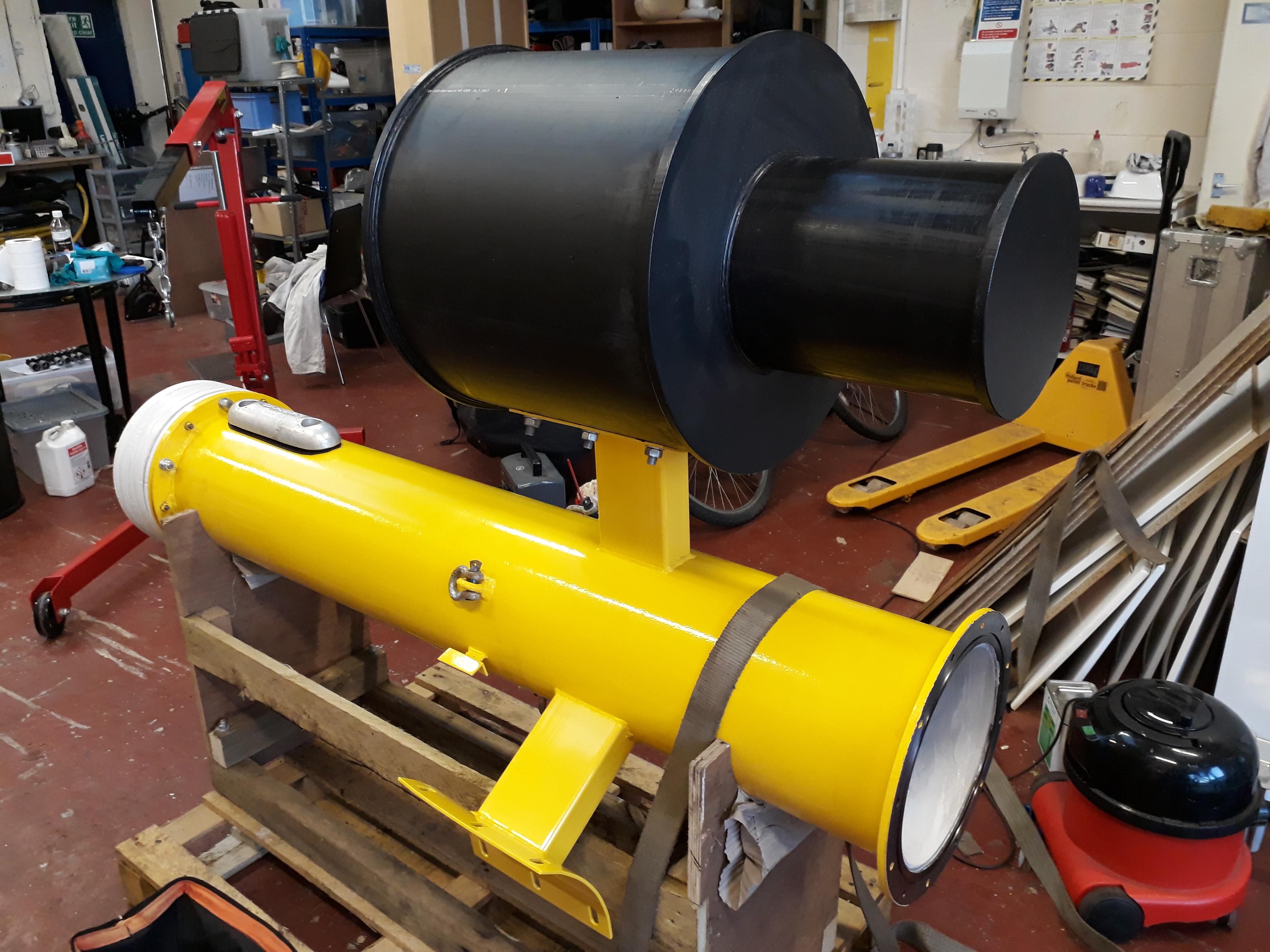
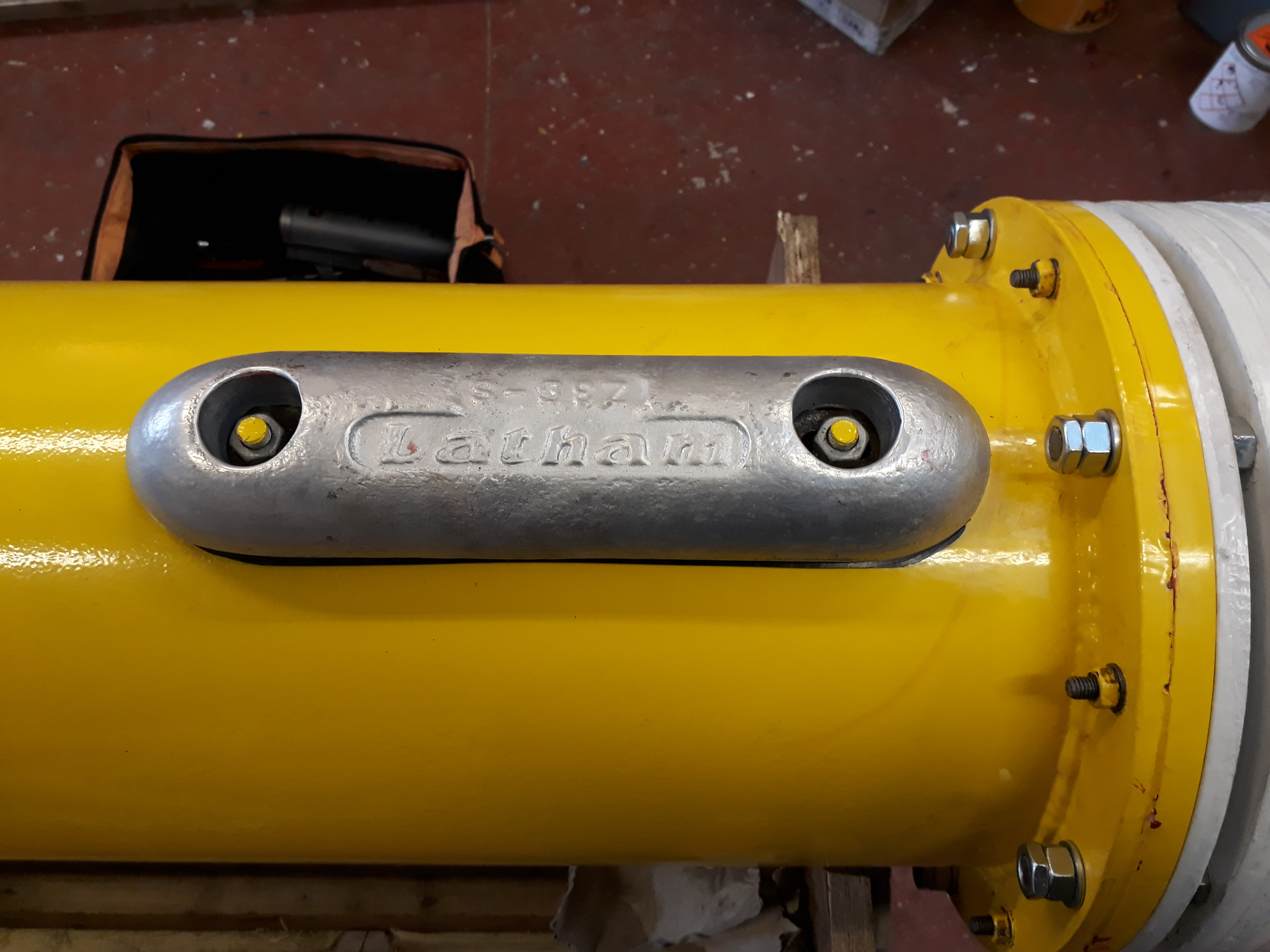
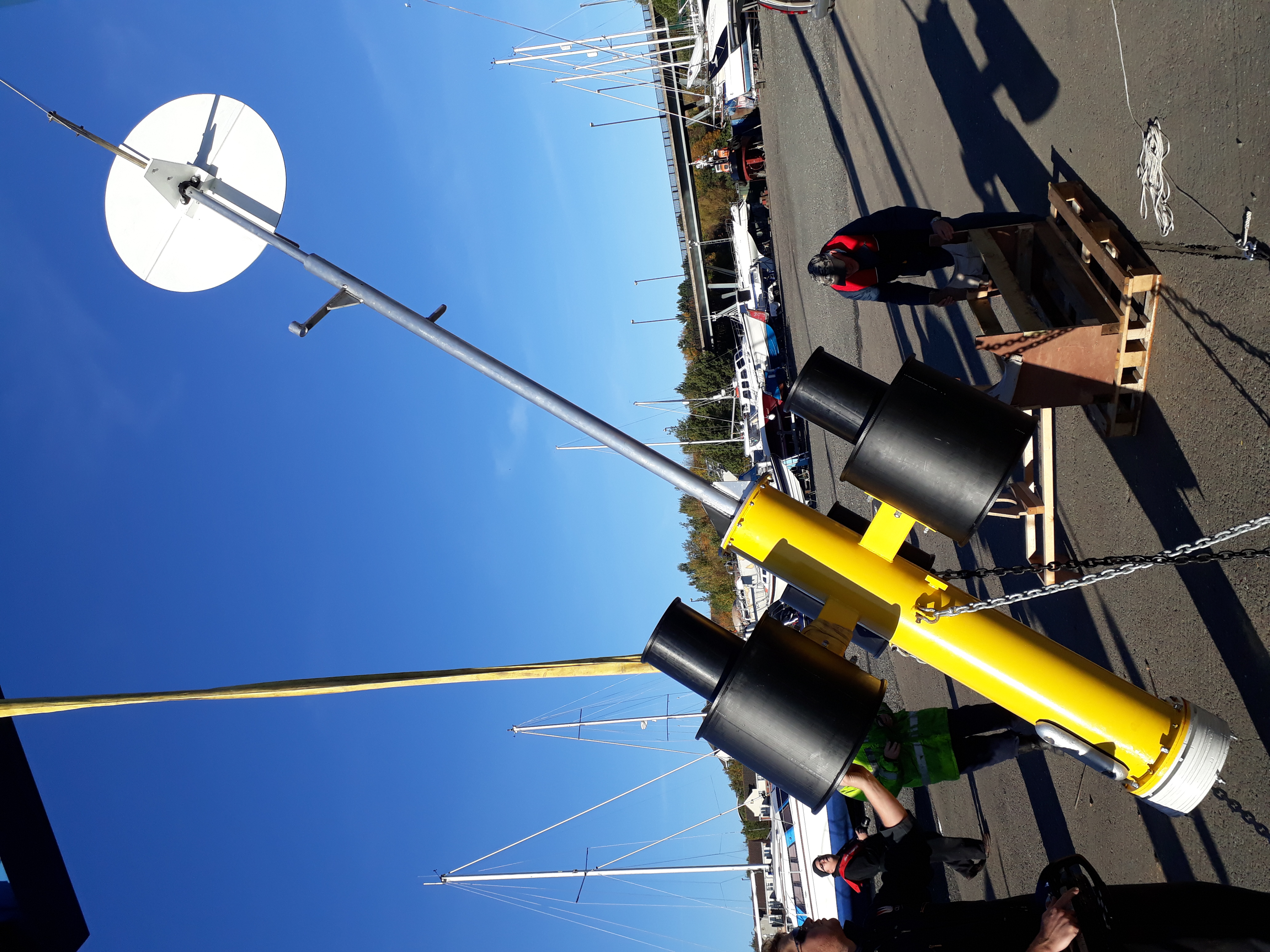
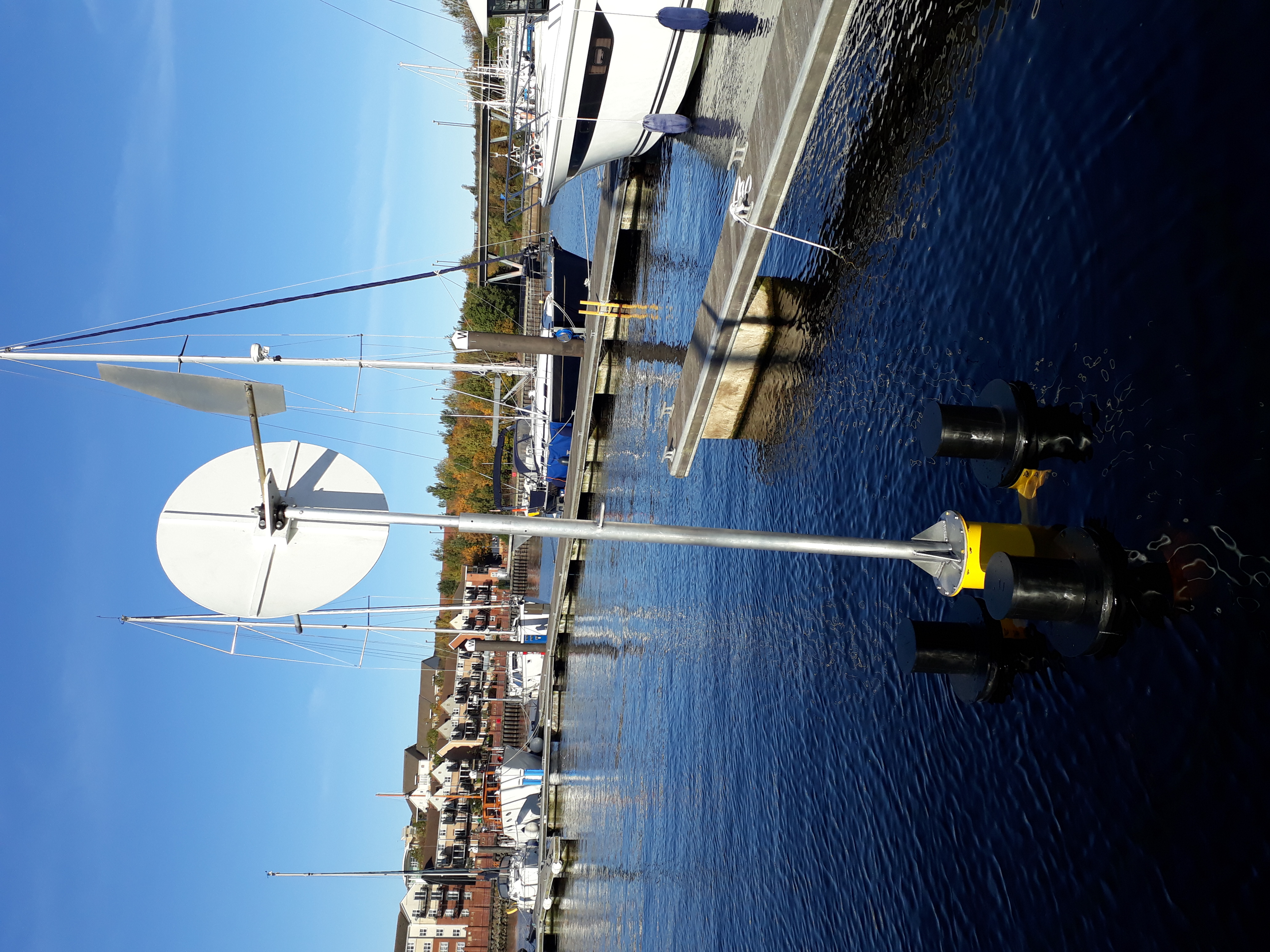
Pitch test video:
While my secondment at Oceanflow Energy Ltd. I had the chance to learn how to use OrcaFlex software. I heleped OFE to implement a contrarotating moment in the idealised rotor representation. For that purpose, we divided each blade in several sections to account twist angle as well as drag and lift coefficents. It follows an schematic represantation of StarFloat 6MW in OrcaFlex:
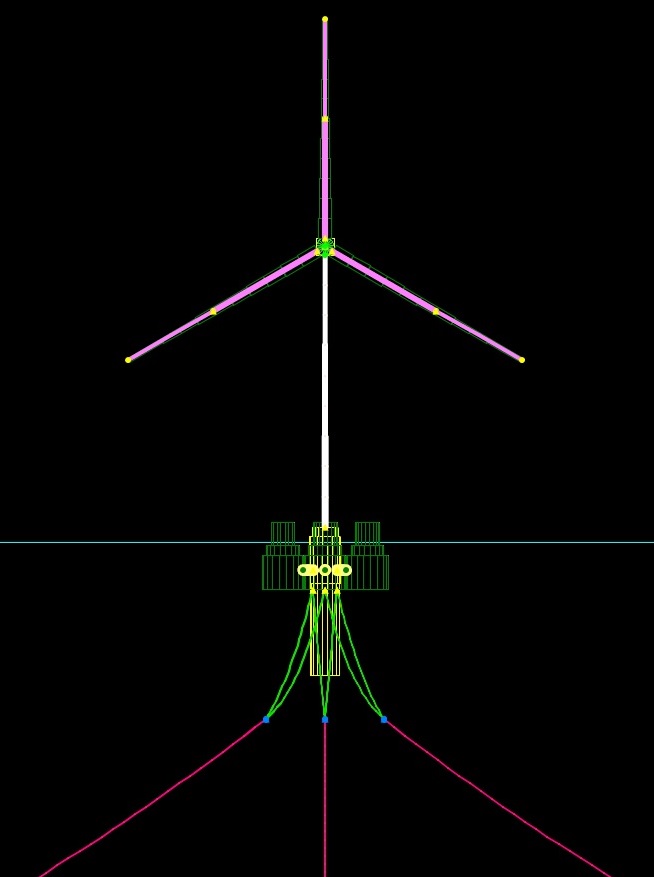
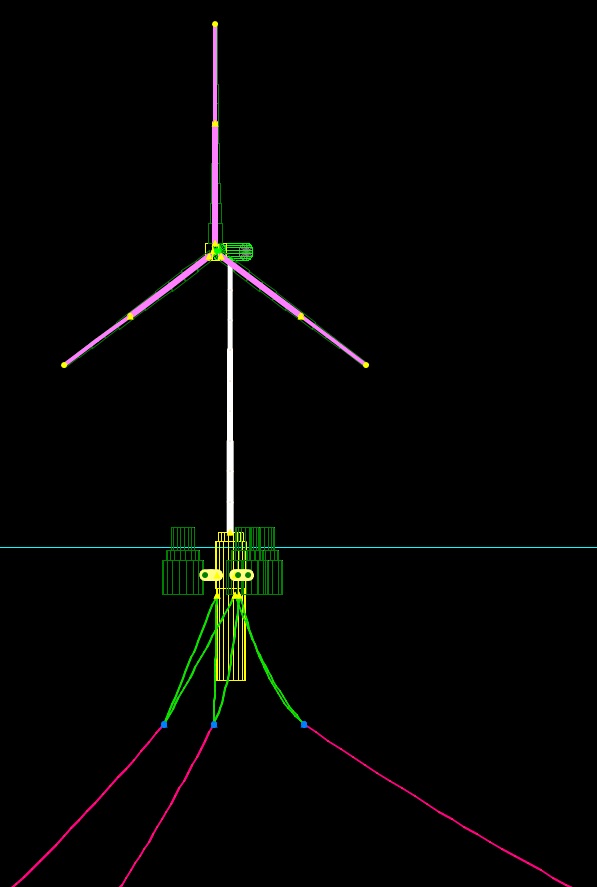
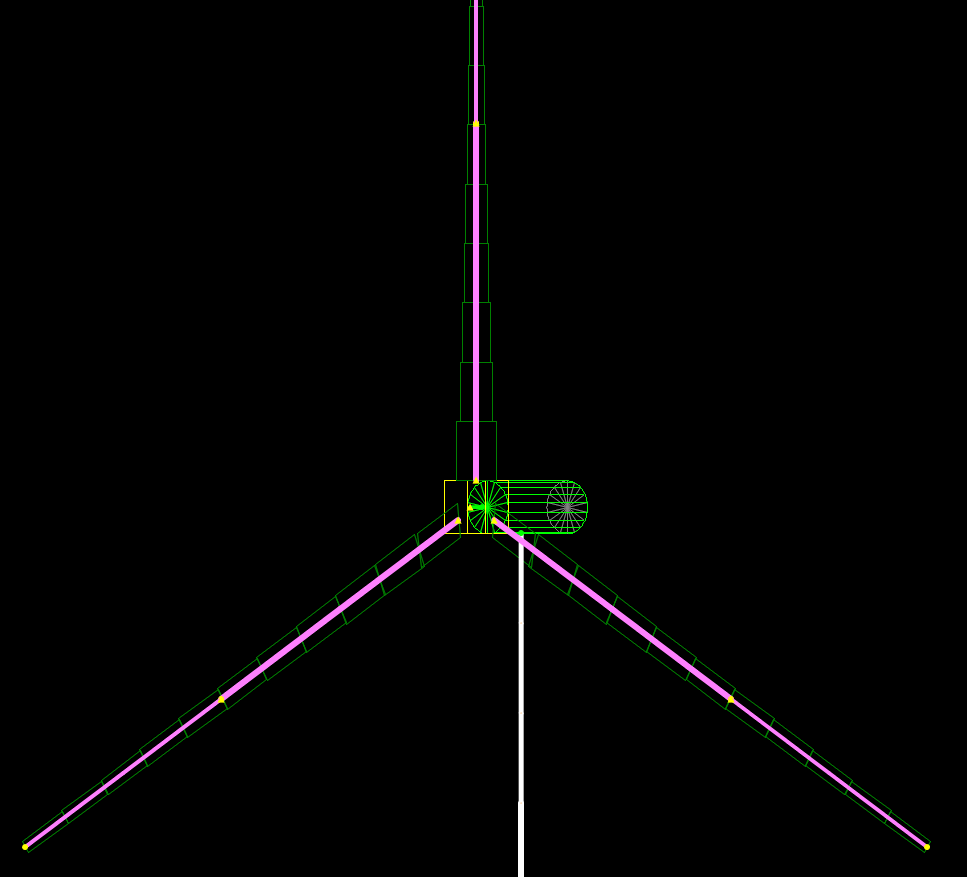
Sanda Sound tidal energy test site mooring lines decommissioning (28/09/2017-01/10/2017)
On September 30th, I had the opportunity to help Oceanflow Energy Ltd. (OFE) in the decommissioning of mooring lines and power export cable from Sanda Sound tidal energy test site. In 2014, OFE deployed a 35 kW Evopod (E35) for testing at Sanda Sound. The E35 operated for 1 year.
As required by The Crown Estate, to finalize the decommissioning process, E35 mooring systems and power export cable have to be withdrawn from test site seabed. The 60t mooring system consist of chains of 96 mm, 32 mm and 26 mm.
For this purpose, OFE has contracted Leask Marine Ltd. to accomplish this task. The decommissioning operation took place on September 30th, 2017 from 5:30h to 22:00h followed by a seabed video survey on the 3rd October.
It follows some of the pics from the decommissioning operations.
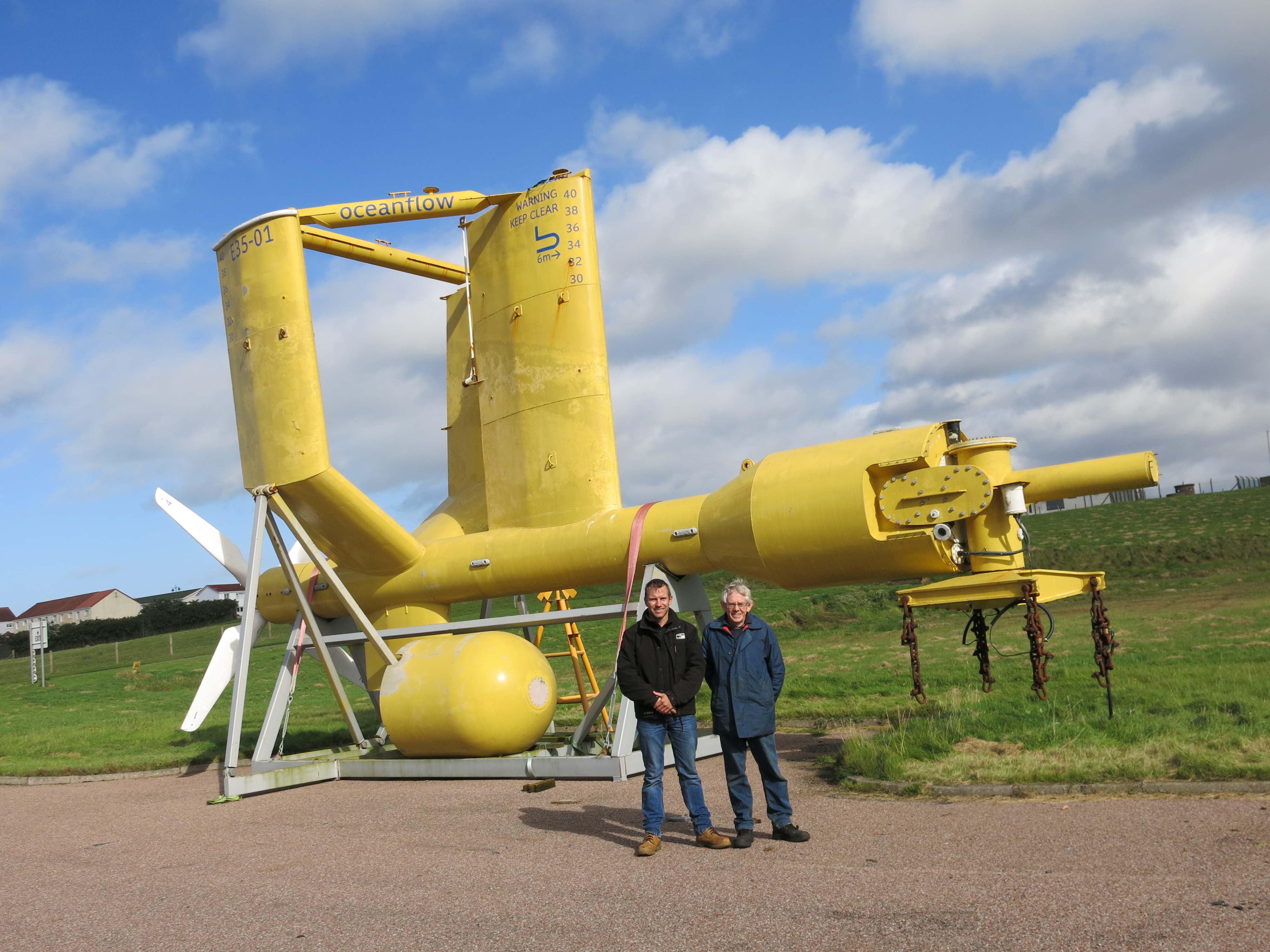

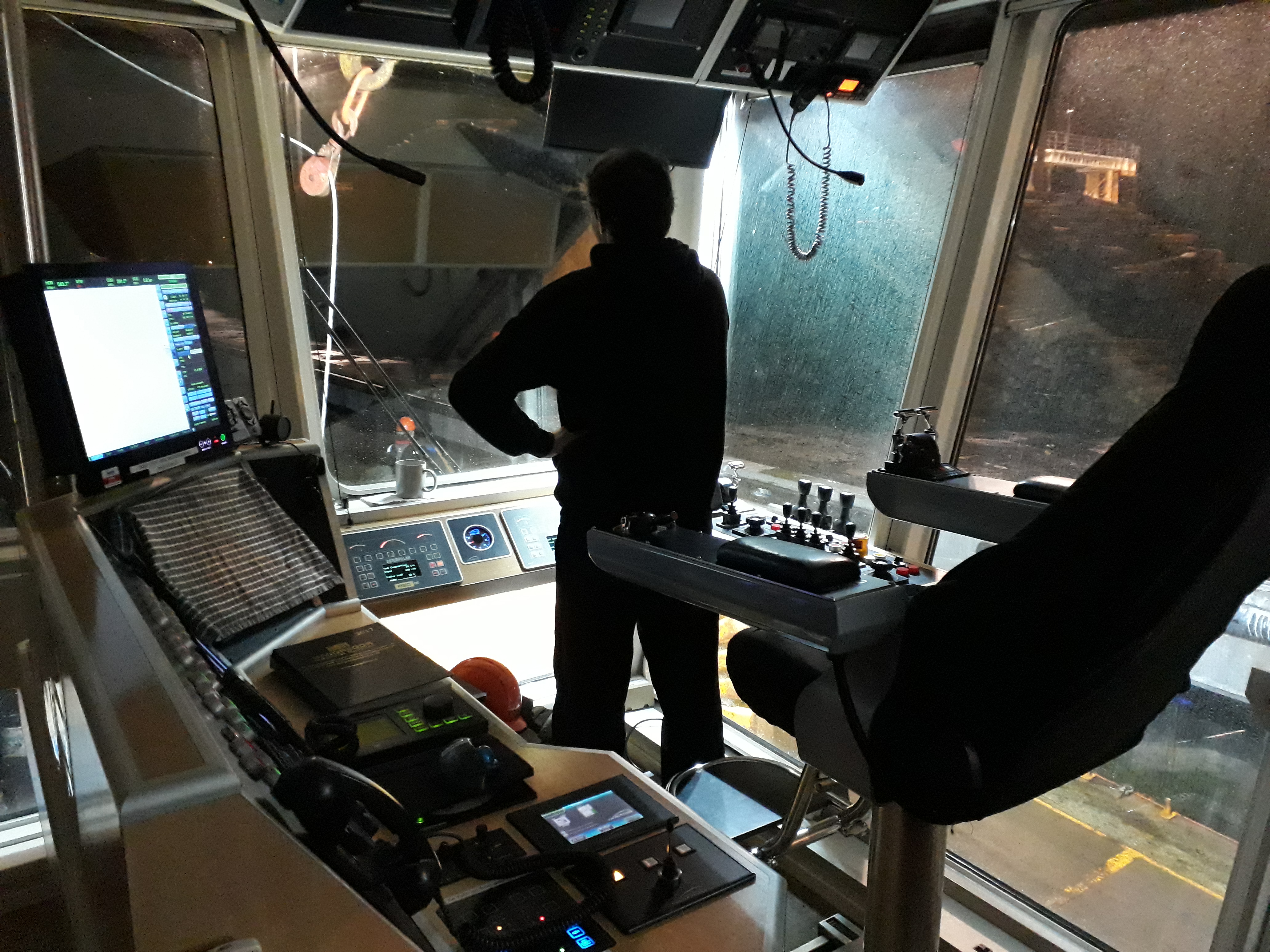
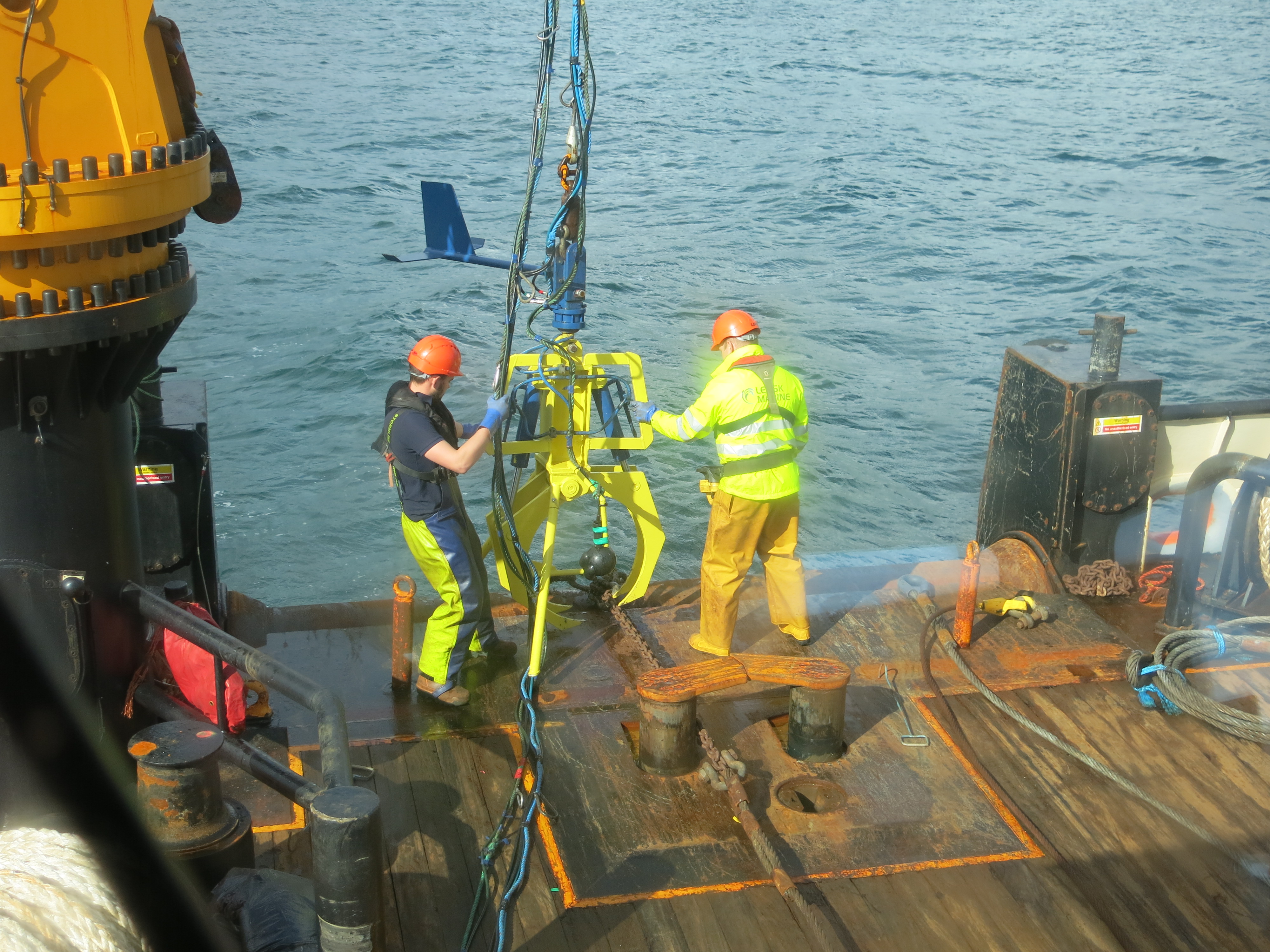
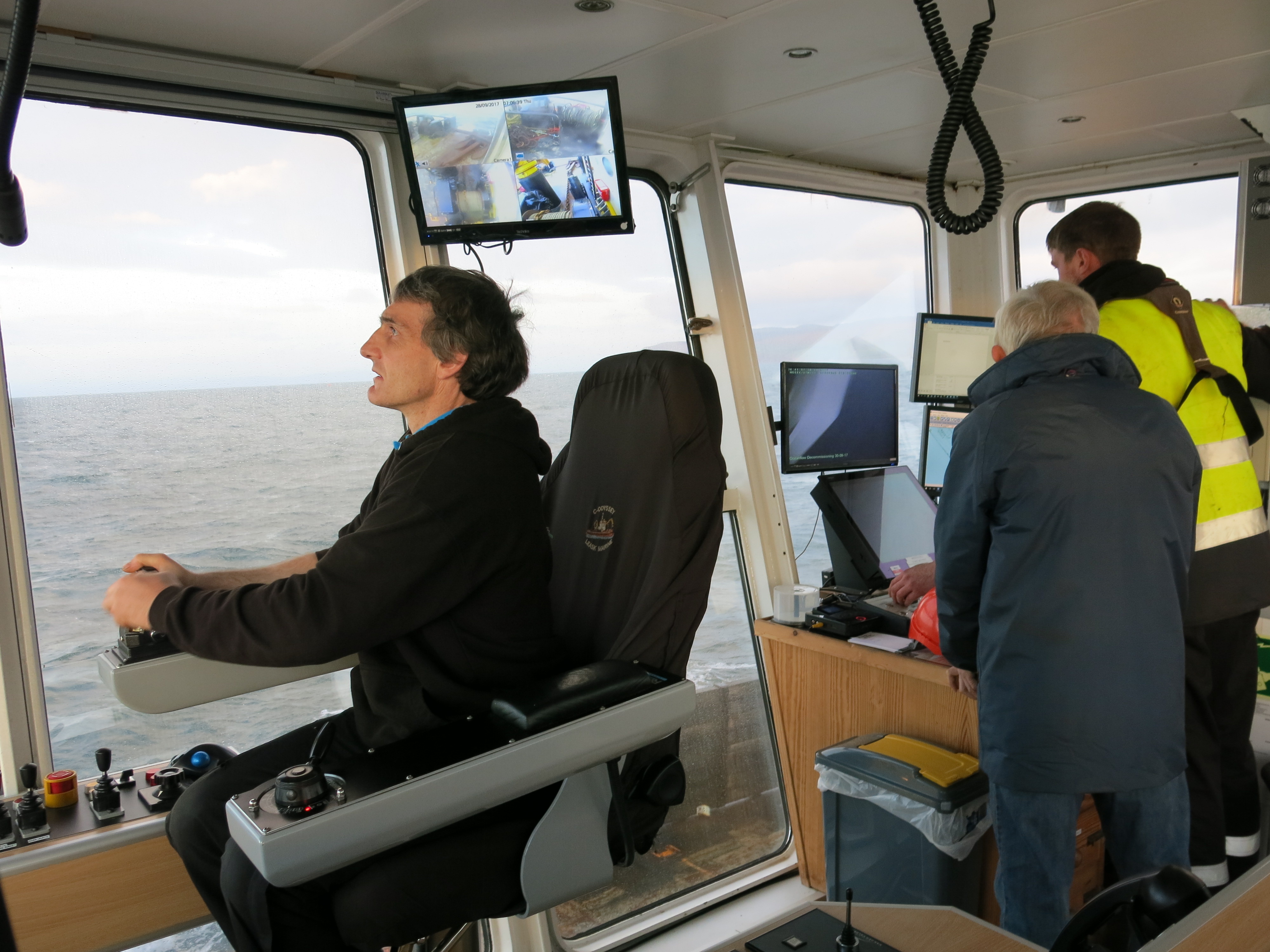
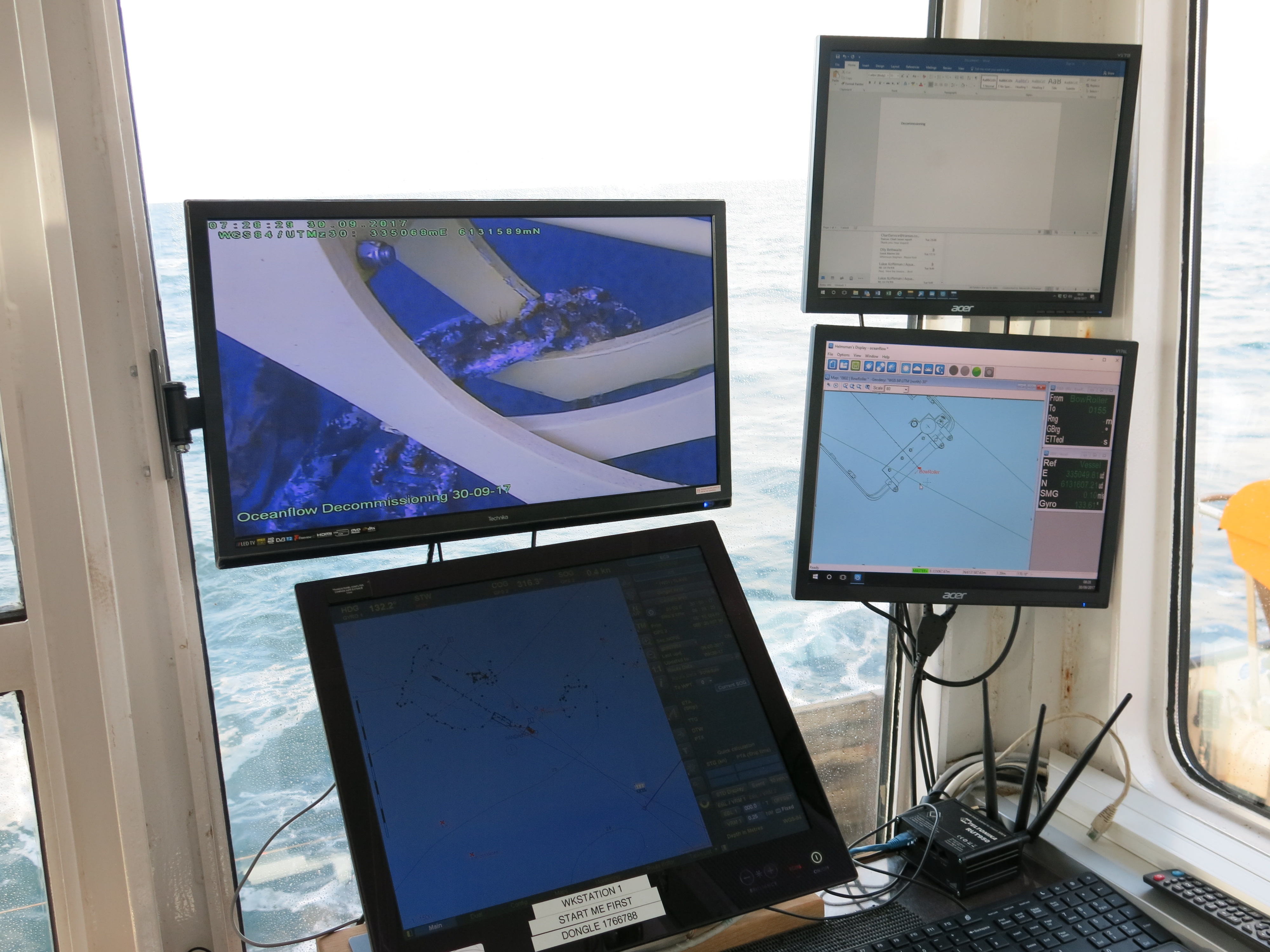
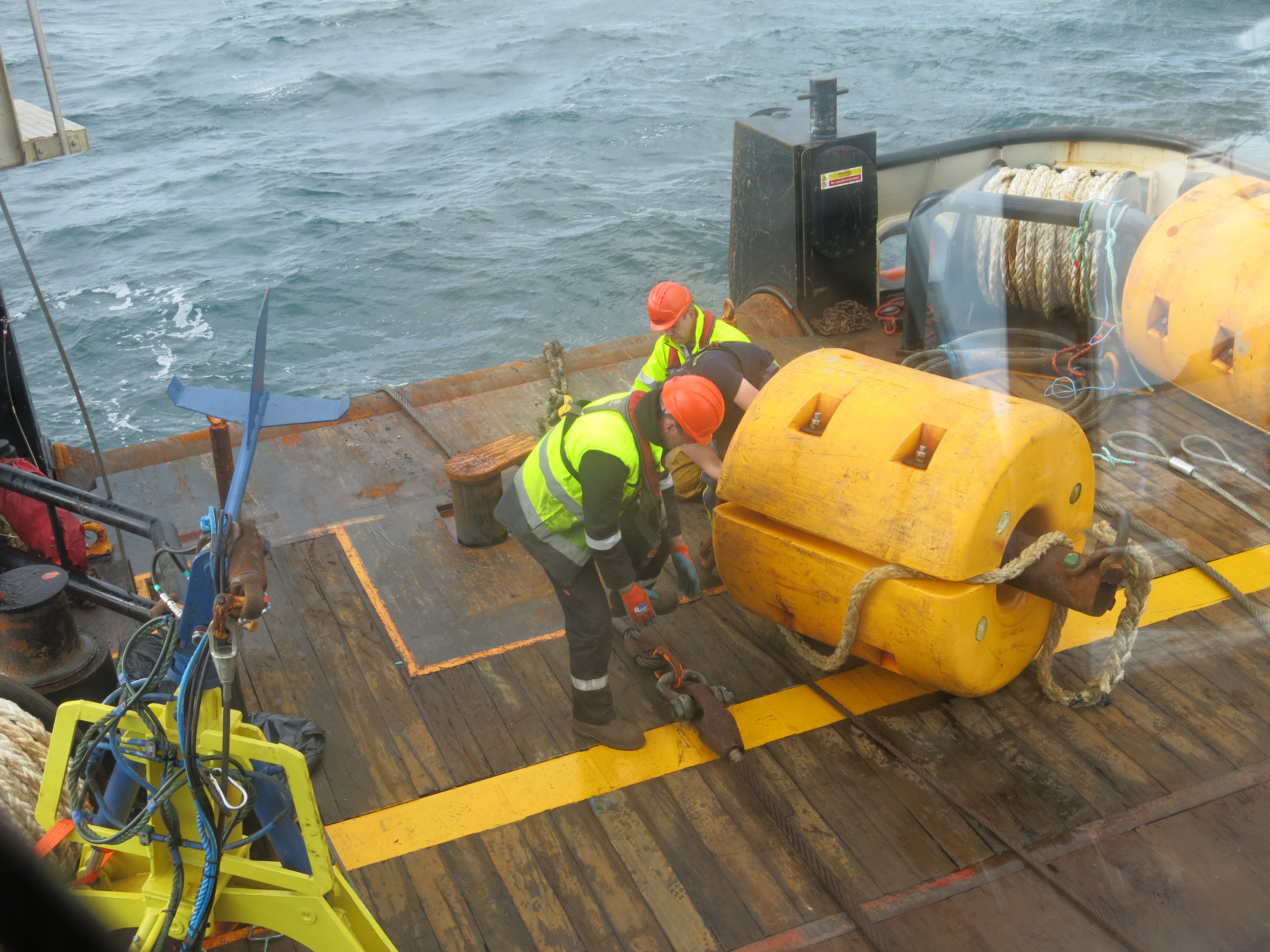
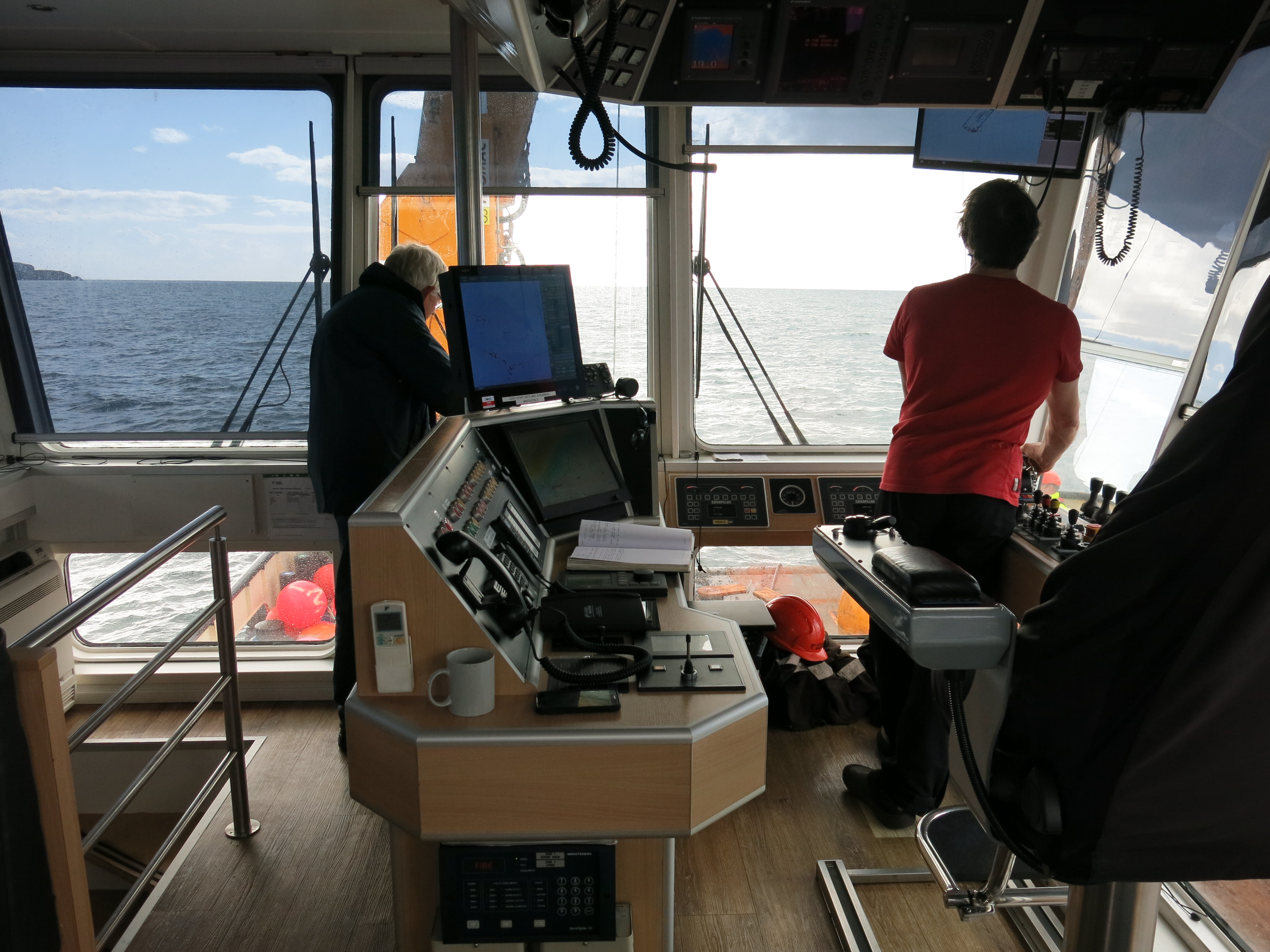

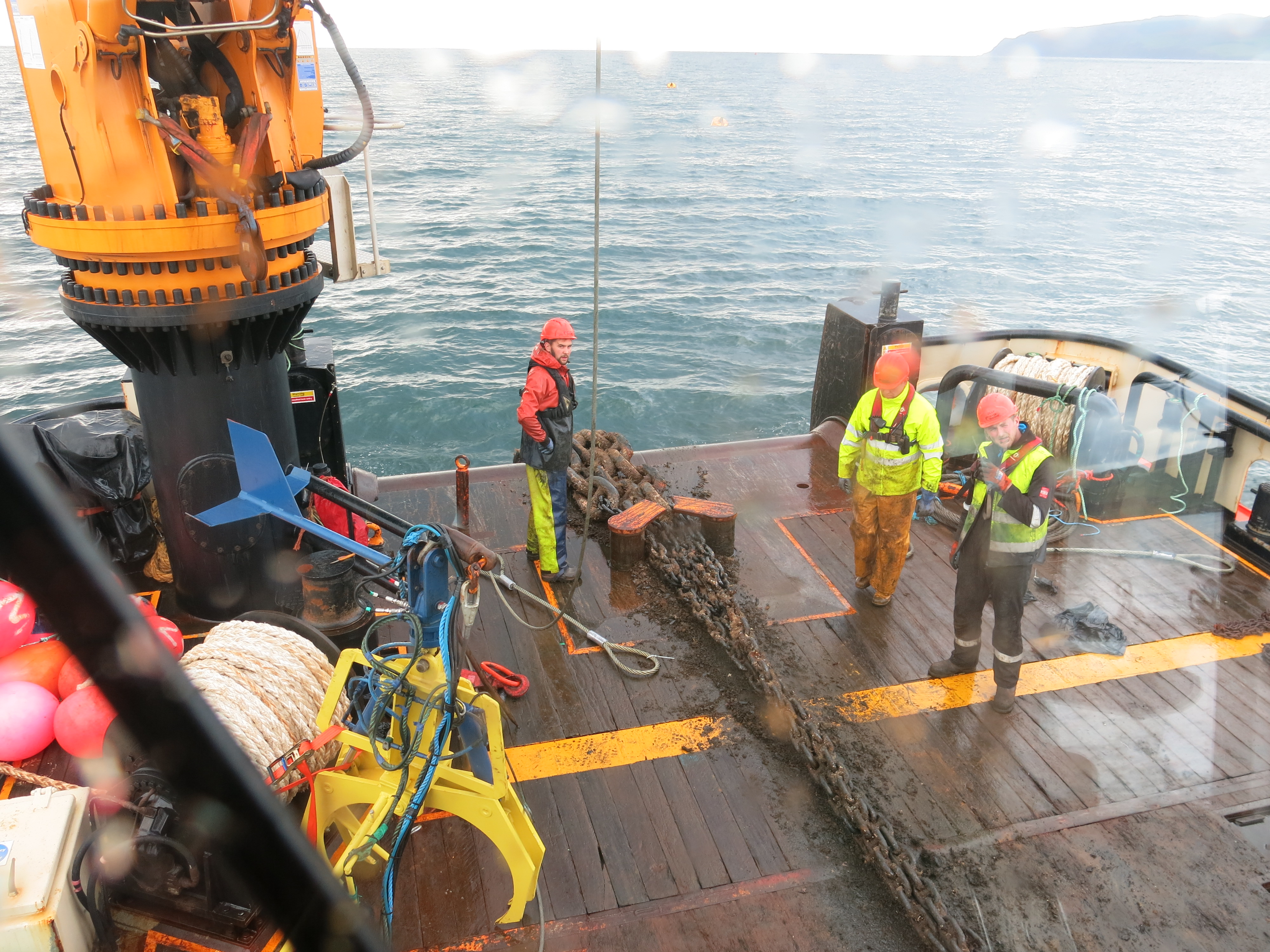
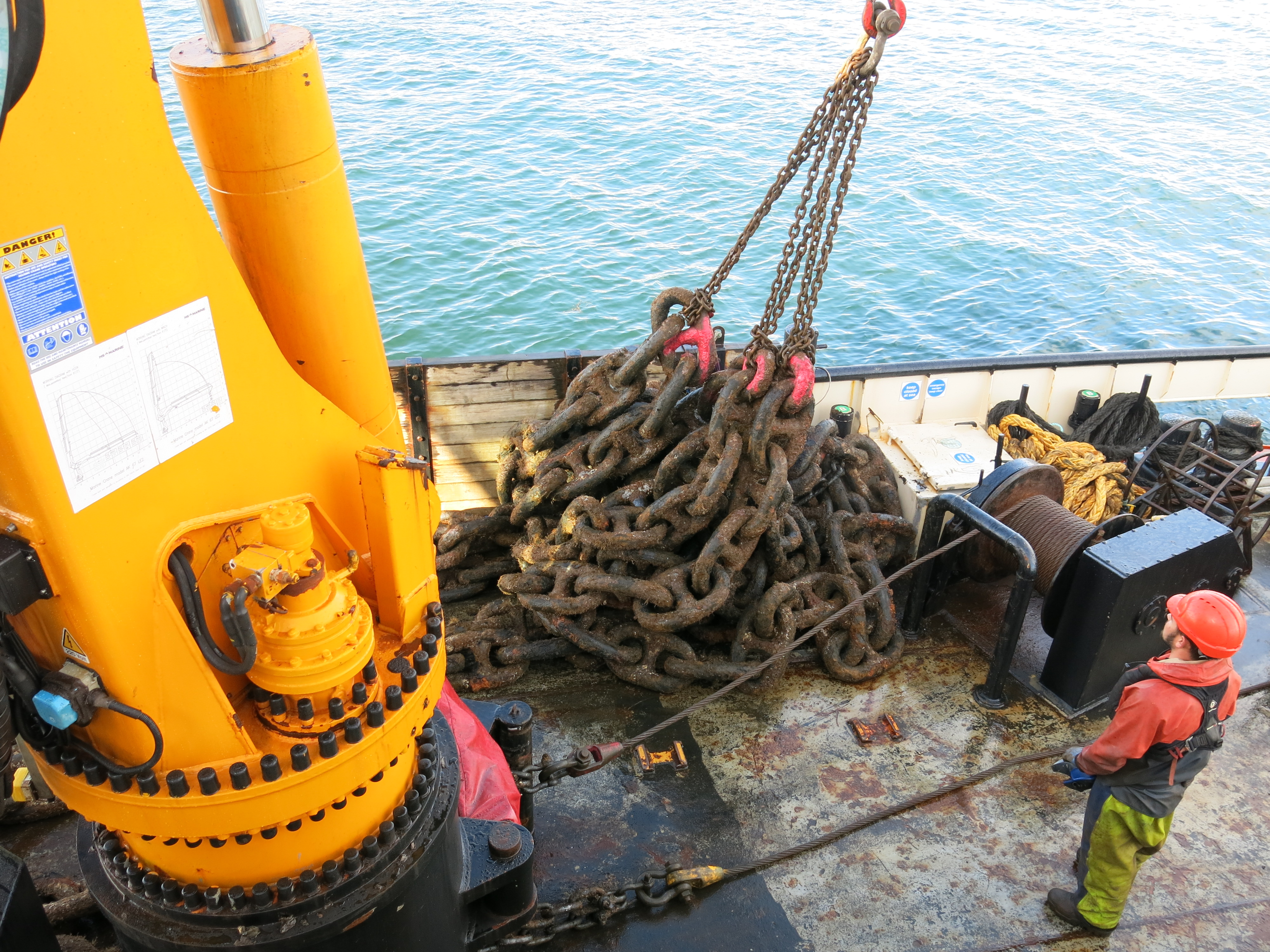
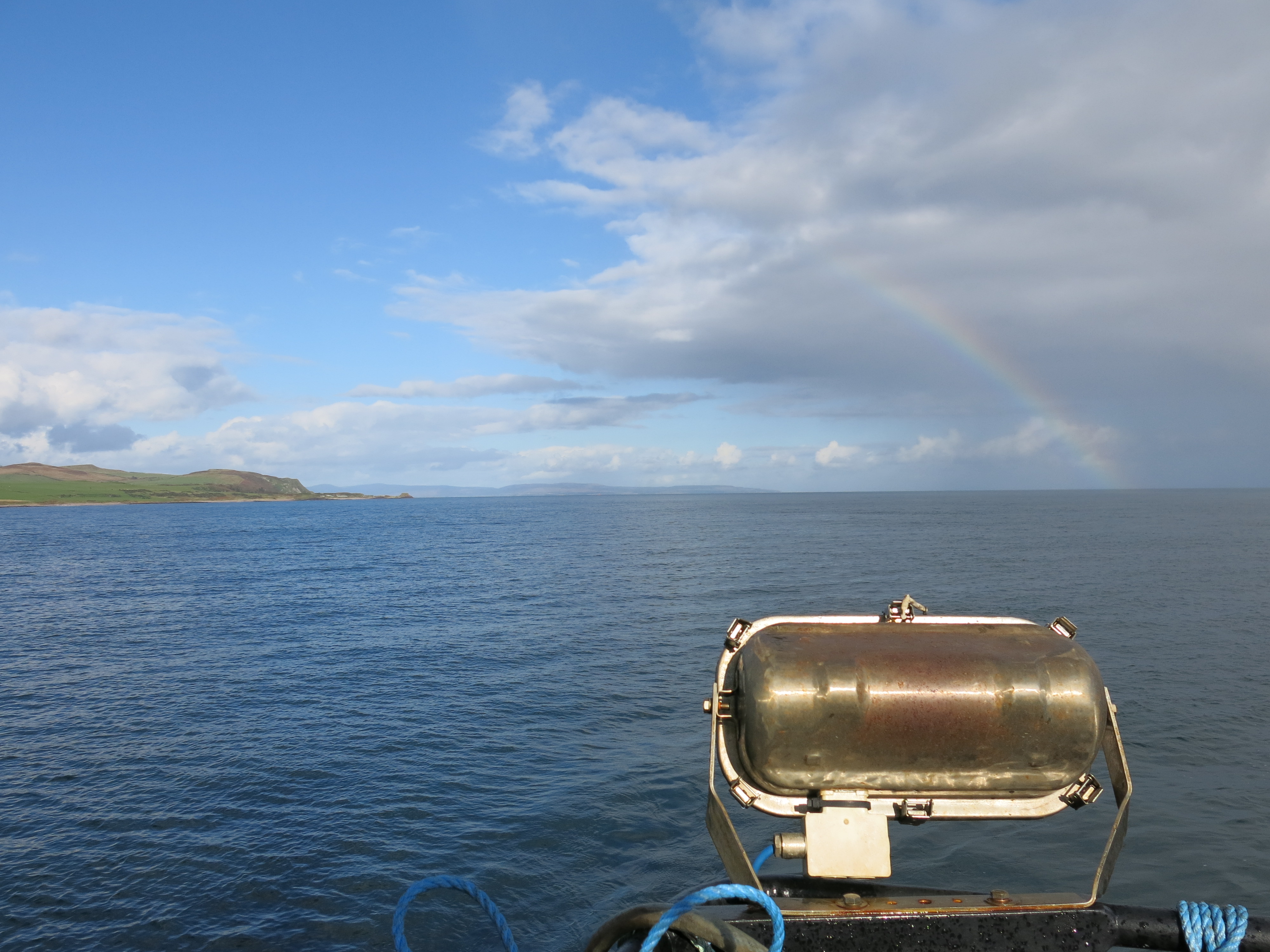
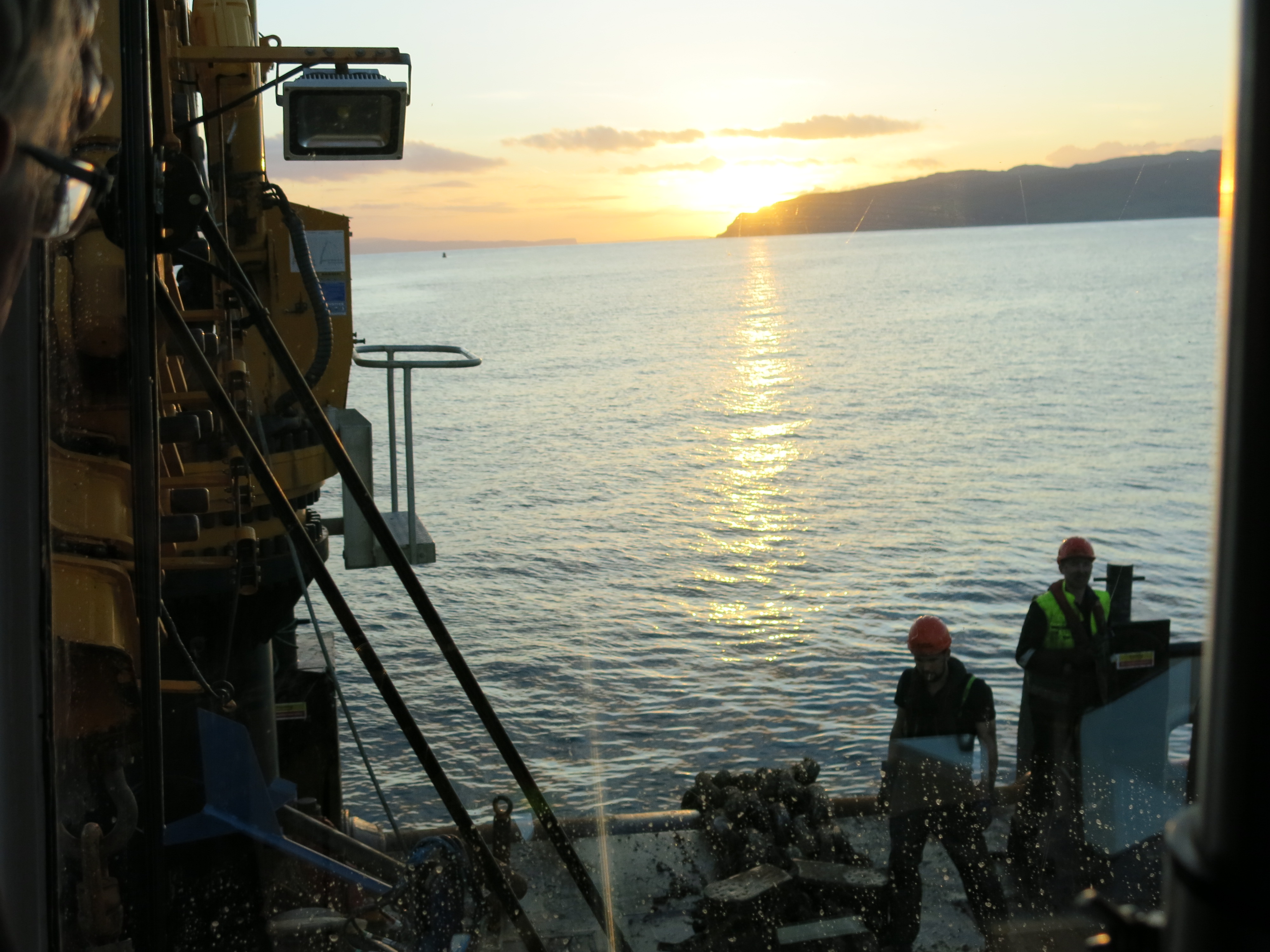
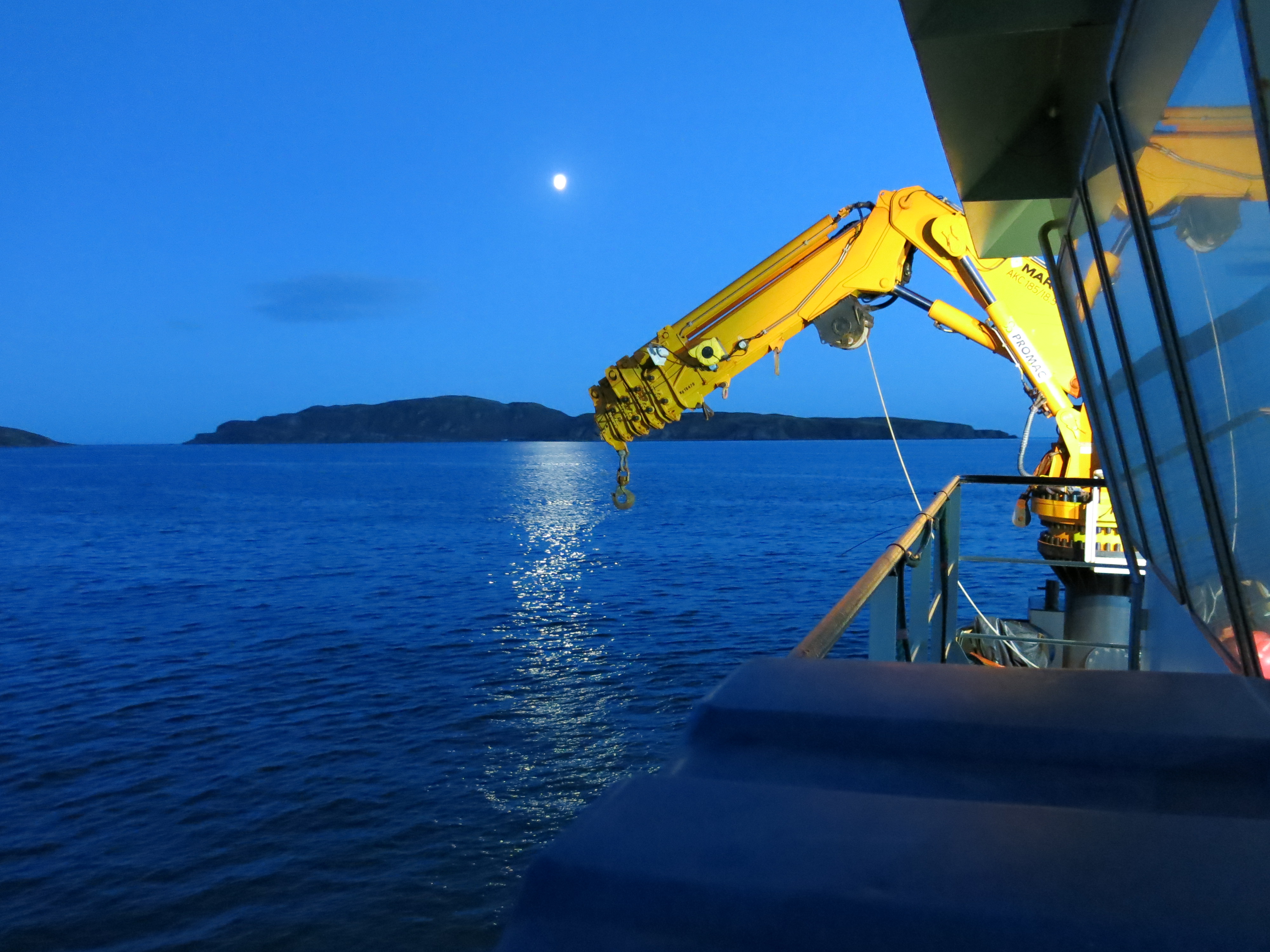
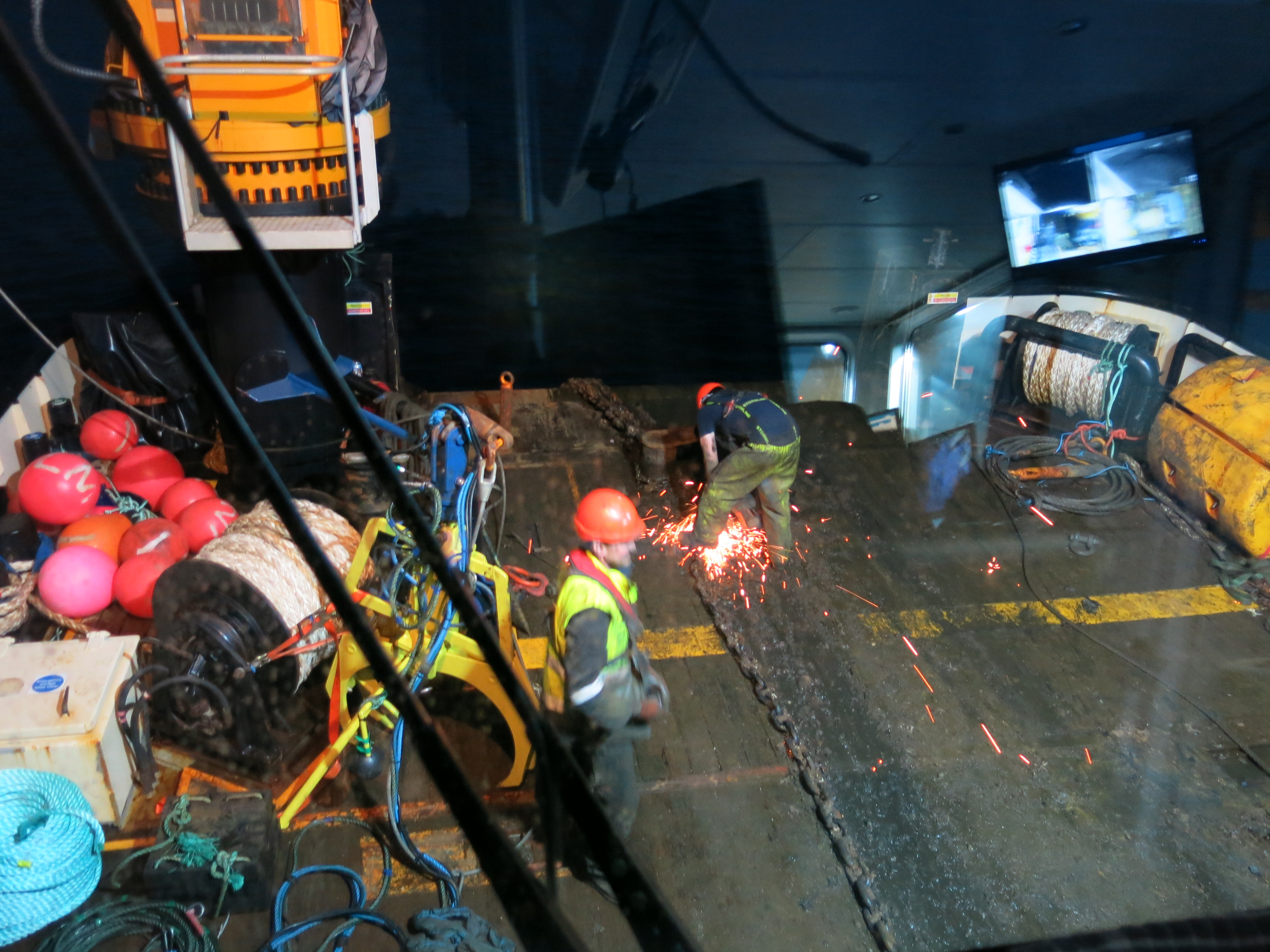
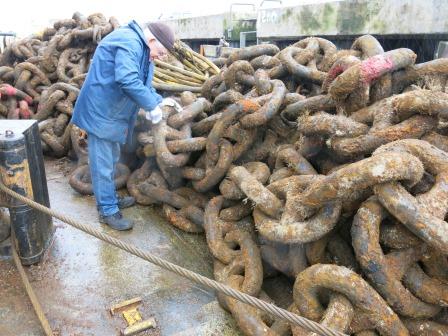
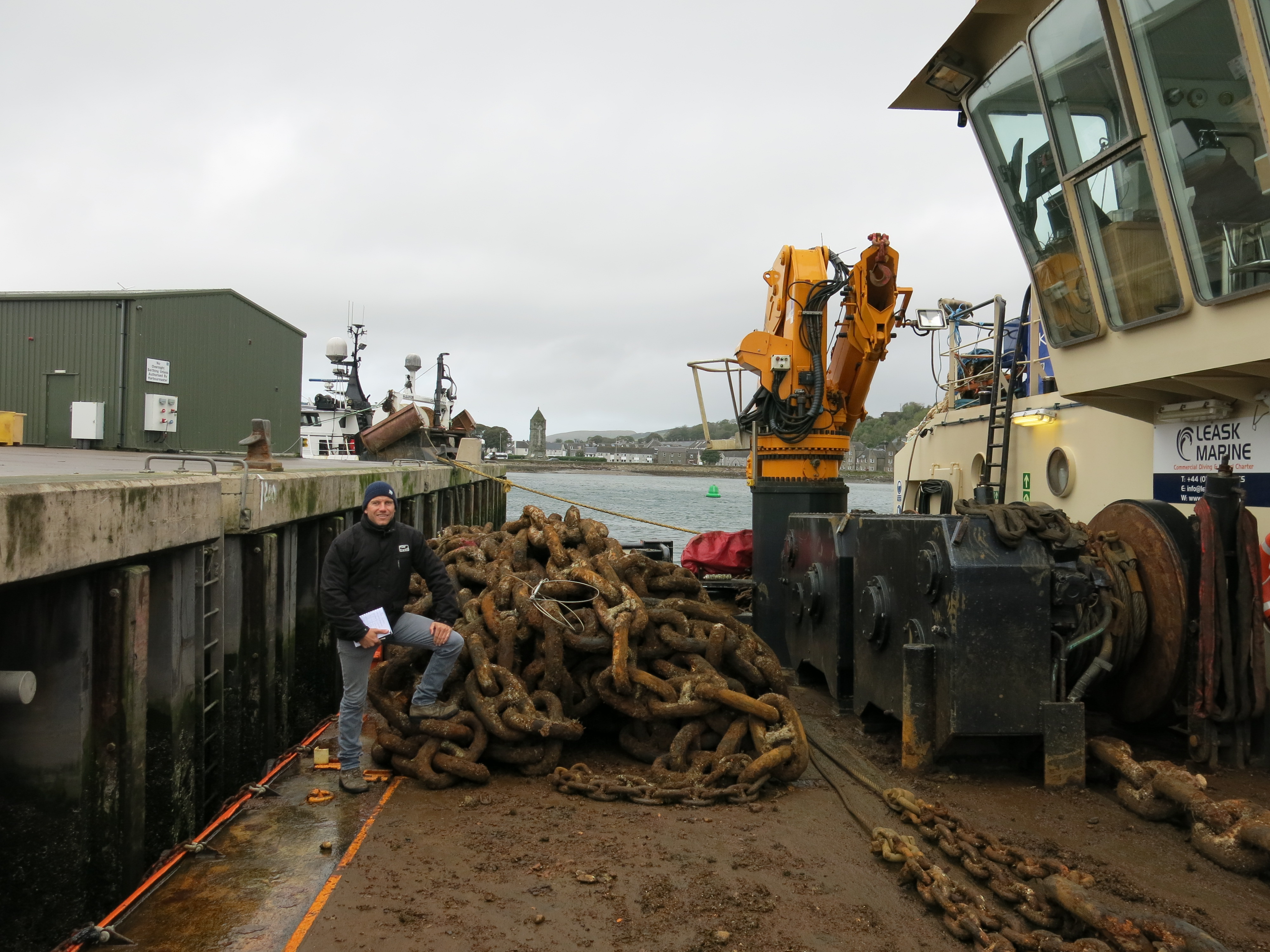

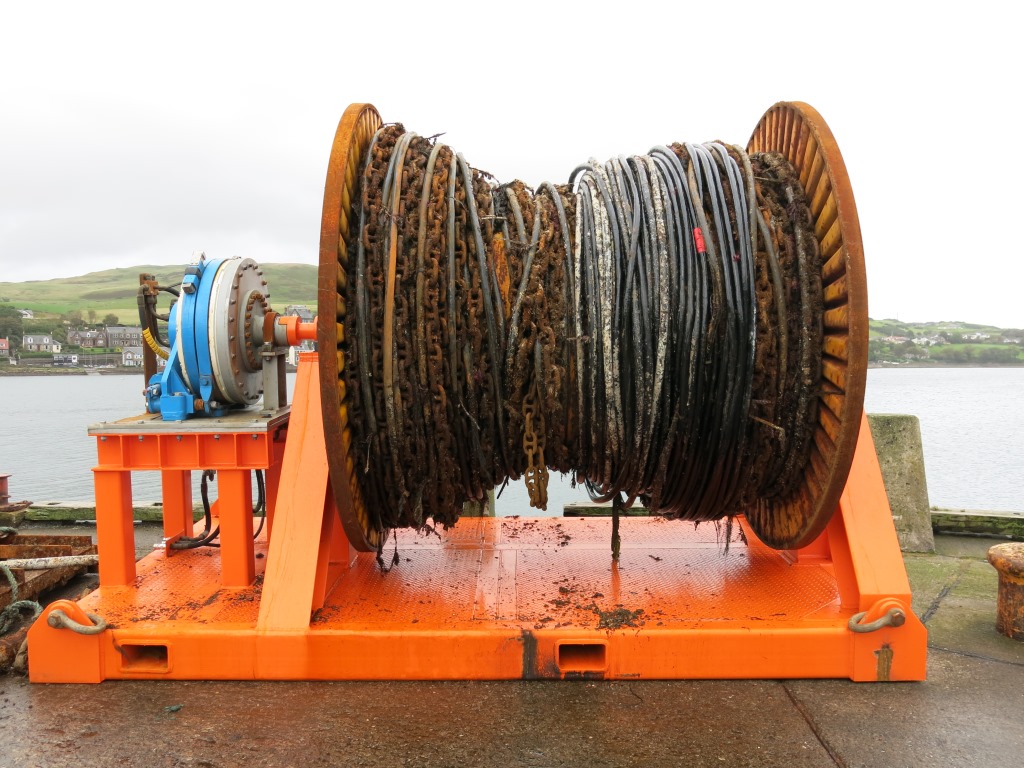
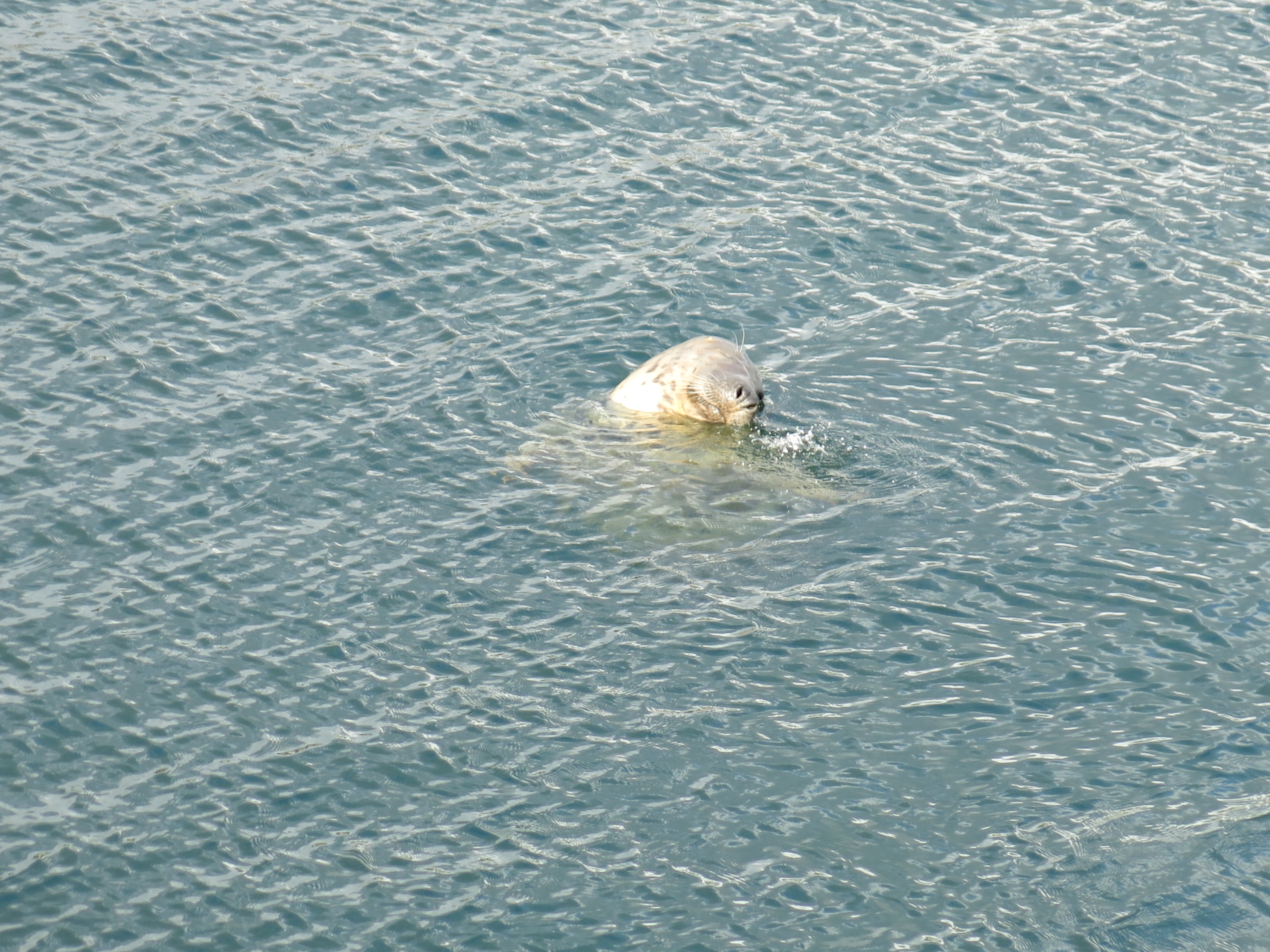
As part of WP3 (Modelling TEC arrays), we delivered a poster presentation (D3.1) at EWTEC. The title of the work is "Assessing the Effects of Tidal Energy Converter Array Size on Hydrodynamics of Ria Formosa (Portugal)". It consists in a preliminary presentation of the potential environmental effects associated with TEC array and the importance of taking into account those impacts during the design phase of a TEC array. This work is based on the SCORE project.
Abstract — This paper investigates the effects of Tidal Energy Converter (TEC) array size at a tidal channel on flood/ebb discharges at multi-inlet coastal lagoon by applying numerical modelling. The paper presents a case study for the Faro-Olhão inlet in the Ria Formosa (Portugal), a potential site for tidal instream energy extraction. Arrays of up to 11 rows with 5 TECs each were studied to assess impacts on inlets discharges changes. For the particular cases assessed the results show that tidal energy extraction will have a greater impact on Ancão and Armona inlets discharges together with the Faro-Olhão inlet. Future work is directed to include impacts on sediment dynamics and optimise TEC array size as a function of multiple design variables subject to environmental constraints.
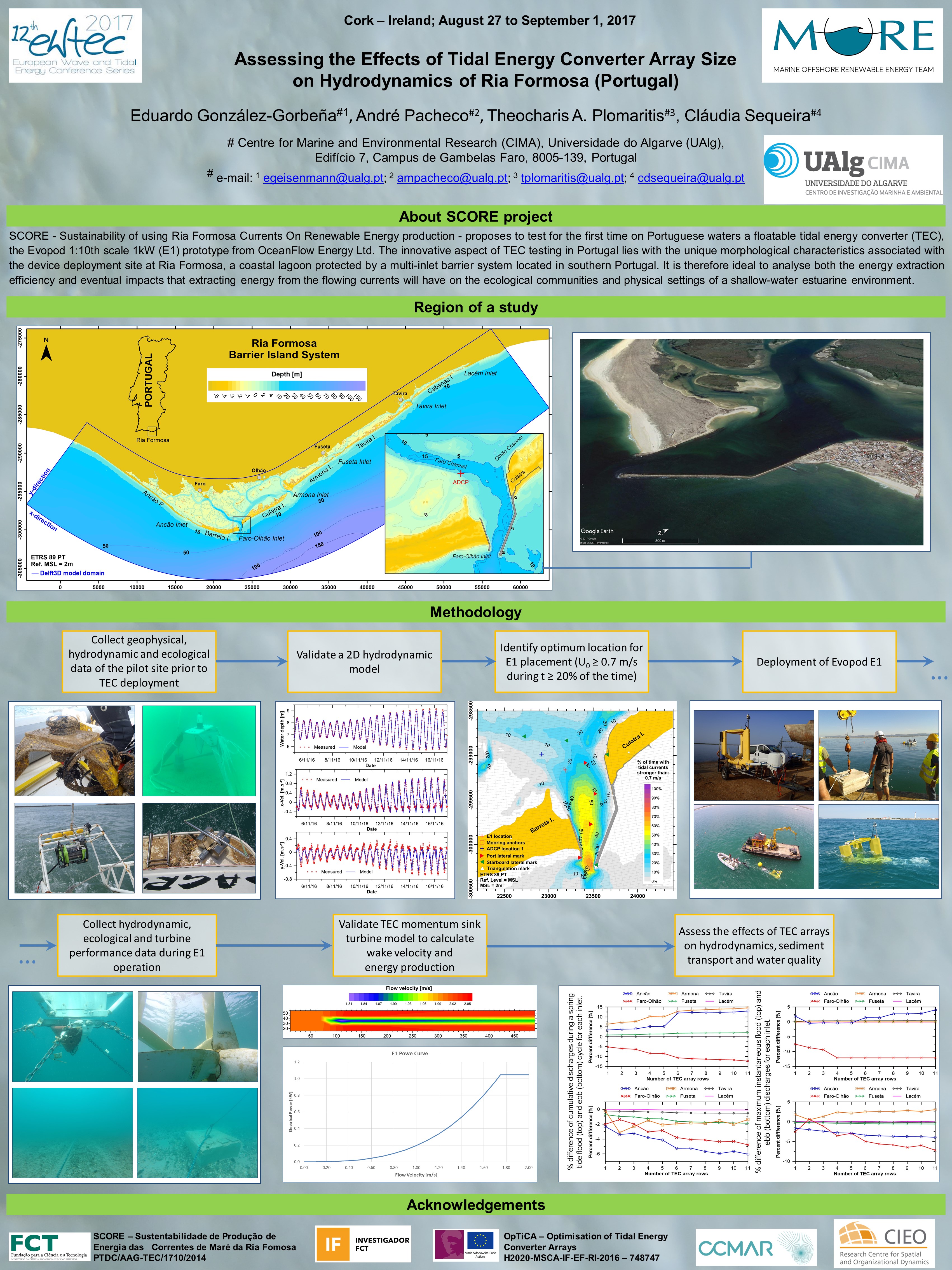
Project OpTiCA borned from the SCORE project, which is coordinated by Dr. André Pacheco. The general objective of SCORE is to examine a small-scale tidal current turbine (Evopod E1) to be deployed in a shallow-water estuarine environment, looking at both the impacts of the turbine on its environment and the effects of the flow conditions on the turbine.
The first stage of OpTiCA consisted in the monitoring of a real TEC deployment. The device deployed is a semi-submerged floating mono turbina Evopod (1kW), a 1/10th scale prototype. For this purpose several surveys had to be conducted before and after the TEC deployment, including bathymetric, ADCP, and hydrophone surveys. Maintenace activities were also performed to ensure the operation of the device during the whole period of operation.
It follows some of the pics related with the SCORE project.
